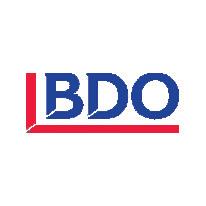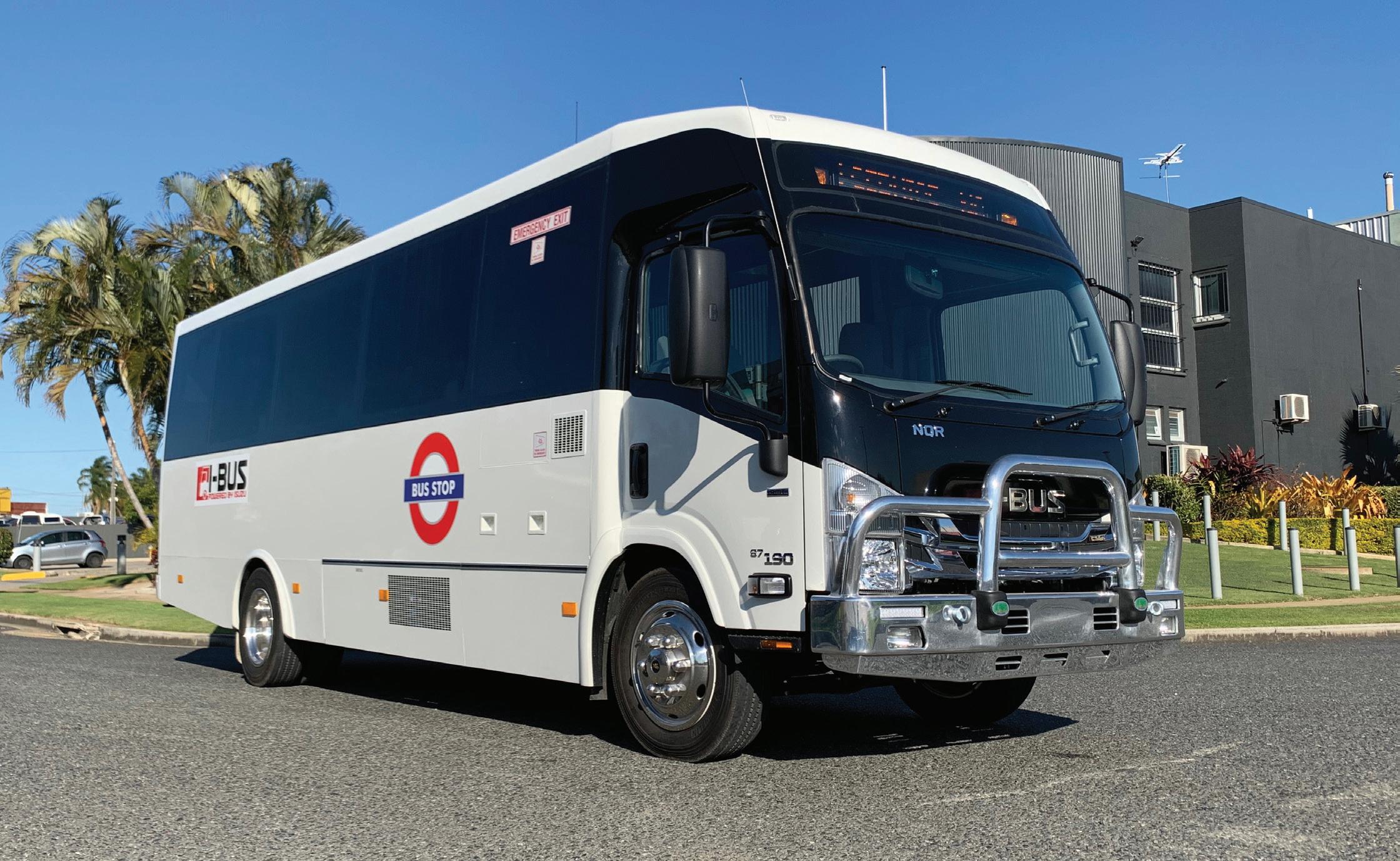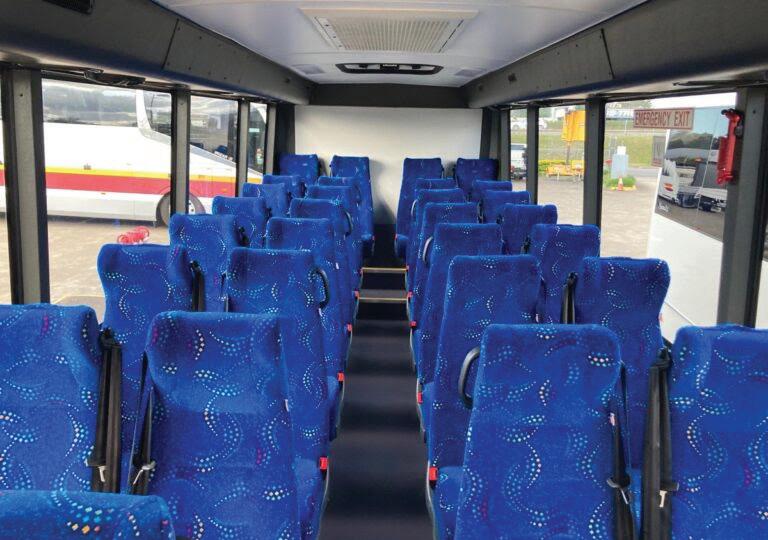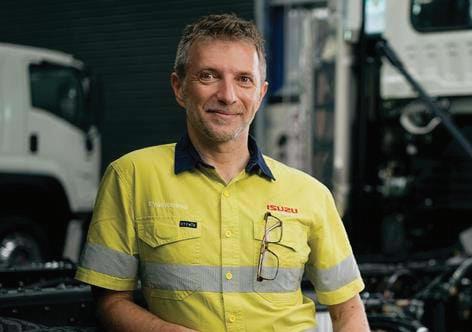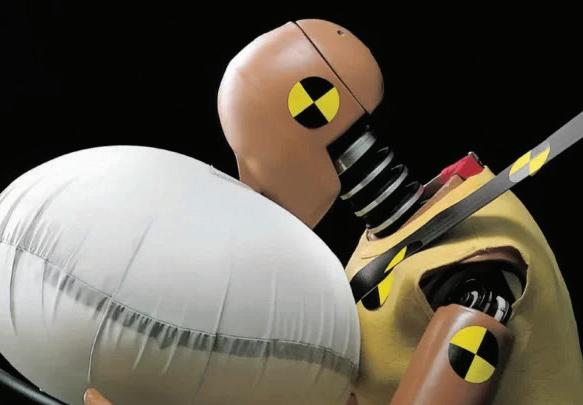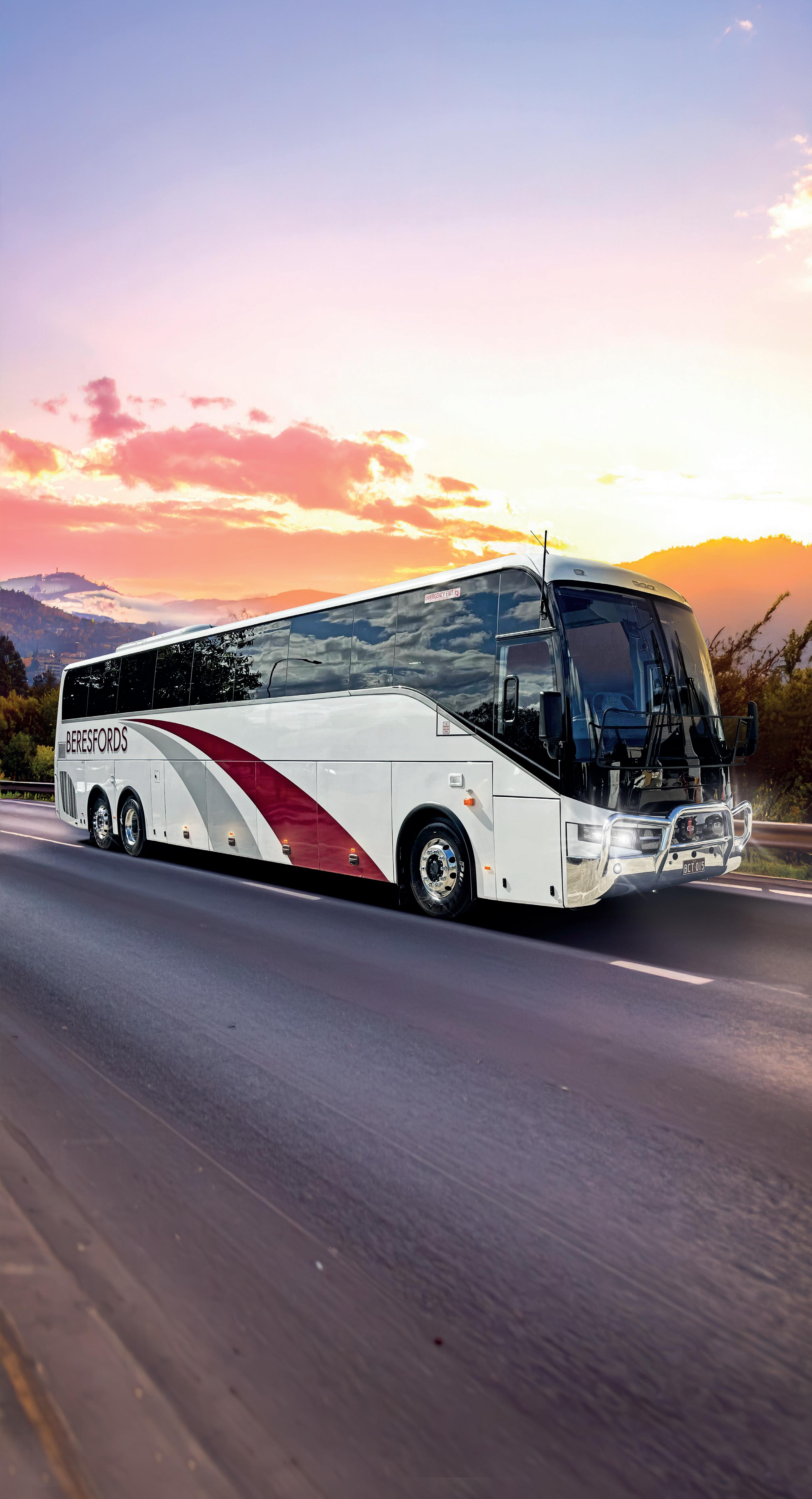

Discover the Power of Prestige with
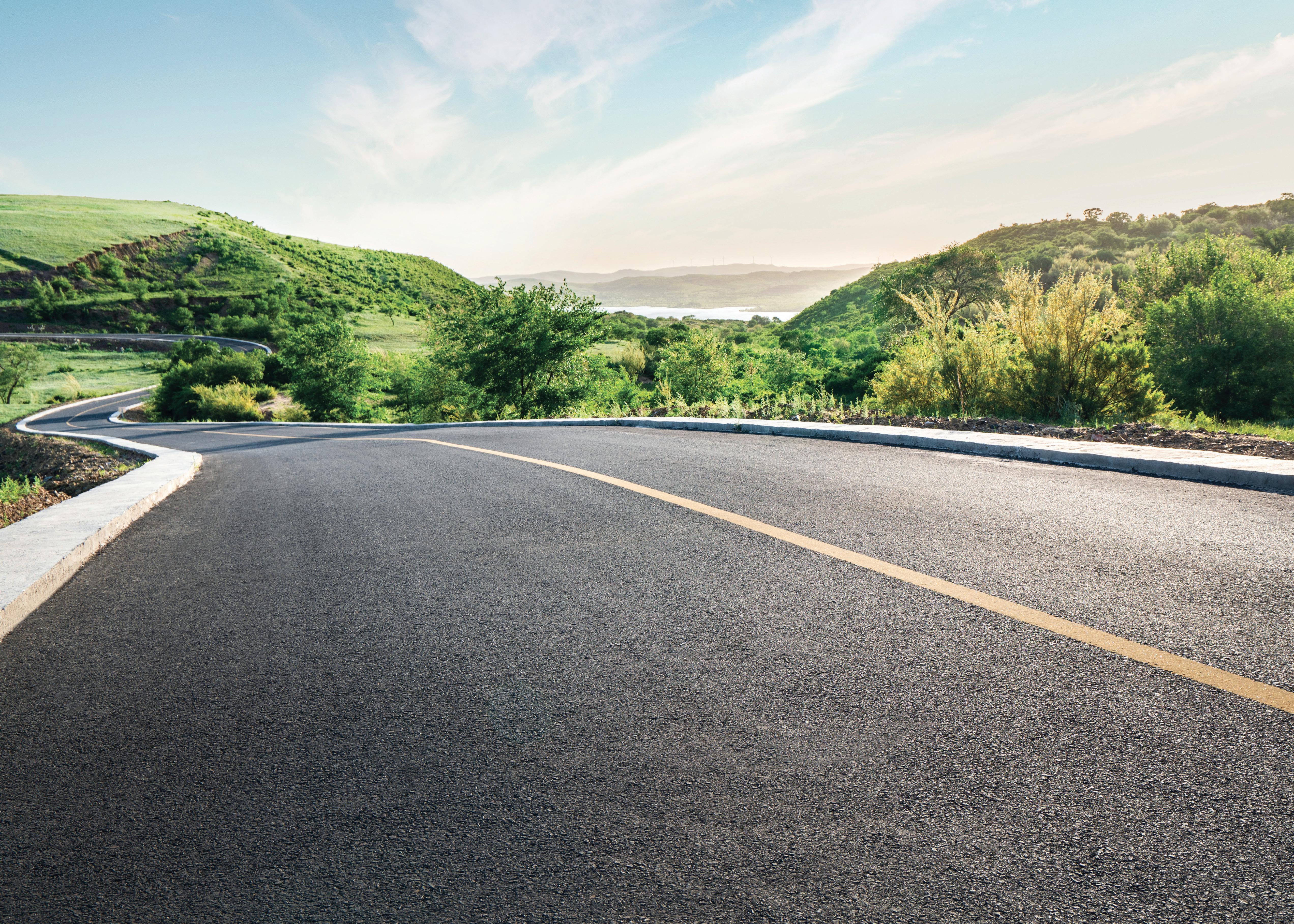
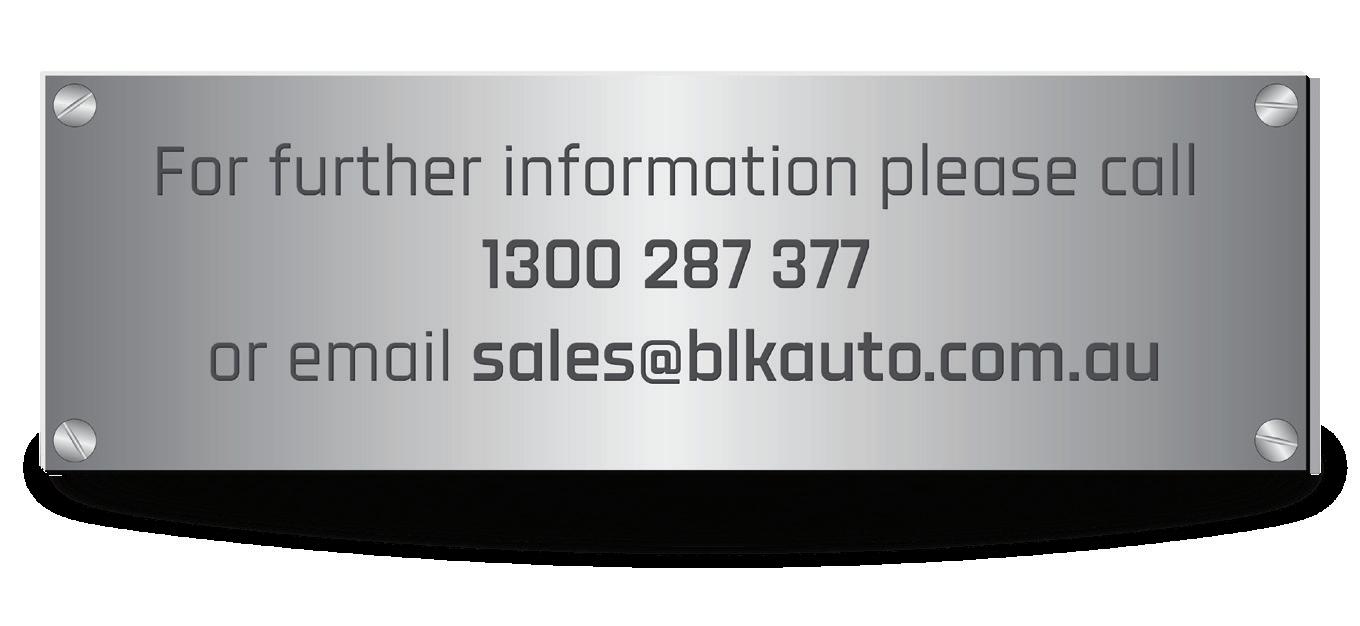
PRESIDENT
3
The flagship of our fleet. Designed for long-distance travel with premium features, spacious interiors, and unmatched passenger comfort.
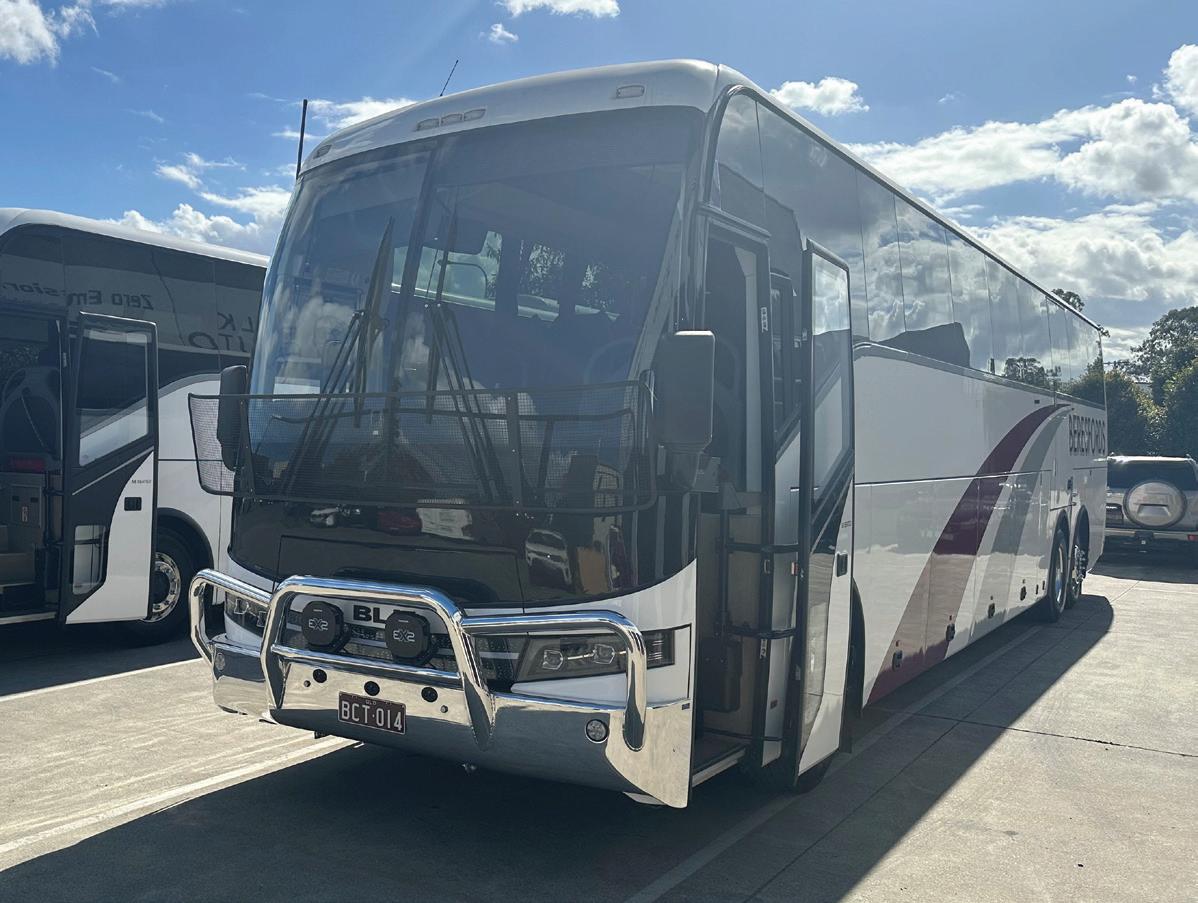
PRESIDENT
2
A sleek and stylish all-rounder, ideal for touring, school runs, or charter work — where versatility meets comfort.

PRESIDENT 10
Sophisticated modern midi coach at a competitive price.
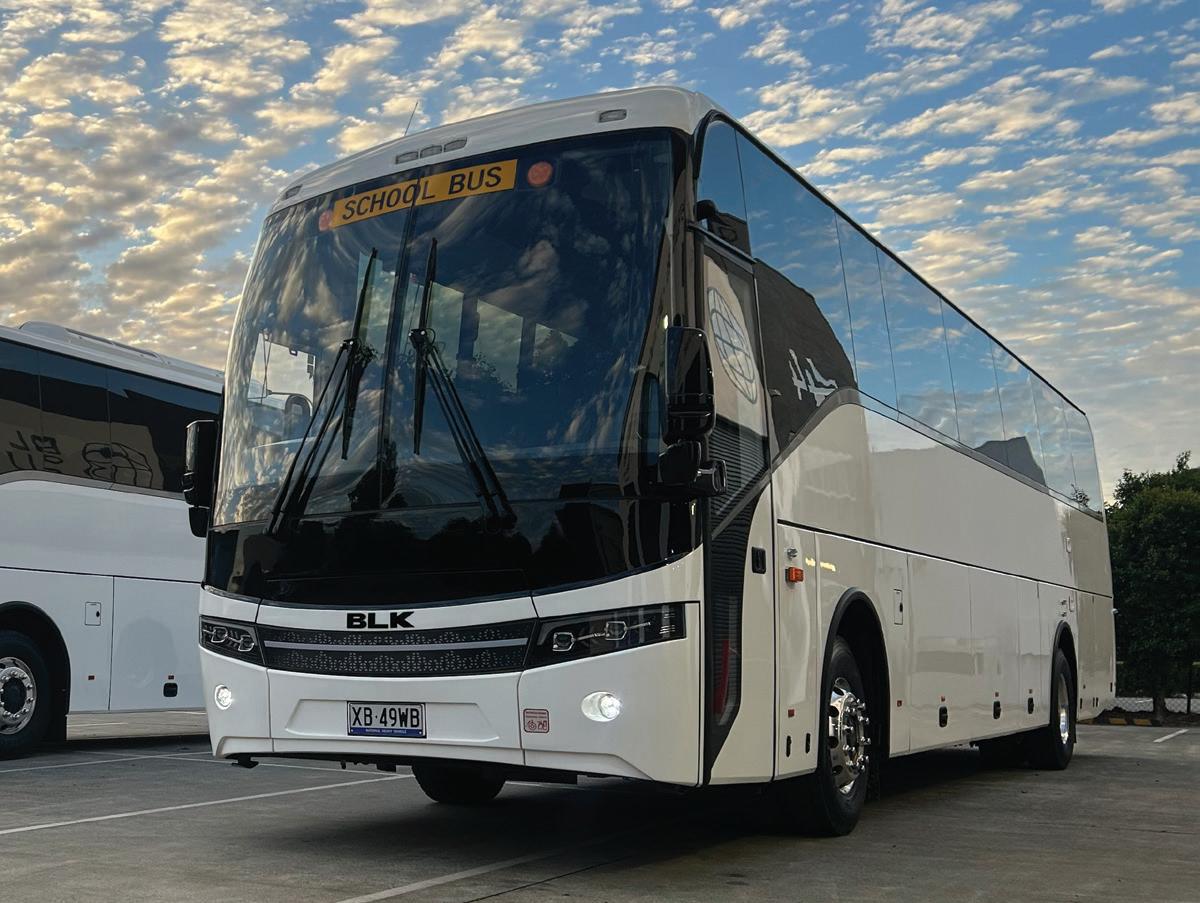
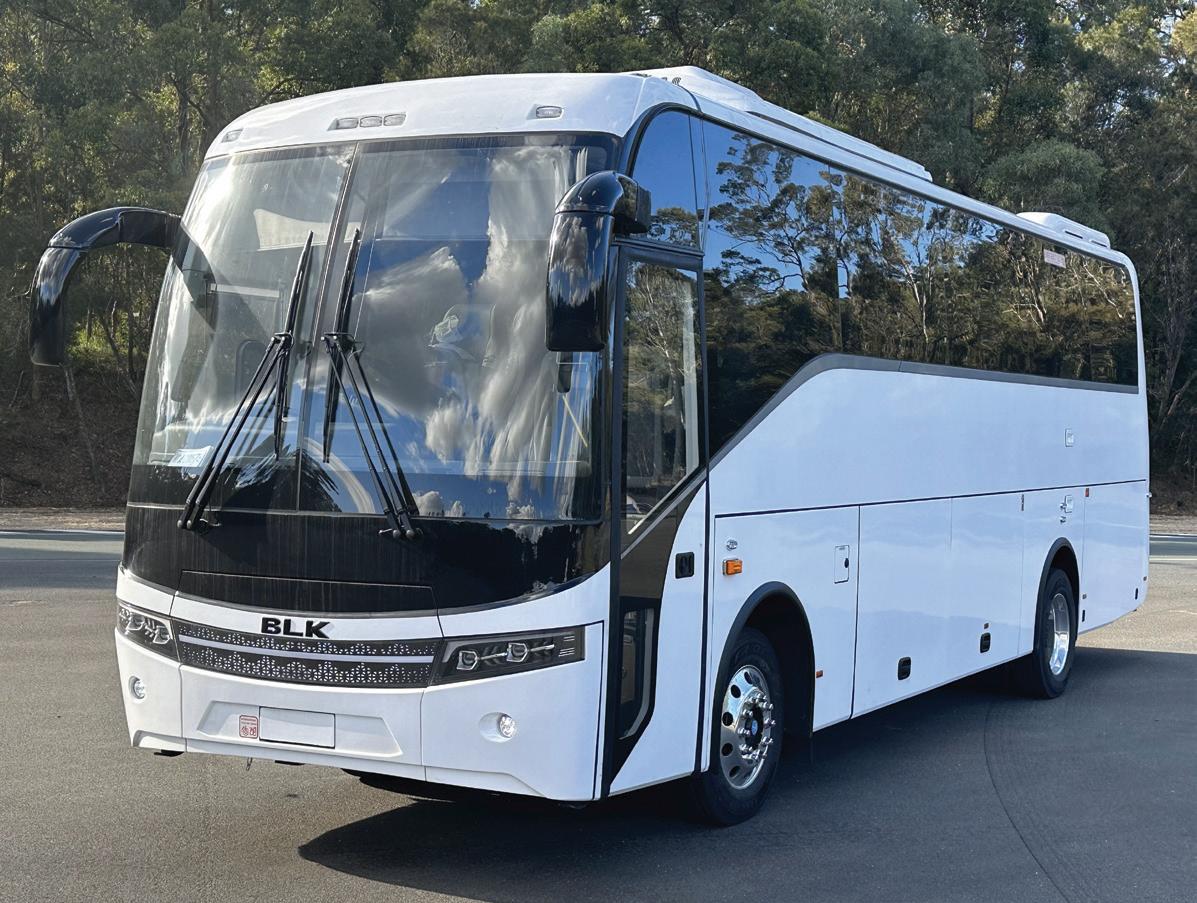
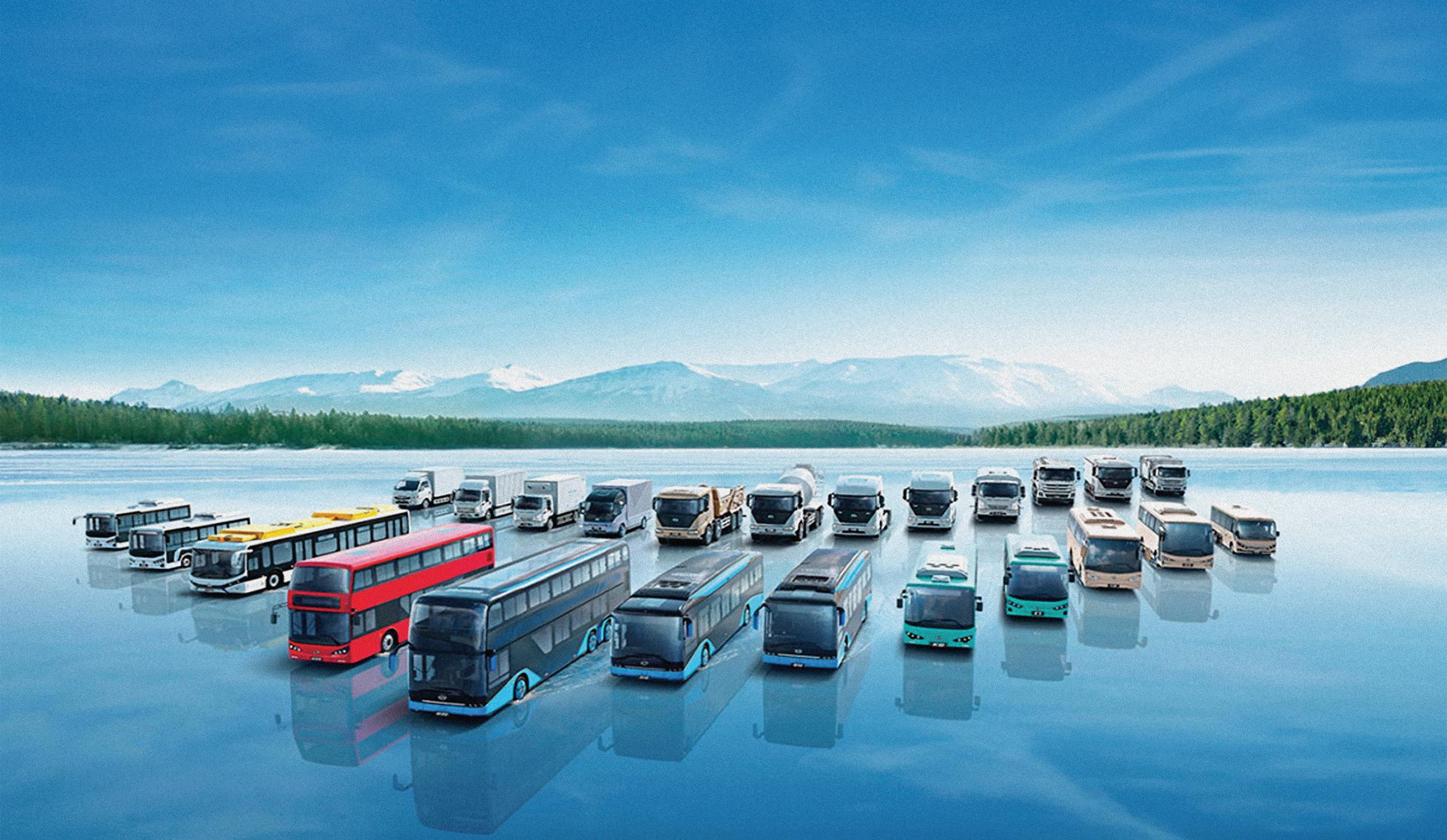

BYD Designed, Proven in Australia.
Technology is central to BYD’s DNA, and its ongoing research & development ability is vital to BYD’s rapid development. BYD’s cutting-edge technology can transform lives and improve the world thanks to “technology-based, innovation-oriented” development philosophy. BYD has successfully built an industryleading suite of platforms, and its world-leading advanced technologies are tried and tested in the world’s most demanding environments before market launch.
BYD COMMERCIAL VEHICLES
BYD’s dedicated Commercial Vehicle Research Institute engages in extensive R&D of the whole vehicle and chassis for the pure electric bus and vehicle fleet use in public transport globally.
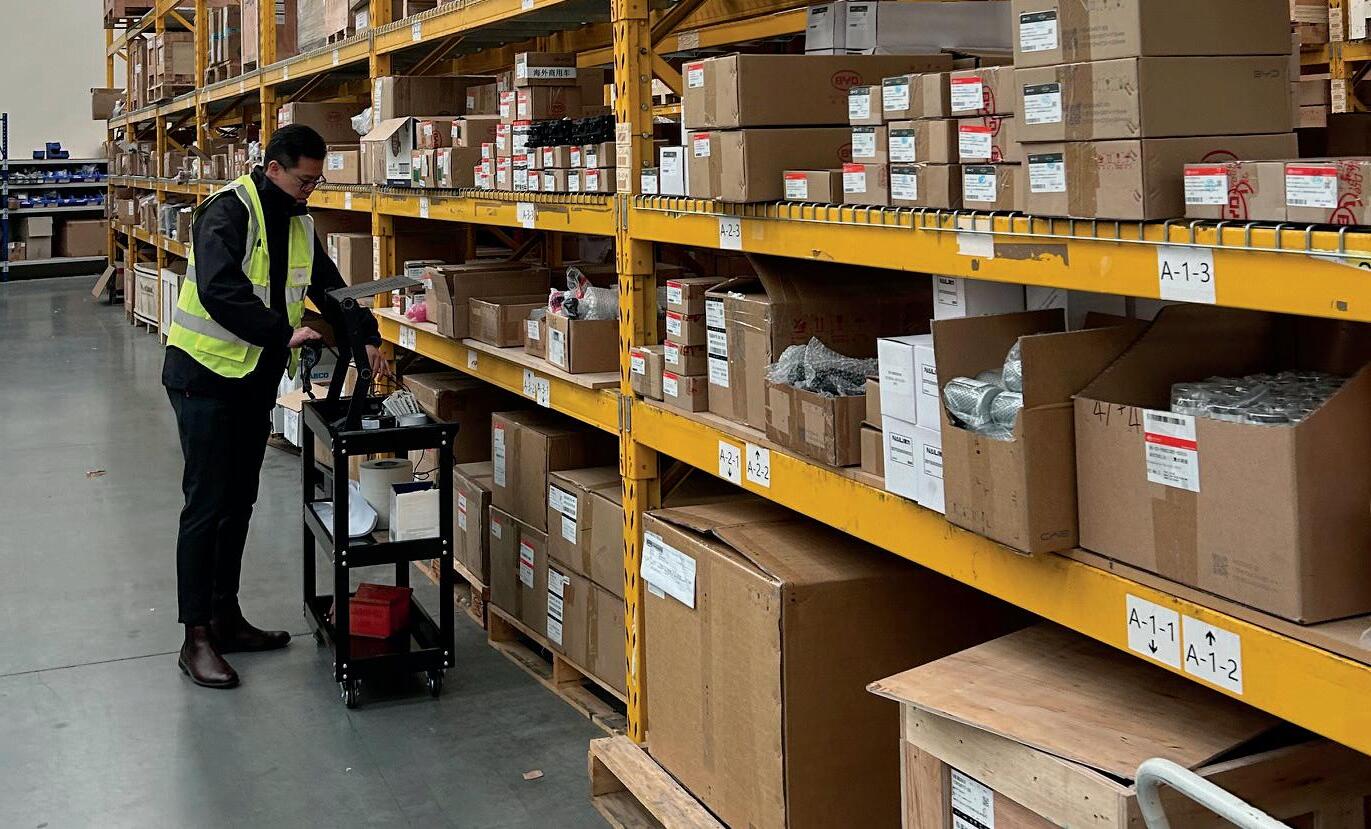
BYD Commercial Vehicles are available in Australia, sold and distributed directly by BYD.
BYD Commercial Vehicles has streamlined service and support to keep your fleet running with minimal downtime. Our industry-leading electric buses and trucks are backed by BYD’s global expertise and innovation.



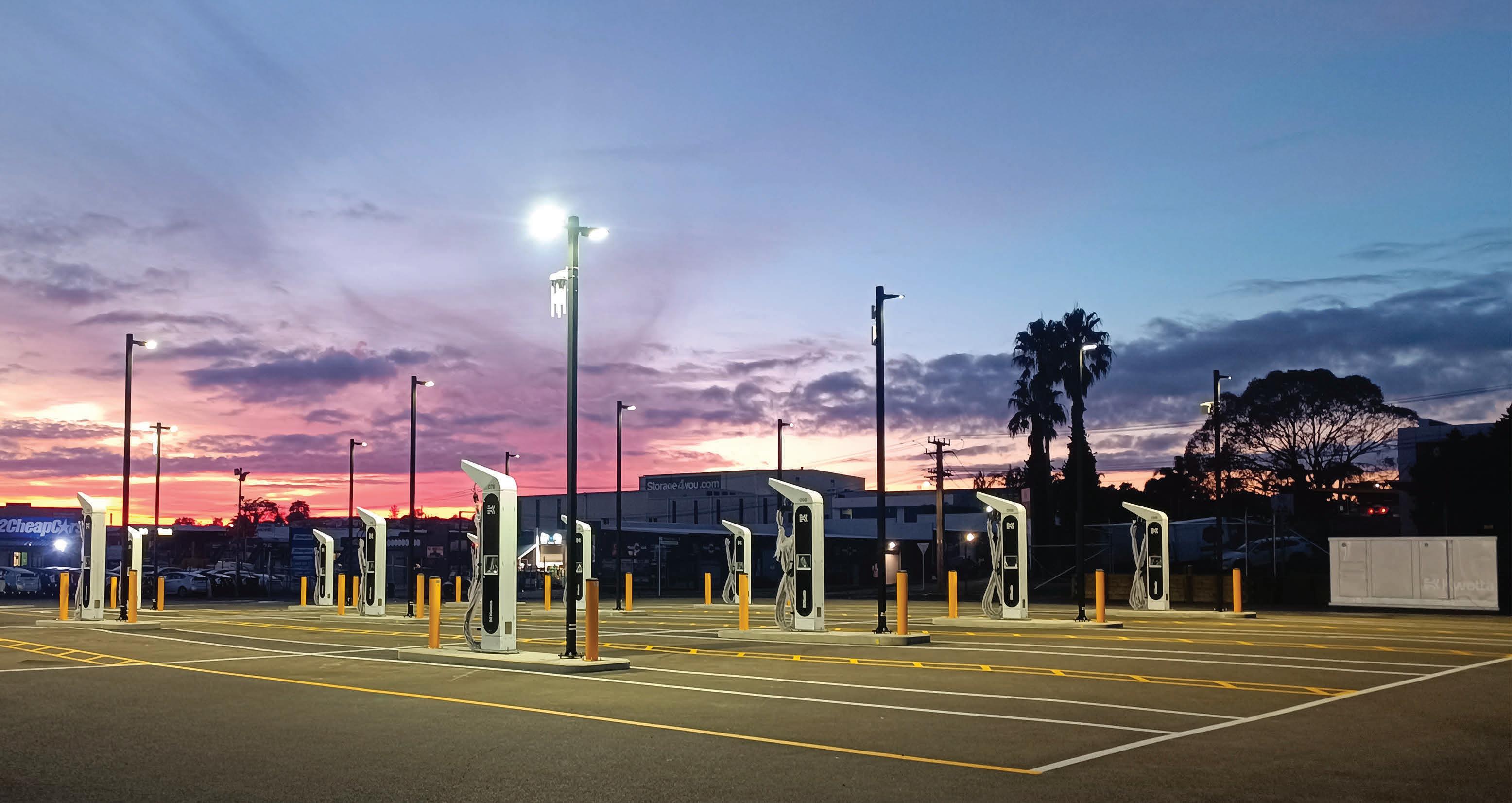
Faster connection
Kwetta technology can accelerate your grid connection approvals with network providers by more than 60%.
Smaller footprint
A single fully integrated solution takes up less than half of your depot space - compared to traditional solutions.
Easy scaling
Traditional solutions require overinvestment or hit you with high costs when you upgrade. Kwetta provides you with a one-time grid connection and modular upgrades without rework or regret.

Bus operators face complexity everywhere they turn. Whether it’s space, grid delays or cost overruns. We asked ourselves, ‘What if we could electrify a bus depot with a single piece of hardware, from grid-to-plug.’
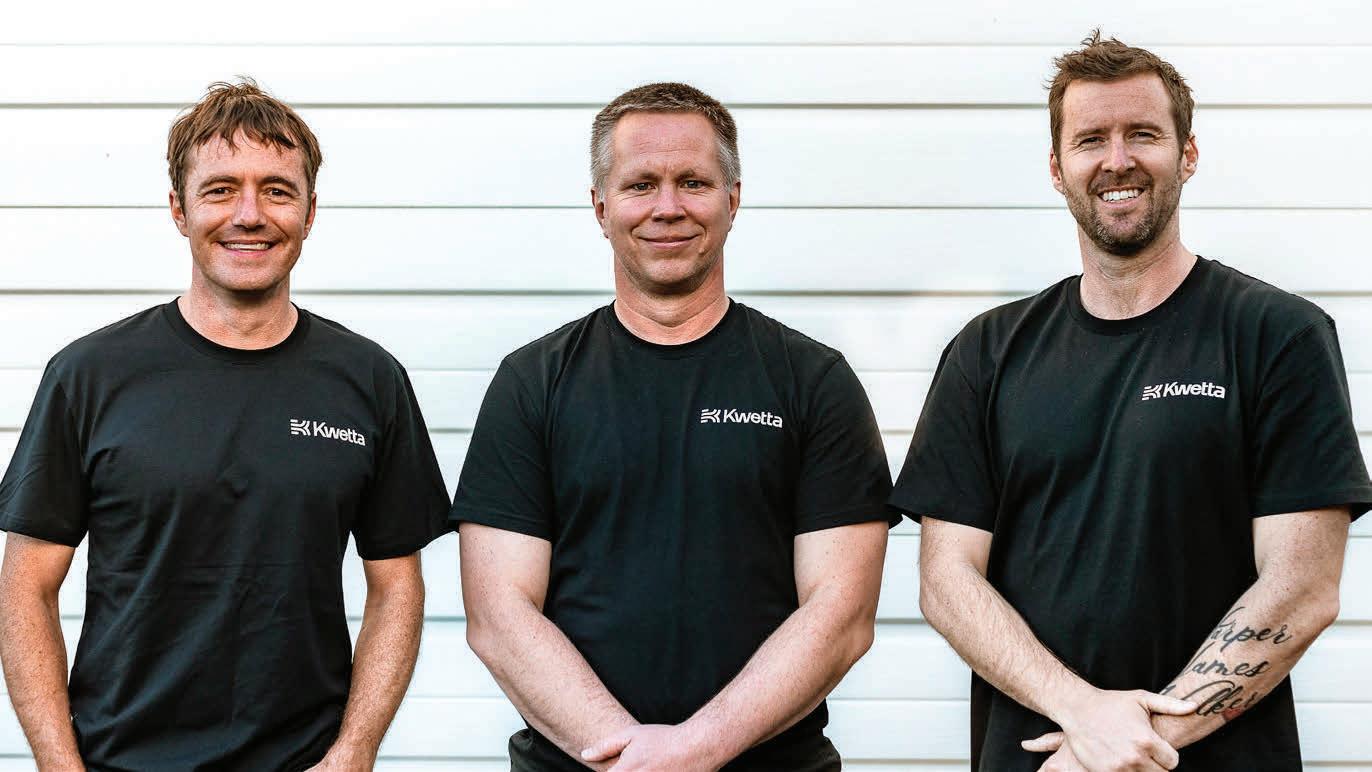
Bus operators face constant pressure to electrify quickly, reliably, and cost-effectively—but complexity strikes from every angle. Grid connections, fleet and grid modeling, oversized equipment, and inflexible upgrades threaten timelines, budgets, and your depot operations.
“When we started Kwetta in 2021, we spent a lot of time inside bus depots, speaking directly with operators, says Dustin Murdock, CEO and Co-founder. It quickly became clear how critical—and how incredibly complex—these depots are.
Operations run down to the minute; there’s no room for error or delays. Traditional electrification
meant dealing with nine separate designs and managing more than ten different contractors, then somehow jamming all that equipment into an already crowded depot with zero extra space.
It was clearly too complicated. So, we asked ourselves, ‘What if we could electrify a bus depot using just two equipment vendors and a single contractor?’
Then we built exactly that solution. By December this year we’ll have 17 charging sites operating across Australia and New Zealand.”
— Dustin Murdock, CEO and Co-founder, Kwetta.
Start your depot assessment at kwetta.com
Pictured right L—R Dr Robert Turner, Dustin Murdock, Mike Lazelle, Co-founders at Kwetta.
Full plate
As we start a new financial year, an array of news sets the Australasian bus and coach industry on a reshaped trajectory full of change and progress
The Australian bus and coach industry is full of news currently, with a raft of changes and updates keeping the wheels turning at a high rate. In Victoria, the switch over to new MZF contracts has dominated attention, with various family operators having to sadly farewell their final government contract runs in the lead-up to the new financial year. This means Dyson Group, CDC Victoria and Kinetic have the power in Melbourne and its suburbs as the trio usher in a new era of zero-emissions transport. July 1 also saw these operators be required to only order new zero-emissions vehicles. At the same time, bus driver strikes continue to rear their head in the state, while a lifeline for bus orders was granted by the state government.
Continuing on the Australian operator trend, it was a pleasure to sit down with Busways’ new CEO Will O’Neill to chat about the NSW giant’s future. While Will signals a shift away from the famous Rowe family’s day-to-day leadership, our in-depth chat on page 34 highlights the growth strategy that remains as consistent as ever for the largest fully Australian owned bus operator.
The Australian bus and coach industry is full of news currently, with a raft of changes and updates keeping the wheels turning at a high rate
Whether it be Ryan Bros Bus Service, Kastoria Bus Lines, Broadmeadows Bus Service or Panorama Coaches, the bus industry recognises the contribution and wonderful services these operators have all offered to Victoria’s public transport network over the years. June 30 served as a sad day as yet another Australian state farewelled popular public transport route operators from service, with Victoria following New South Wales in privatising the network and narrowing the pool of local family-owned companies in the game. Our coverage of the events that unfolded in early July can be read from page 48 as the final government contract runs of longstanding Victorian operators went ahead.
While some family operators had to bid farewell to their government runs, the July edition of ABC Magazine shines a spotlight on the other existing local operators who are continuing to provide valuable transport services to communities around the country. Our cover story encapsulates this spirit, with BLK Auto and Bundaberg Coaches working together to provide high-quality transport to a range of customers in Australia’s north. From page 22, traverse the ever-expanding world that Bundaberg Coaches is working in, from Queensland mines to interstate charter trips to the snow, and the valuable role that BLK’s tailor-made coaches are playing in these unique operations.
On the vehicle technology side, ABC ’s resident bus reviewer Paul Aldridge was in full swing in July as he headed to Sydney’s outer suburbs to take Yutong’s D7E, courtesy of VDI Australia, for a ride around the block. Whether it be the complete lack of noise or the comfortable ease of charging the electric bus, Paul provides his thoughts from page 27. Be sure to check out the video via the QR code too!
The July edition has a special segment for zero-emissions bus infrastructure and safety, with the likes of Fire Protection Technologies (page 30) discussing how its products are helping protect motorists, passengers and drivers safer during the rare instances of thermal runaway. The special focus also led to ABC finding out about E-T-A’s latest tech on page 32.
All of this and more is part of another vibrant edition of ABC, with another highlight being our interview with incoming BusVic executive director Peter Kavanagh on page 51 about his goals for the state association moving forward. As the industry sits on a new horizon, we hope you enjoy the array of stories before you in the July edition of ABC Magazine
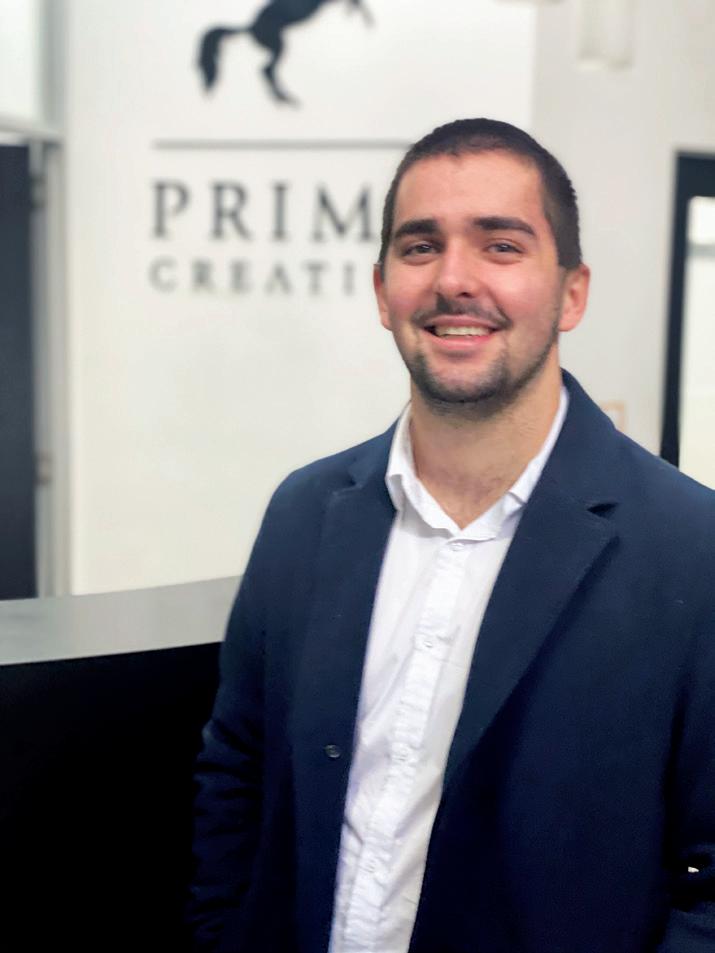
Sean Mortell EDITOR, ABC
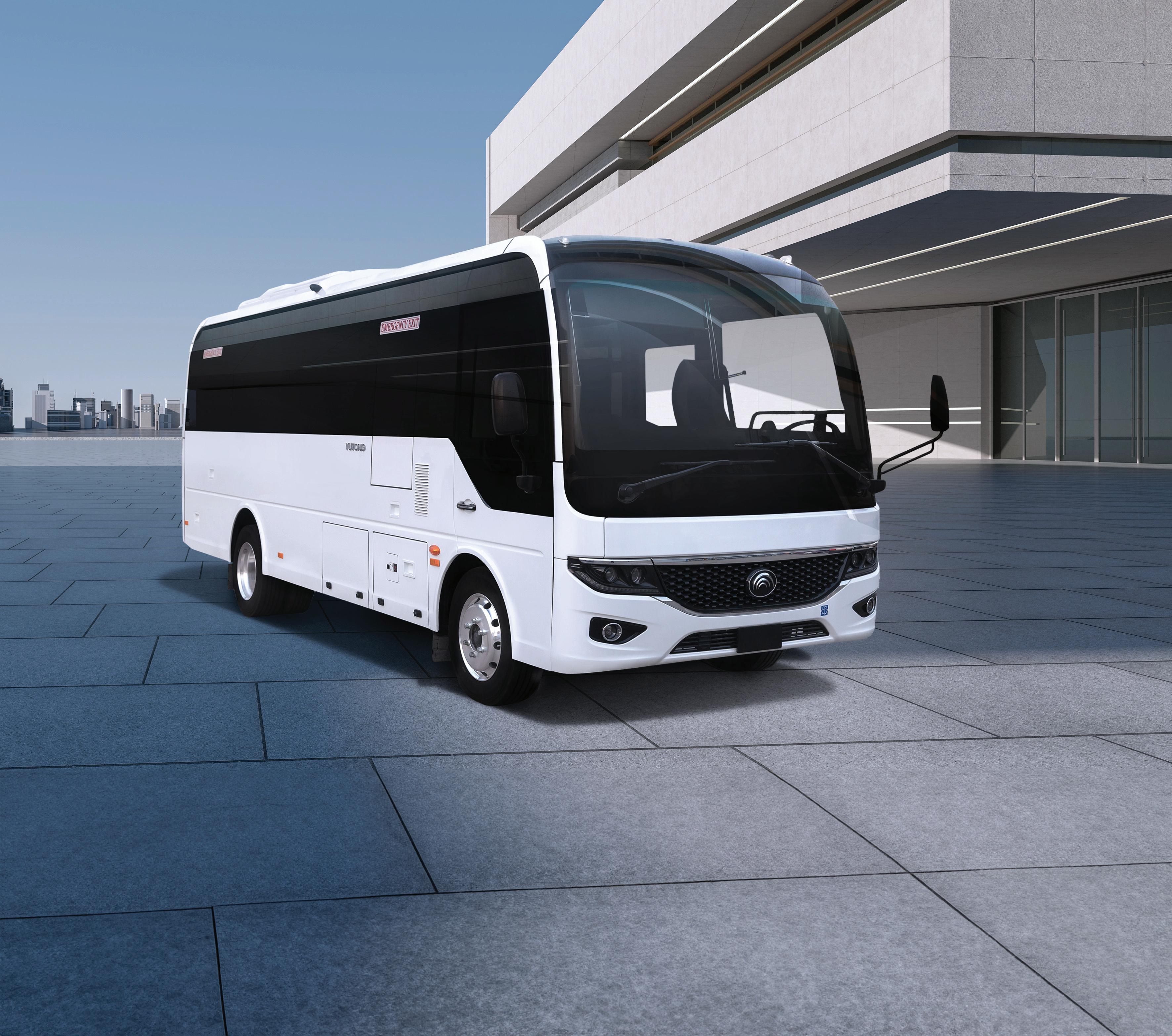




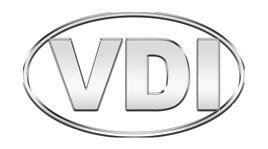
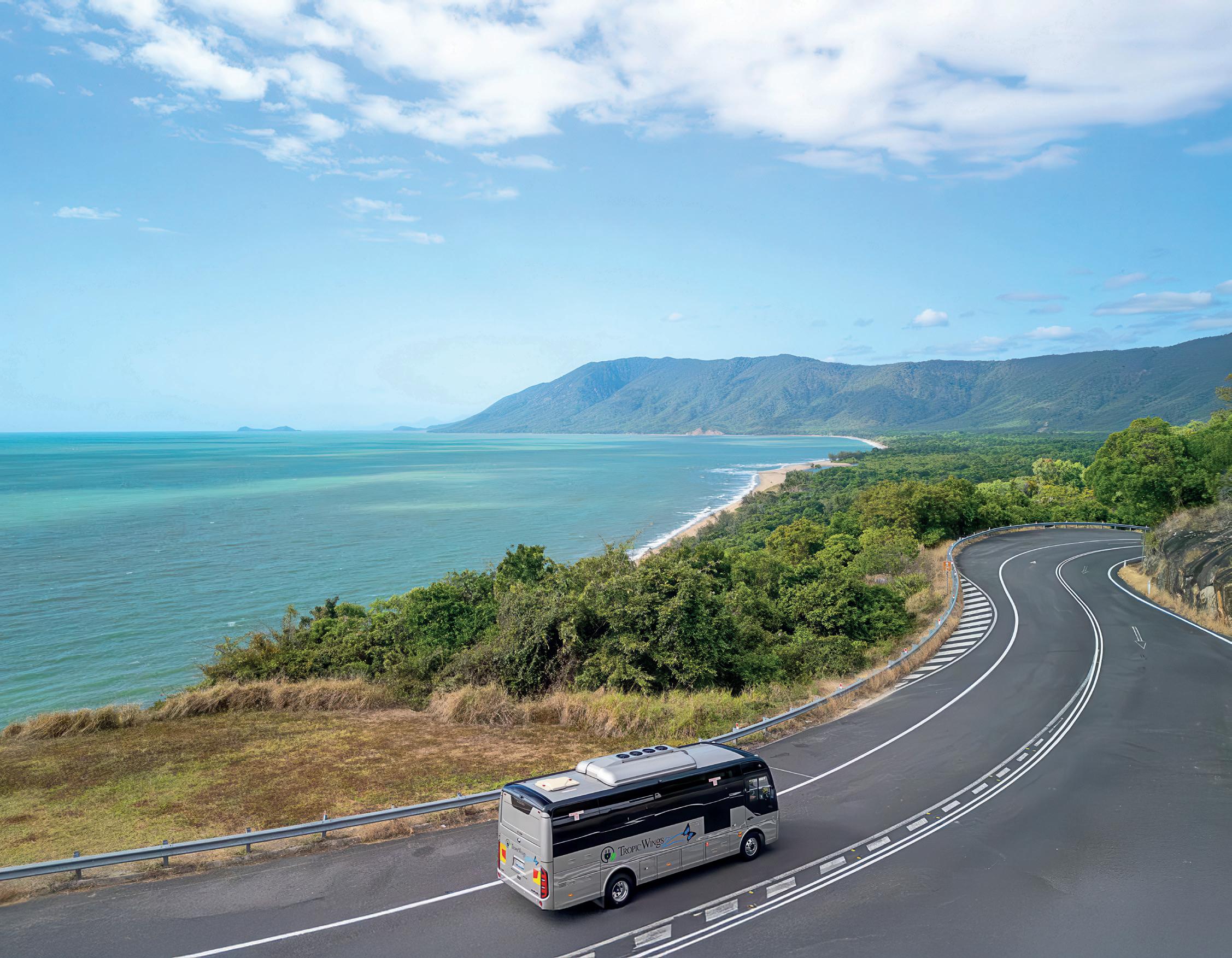
in the know
08. editorial | ignition FULL PLATE
As we start a new financial year, an array of news sets the Australasian bus and coach industry on a reshaped trajectory full of change and progress
12. news | all aboard
Check out the latest news from around Australia and the world
features
21. column | bic BUS SAFETY: NOT EXPENSIVE, PRICELESS
The BIC is continuing to focus on making buses safer for passengers of all ages, including recent seatbelt education campaigns
22. cover story | blk auto BUNDABERG BEACONS
Bundaberg Coaches’ two new BLK coaches are putting a popular north Queensland town on the map for a whole new reason
27. bus review | vdi NEW KID ON THE BLOCK
In ABC ’s latest test drive, Paul Aldridge took Yutong’s D7E around Sydney to see how the nifty electric bus works in suburban and community applications
30. feature | fire protection technologies TIME TO TICK ALL BOXES
Fire Protection Technologies is stepping up to provide effective fire suppression solutions that suits the evolving electric transition
32. feature | e-t-a SWITCHED ON
E-T-A ElectroTechnical Applications’ newest innovations are silently powering the transition to zero-emission vehicles
34. feature | busways DRIVER’S SEAT
Since January, Busways has been led by a new CEO. But Will O’Neill is quickly proving that he’s up to the challenge of leading the longstanding operator
38. feature | yutong DRIVING REAL IMPACT
Yutong has had its eye on bringing over its electric bus technology to Australia. Its partnership with Tropic Wings allows it to be at the forefront of sustainable change
40. feature | bci SUPPORT ON THE MOVE
As a regional WA hospital undergoes a major transformation, BCI and GoWest are stepping up to ensure frontline healthcare workers get to and from work safely
42. feature | byd BEYOND THE BUS
While Australians may only know BYD for its buses and cars, the global manufacturing giant has been making its mark on the EV space for decades
44. feature | scania DRIVING FORWARD
Scania Australia’s revised line-up is gearing up to become a favourite for operators on the roads
46. feature | volvo ELECTRIFYING WITHOUT COMPROMISE
Volvo Bus Australia’s electric range is building on the trusted models that have been serving Australia’s roads for years
48. feature | industry issue FINAL RUNS
Local Victorian operators have had to say goodbye to longstanding runs as the MZF contracts began operating at the start of July
51. column | busvic NEW BEGINNINGS
The new financial year sees BusVic welcome a new executive director, with Peter Kavanagh laying out his goals for the state association
55. competition | best bus MATARIKI MARVEL
Grady Weatherley-Connell has come back with vengeance, taking out the Best Bus title for a second time
departments
58. factory facts | bus deliveries JUNE DELIVERIES
Check out the latest bus and coach supplier sales data collected and recorded for you to review and see how the market fared in June
62. back seat | bus restoration FORMER GLORY
Driven by passion, Hamish Withington is on a mission to rescue and restore vintage buses to keep Australia’s transport history alive
EDITORIAL & DESIGN
Managing Editor: Geoff Crockett
e-mail: geoff.crockett@primecreative.com.au
Editor: Sean Mortell
e-mail: sean.mortell@primecreative.com.au ph: 0468 577 166
Assistant Editor: Tiarna Condren
e-mail: tiarna.condren@primecreative.com.au
Art Director: Daz Woolley
Designer: Apostolos Topatsis
PRINTING
Brougham Press
ADVERTISING
Sales Manager – South:
Courtney Burton ph: 0481 736 890
e-mail: courtney.walker@primecreative.com.au
Business Development Manager – Bus: Sylvie Hanlon ph: 0466 545 664
e-mail: sylvie.hanlon@primecreative.com.au
SUBSCRIPTIONS
www.busnews.com.au/subscribe ph: +61 (0)3 9690 8766
Mon-Fri 8am-4.30pm (EST) e-mail: subscriptions@primecreative.com.au mail: 379 Docklands Drive, Docklands VIC 3008 Australia
Annual subscription rates (12 issues): Australia: $99* Overseas: $A170 (Australian air-mail only) *price includes GST
Cover image: BLK Auto
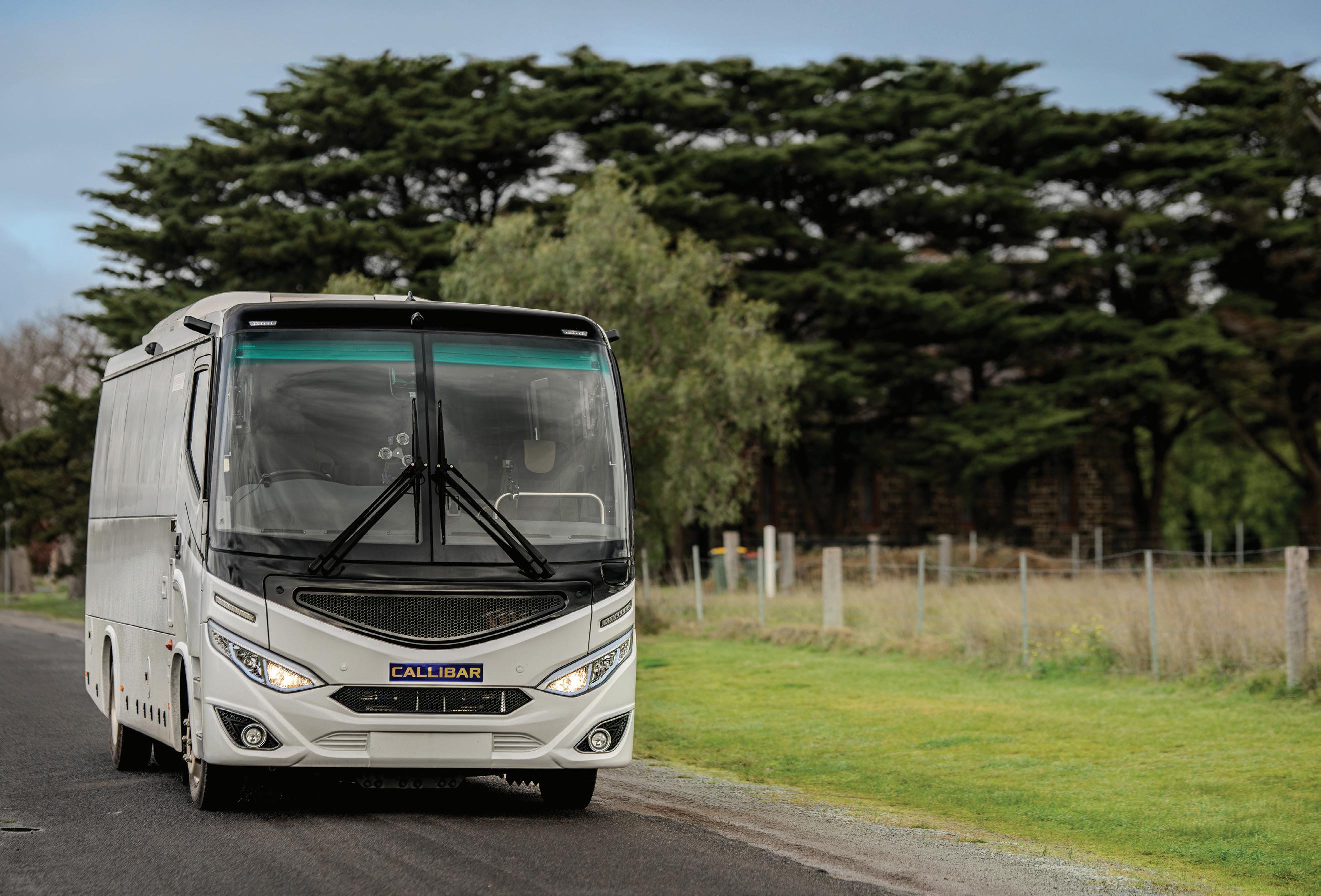
ISSN
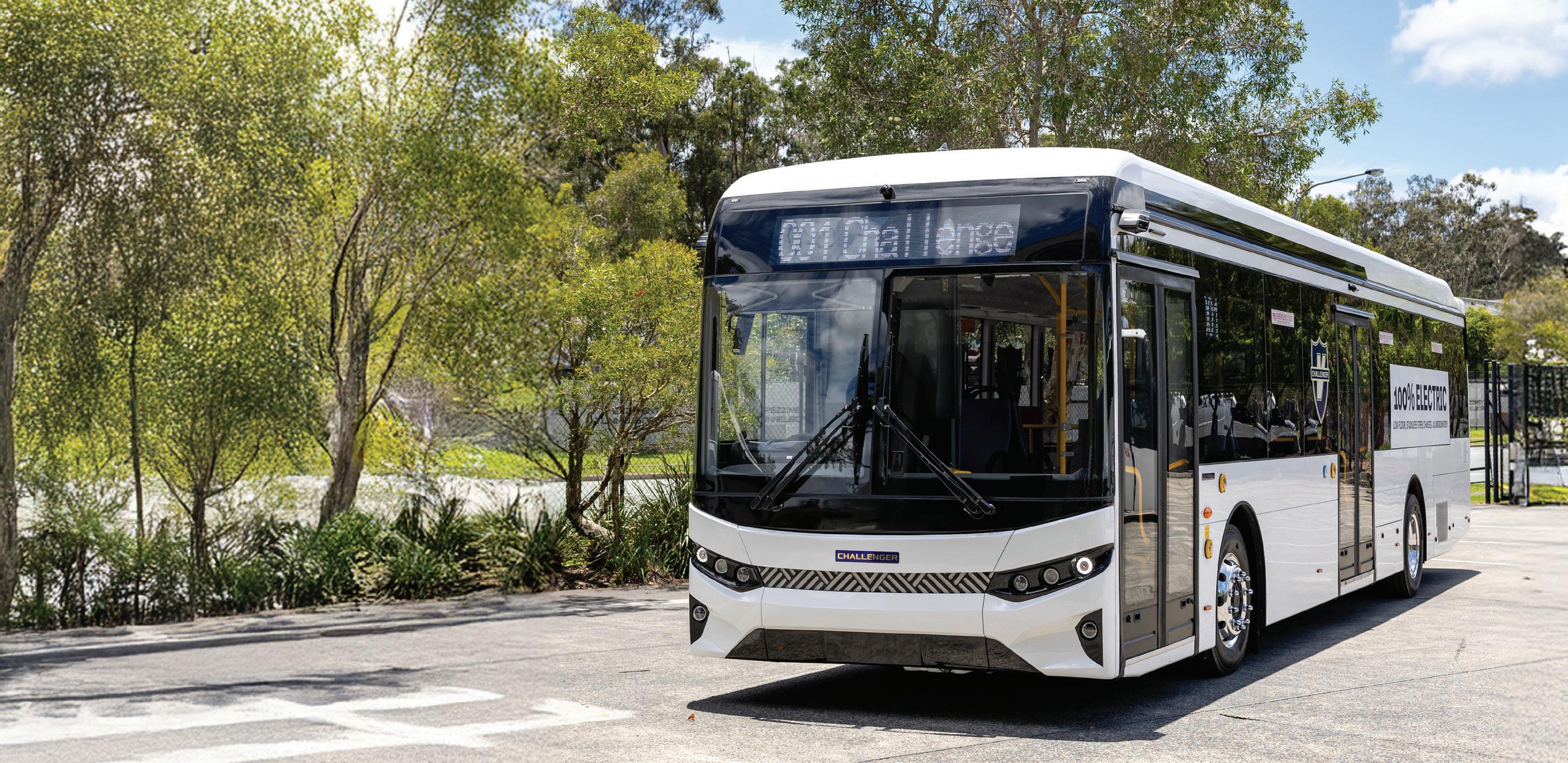
Image: Yutong


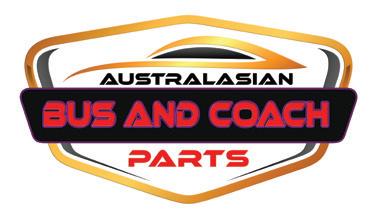
Victorian veteran exits bus industry
The retiring bus operator is a well-known member of both the Victorian bus industry and the state’s political history
A popular member of Australia’s bus and coach industry is preparing to leave the sector, with Ken Jasper AM announcing he will exit the industry mid-year.
At age 87, he has enjoyed many years in the sector as well as a thriving political career.
Originally from Wales, there have been four generations of Jaspers in Rutherglen operating a range of enterprises from bus transport to petrol stations and cafes.
An 1892 photo of his great grandparents and staff showcase when the family first started business that resulted in Jasper Bros Buses in Rutherglen as coachbuilders, blacksmiths and undertakers.
Based in Victoria’s north-east, Jasper Bros has run school buses for nearly 75 years, with Ken now
selling the company to Wangaratta Coachlines as he exits the industry.
The bus operation started in 1952 when Ken’s father and uncle bought the first school bus business in Rutherglen in 1952. Since then, Ken has operated three school bus contracts and done charter work for the schools the operator services.
Throughout this time Ken remembers
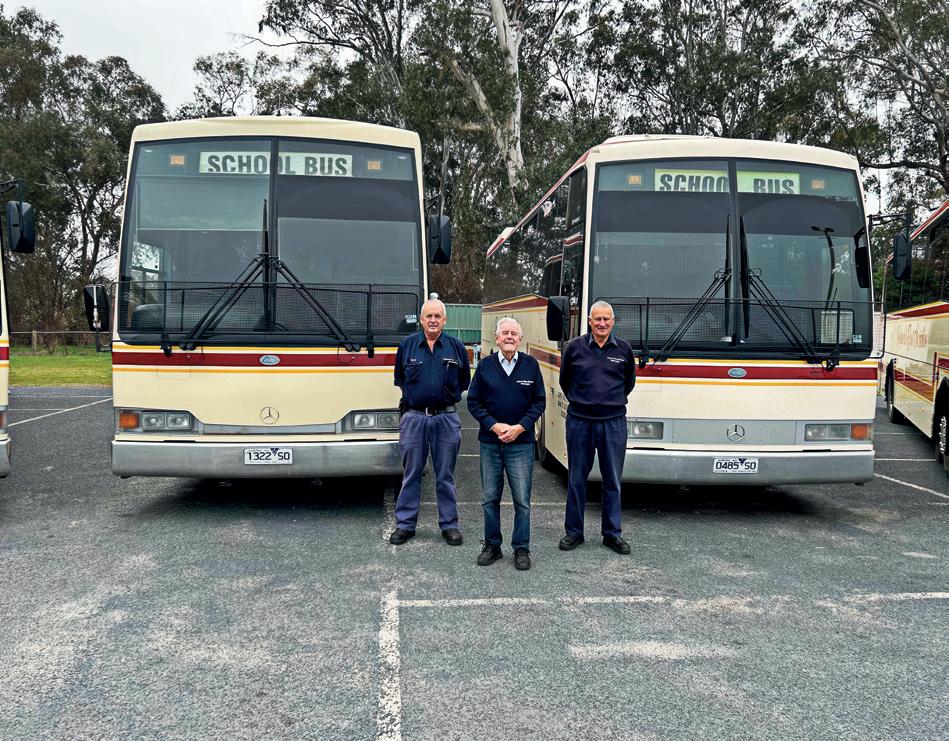
Western Melbourne scores major transport boost
The new and improved bus services in Melbourne’s west aim to connect communities to key local destinations
The Victorian government is delivering a significant boost to public transport in Melbourne’s growing western suburbs, with 470 new weekly bus trips rolling out in July.
From Tuesday, July 1, four major routes – 170, 180, 190 and 192 –offer more frequent services and extended operating hours, allowing buses to run later into the evening most days of the week.
The upgrade is improving connections to key train stations including Werribee, Tarneit and Wyndham Vale, while also making it easier for locals to reach shopping centres such as Pacific Werribee, Manor Lakes Central, Tarneit Central, and Wyndham Vale Square.
Whether it’s late-night shopping, heading home after work, or returning from the footy on a Saturday night, the expanded timetable is designed to better fit around people’s lives and support shift workers and weekend travellers alike.
Public and active transport minister Gabrielle Williams says the improvements reflect the changing needs of Melbourne’s growing outer suburbs.
“We understand the importance of buses to local communities which is why we’re getting on with improving routes and adding new services, especially in our growing suburbs,” she says.
“More evening and night services on our busiest routes reflect changing
White branded buses in 1948 through to Bedfords, Isuzus, Mercedes-Benzs and now two new Scanias.
Alongside this, Ken’s father and uncle also became GM Holden dealers in 1929, running the local dealership before selling it in 2012.
The Jasper family’s rich automotive history can still be seen today, as behind the café sits a free motorcycle museum with a couple of dozen bikes and other machinery, memorabilia and photographs.
During this time, Ken was also the Nationals member for Murray Valley in Victorian Parliament from 1976 to 2010.
He was awarded a Member of the Order of Australia (AM) at the Queen’s Birthday Honours in 2012 for his services as a member of Parliament for 34 years and to the community in general.
travel patterns, including the increase in people travelling to and from the city in the evening for our major events, hospitality and work.”
The extra services are part of a broader $162 million investment in new and improved bus services, announced in the Victorian Budget 2025/26.
In Werribee South, Kings Leigh Estate is connected to the public transport network for the first time, with services also increasing to the new Wyndham Law Courts and Employment Precincts.
A new Route 140 bus from Rockbank to Tarneit is offering a vital cross-suburban link through Truganina and improving connectivity between Melton and Wyndham.
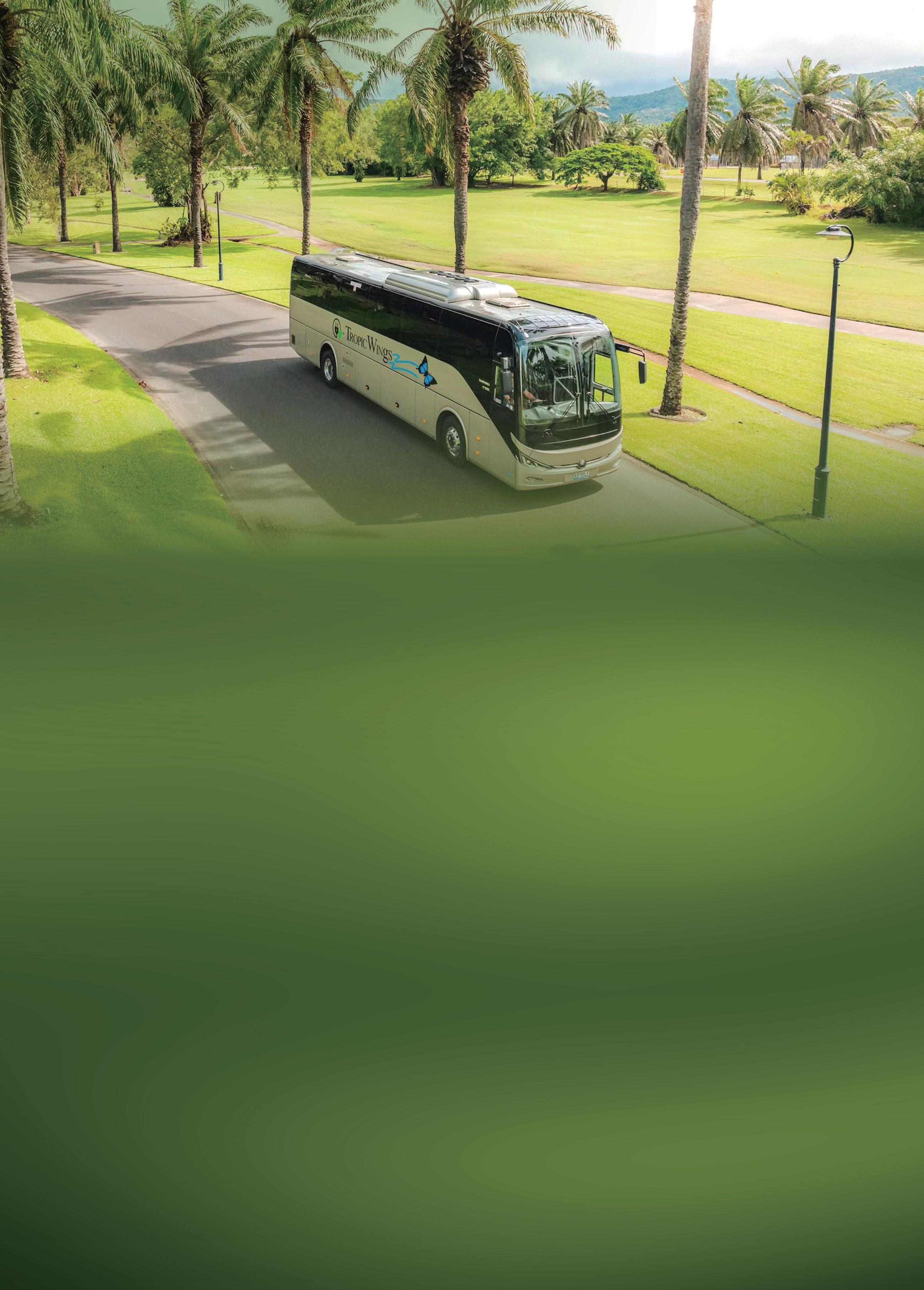
Below: Ken Jasper (middle) has sold Jasper Bros to Wangaratta Coachlines. Image:
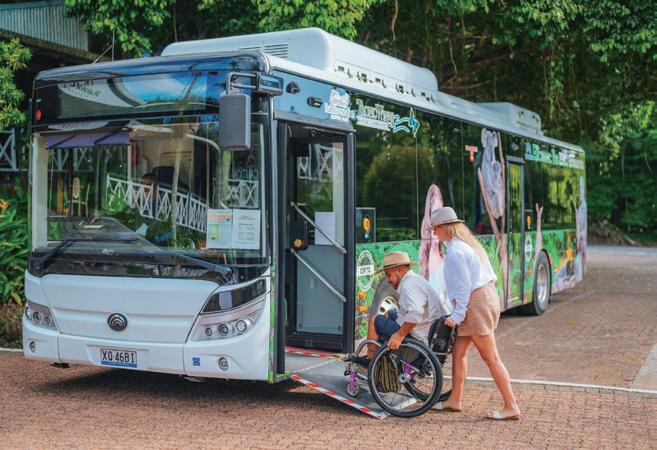
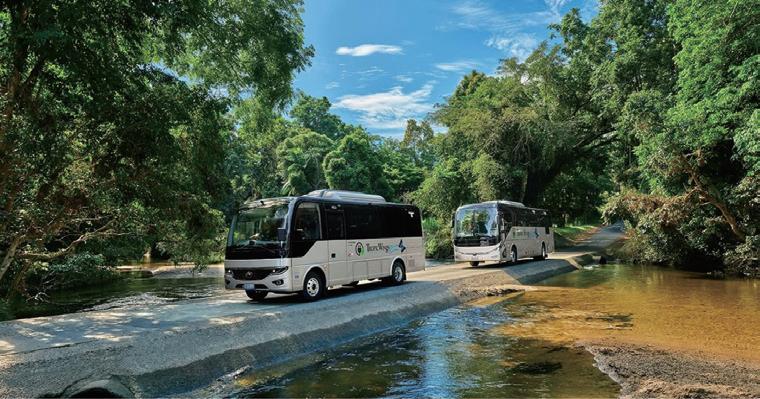
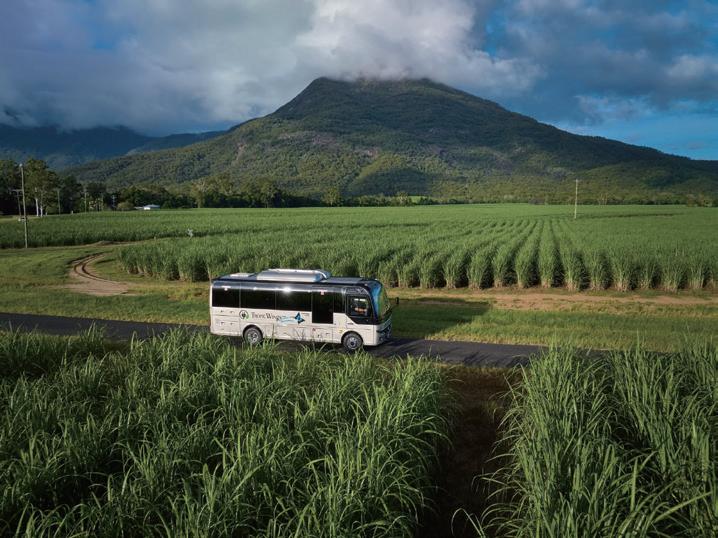
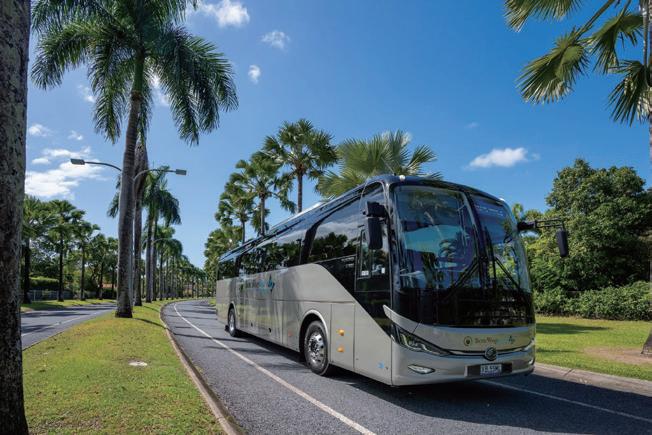

vdiaustralia.com.au
Love the journey
Empower your city with our next-gen buses – available in both diesel and EV versions. Built for safety, innovation, and reliability, our BCI Citiriders come equipped with the most advanced features to ensure a smooth, secure ride for every passenger. With a streamlined production and logistics system, we deliver faster than anyone else –because your city’s progress can’t wait.
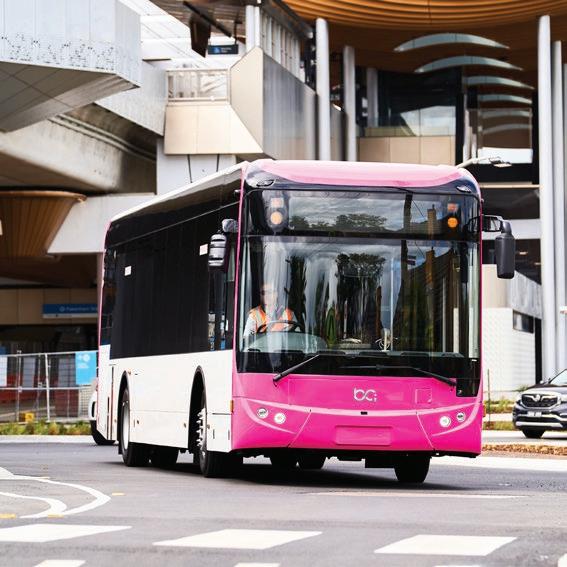
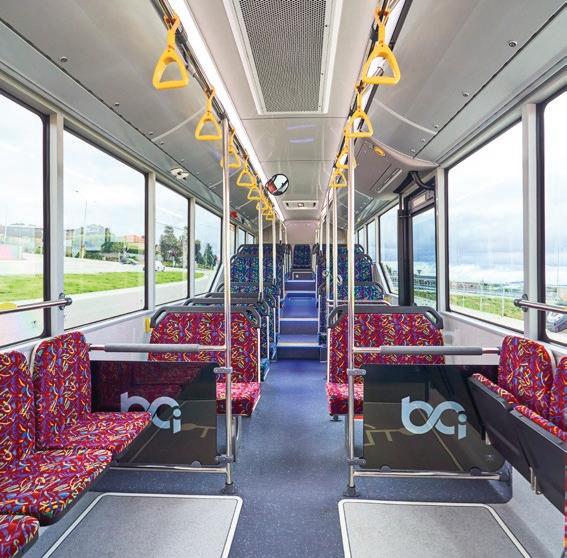
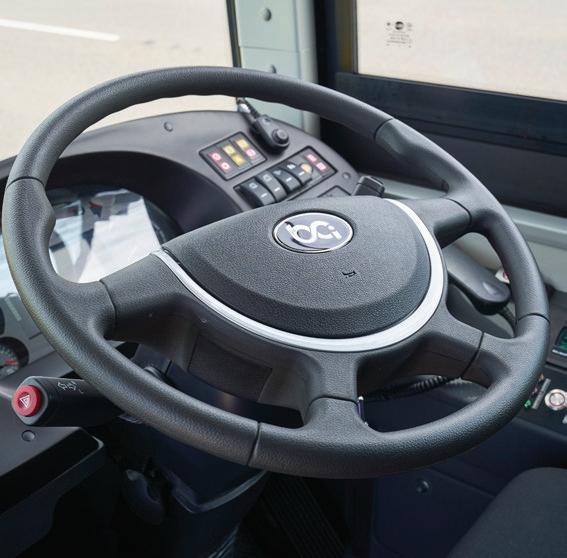
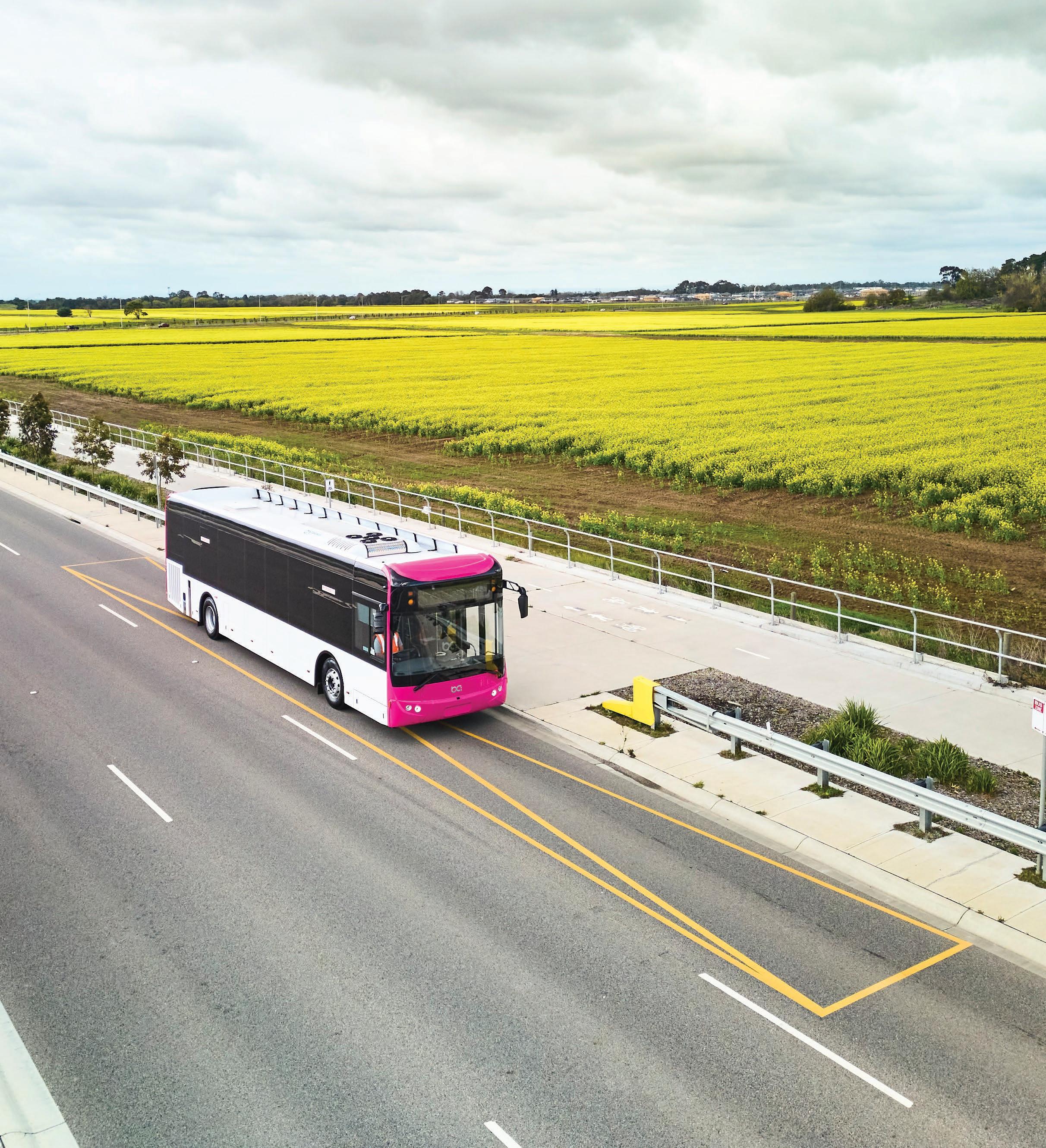
Contact our team for further information on 1300 289 224 or visit bcibus.com.au
Head Office Perth: 08 9353 9000
Melbourne: 03 8787 2100
Brisbane: 07 3275 6900
Adelaide: 08 8182 3888

Free travel and bus services retained in WA
Free travel has been extended for Armadale line commuters and popular services retained as the WA government invests in public transport
The Western Australian government has announced an additional $1.4 million to be invested to continue free public transport for regular passengers still affected by the ongoing Armadale line closure.
The announcement ensures commuters who were previously receiving free travel, including those
using stations between Kenwick and Armadale, will continue to do so until their local stations reopen.
WA transport minister Rita Saffioti says the decision reflects the government’s commitment to supporting the community while delivering one of the most significant rail upgrades in Perth’s history.
Keppel sells 25 per cent stake
in Ventura to Samsung
Samsung will now own almost a quarter of the bus operator, forking out approximately $130 million for
Keppel Infrastructure Trust (KIT) has divested a 24.62 per cent stake in bus operator Ventura Motors to private investment funds managed by Samsung Asset Management (Samsung).
Costing $130 million, the transaction is 19 per cent higher than the amount paid by KIT at acquisition for the relevant stake.
KIT acquired approximately 97.68 per cent interest in Ventura back in June 2024 for $600 million.
Post transaction, KIT and Ventura CEO Andrew Cornwall will continue to hold stakes of 73.06 per cent and 2.32 per cent respectively in Ventura.
“As part of KIT’s value creation strategy, we are pleased to be able to realise the upside in Ventura’s value through the divestment of a partial stake to Samsung,” Keppel Infrastructure Fund Management (KIFM) CEO Kevin Neo says.
“This divestment, coupled with our earlier divestment of our 50 per cent stake in Philippine Coastal Storage & Pipeline Corporation, both amounting to approximately S$301 million, will bolster KIT’s financial strength and agility, and enhance KIT’s ability to capture further opportunities through strategic capital recycling.”
“We committed to providing free public transport to regular passengers during this closure,” she says.
The retained routes include: Route 529 linking Armadale Station to Cockburn Central Station, Route 51 from Cannington Station to Perth Busport via Orrong Road and Route 36.
the stake
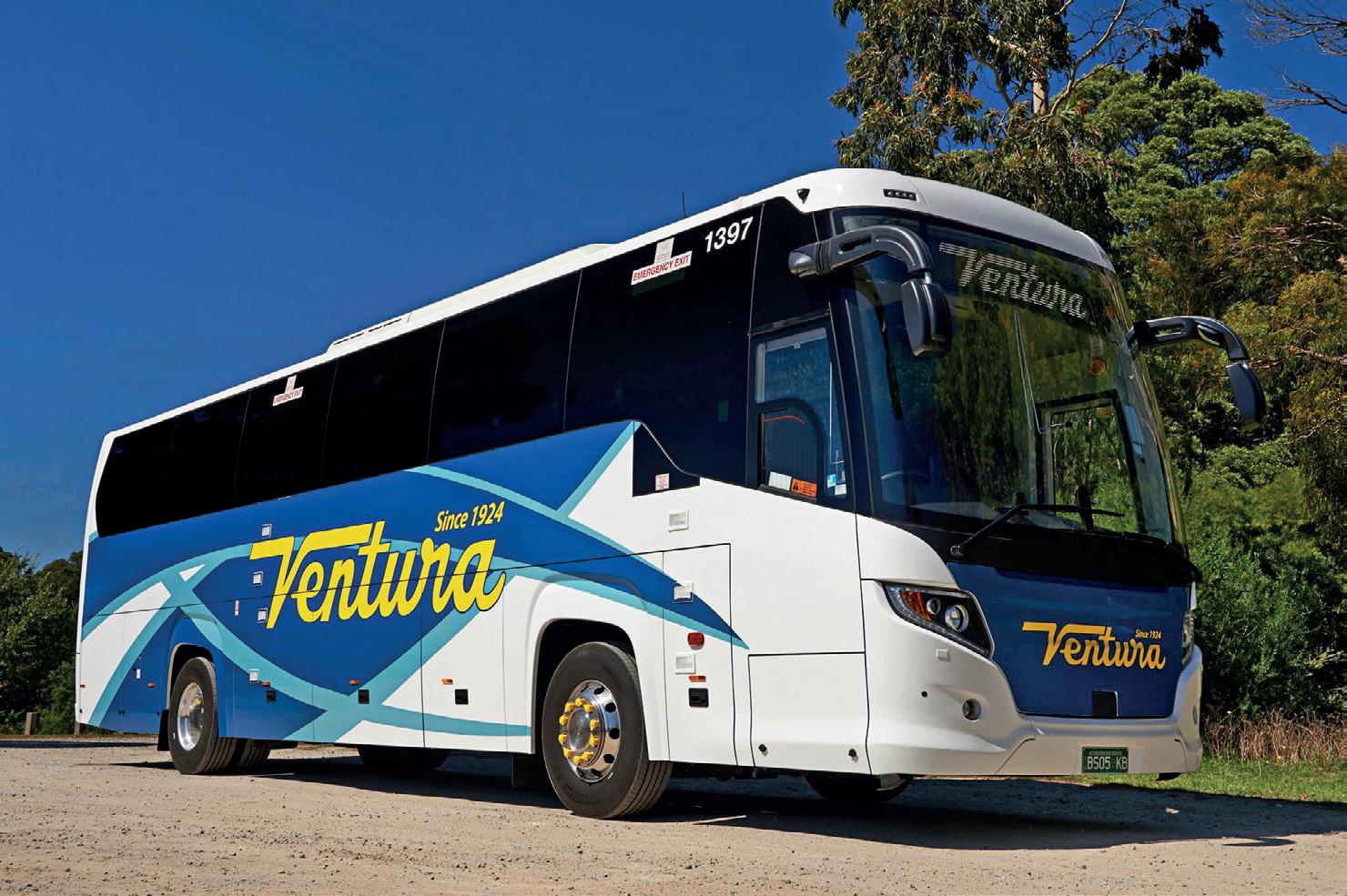
Ventura has a fleet of about 900 buses and 12 strategically located depots and has the largest market share of public bus services in Victoria, operating approximately 530 routes out of Melbourne’s 1,200 total routes and transporting more than 42 million people annually.
“As a provider of essential services, Ventura has continued to deliver market-leading performance in metrics such as punctuality and reliability,” Neo says.
“KIT is committed to work with the
Ventura management to strengthen and grow the business over time so as to generate stable, recurring and predictable cash flows for the Trust.”
The transaction is expected to be completed in the third quarter of 2025, subject to conditions and customary approvals from the relevant regulators and authorities.
KIT says the transaction is not expected to have any material impact on the distribution per unit and net tangible assets per unit of KIT for the financial year.
Above: Part of Ventura will now be owned by Samsung. Image: Ventura
Who is Transit Systems’ new NSW managing director?
The operator has appointed a new Sydney born and bred leader to run its NSW bus service operations
Sydney-sider Rino Matarazzo stepped in to lead Transit Systems’ network on May 26, his first day as the new managing director of the business.
Matarazzo brings more than four decades of leadership experience in the public transport sector to the role alongside a wealth of neighbourhood and industry knowledge.
Transit Systems group executive general manager of business operations Mark Peters says Matarazzo has built a “distinguished career” across rail, bus and government operations while demonstrating a focus on customer experience, stakeholder engagement and service delivery excellence.
“Rino is a highly respected and people-focused leader with a reputation of operational excellence.
Below: Rino Matarazzo.
His experience navigating complex environments and driving customer-first transformation makes him the ideal person to lead our NSW network into the future,” Peters says.
“Combined with our global team of transport experts and insights, Rino has the resources, capabilities and intel to raise the benchmark for what is possible in the NSW landscape.”
The appointment comes in the aftermath of Transit Systems achieving a record-breaking year of commendations from the community in the Sydney contract Region 6.
Matarazzo says this is a motivating benchmark.
“We are in the business of keeping cities moving, and if we are doing that with compliments from the
right track,” he says.
“I join Transit Systems at a dynamic time, and I’m passionate about delivering services that customers can truly rely on. I look forward to working alongside the talented Transit Systems NSW team to continue building a safe, efficient and people-centric network.”
Transit Systems has also extended its gratitude to Rachel Byrnes, who served as acting managing director over the past five months.
“I want to sincerely thank Rachel for stepping in during this interim period, and acknowledge the broader NSW team for their dedication and hard work,” Peters says.
“Their efforts have laid a strong foundation for Rino to build on as we
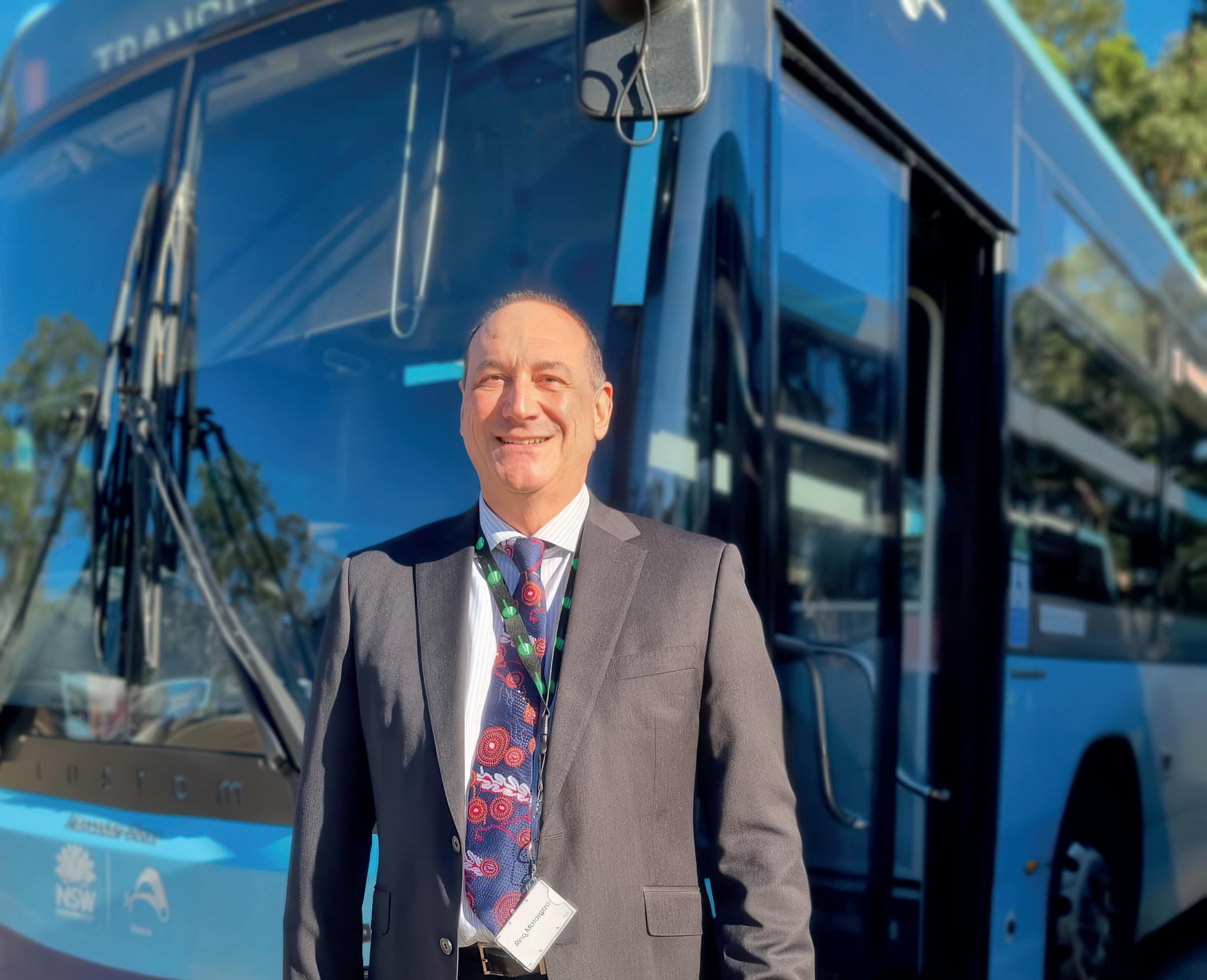
Hundreds of jobs at risk as Alexander Dennis plans site closures
The company says a “competitive imbalance” was partly to blame for the plans to move production down to England and close the Scottish sites
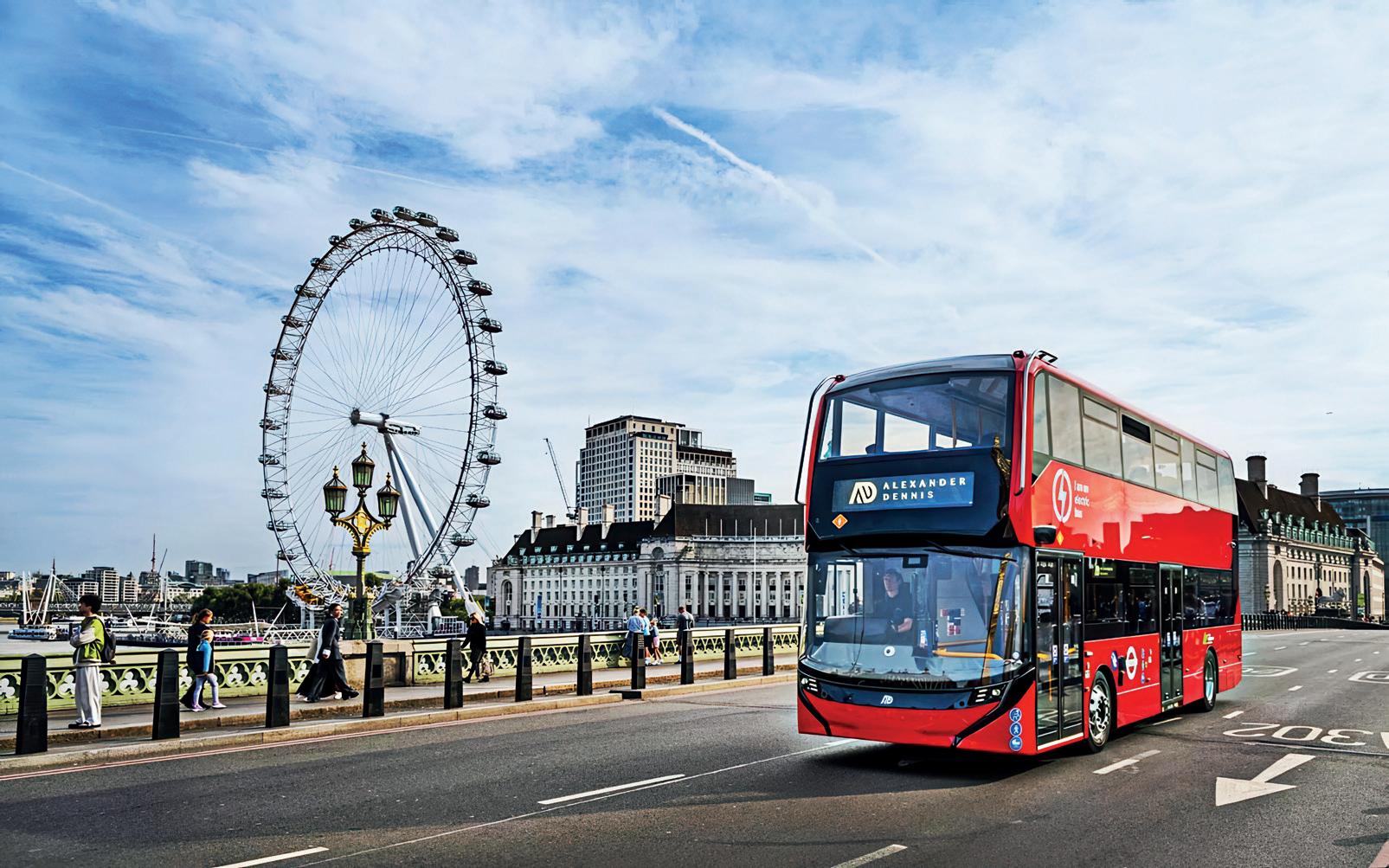
Up to 400 jobs are at risk after bus manufacturer Alexander Dennis announced plans to move operations to England.
The OEM, which has factories in Falkirk and Larbert, says it is considering moving manufacturing to a site in Scarborough in an effort to lower overall costs, deliver clearer responsibilities and increase efficiency.
Its Scottish based manufacturing in Falkirk, which has already been
reduced in recent years, would be discontinued and the site closed. Production lines at Larbert would be suspended upon the completion of current contracts.
The consultation puts up to 400 roles at Alexander Dennis at potential risk of redundancy, around 22 per cent of the company’s whole workforce.
Alexander Dennis president and managing director Paul Davies says the company must take significant
action to drive efficiency to allow its operating model to be competitive.
“It is extremely regrettable that as part of this, we must place jobs at potential risk of redundancy and propose to cease manufacturing operations at some of our facilities,” Davies says.
The company, which manufactures single and double decker buses, says the new proposed structure would lower costs and increase efficiency.
The company says it is facing strong competition from Chinese electric bus manufacturers, whose share of the market has risen from 10 per cent to 35 per cent.
“The stark reality is that current UK policy does not allow for the incentivisation or reward of local content, job retention and creation, nor does it encourage any domestic economic benefit,” Davies says.
“We have warned of the competitive imbalance for some time and would like to see policy and legislative changes that incentivise the delivery of local benefit where taxpayer money is invested.
“We strongly believe funding that supports public transport should lead to investment in local jobs, domestic supply chains, technology creation and a recurrent tax base.”
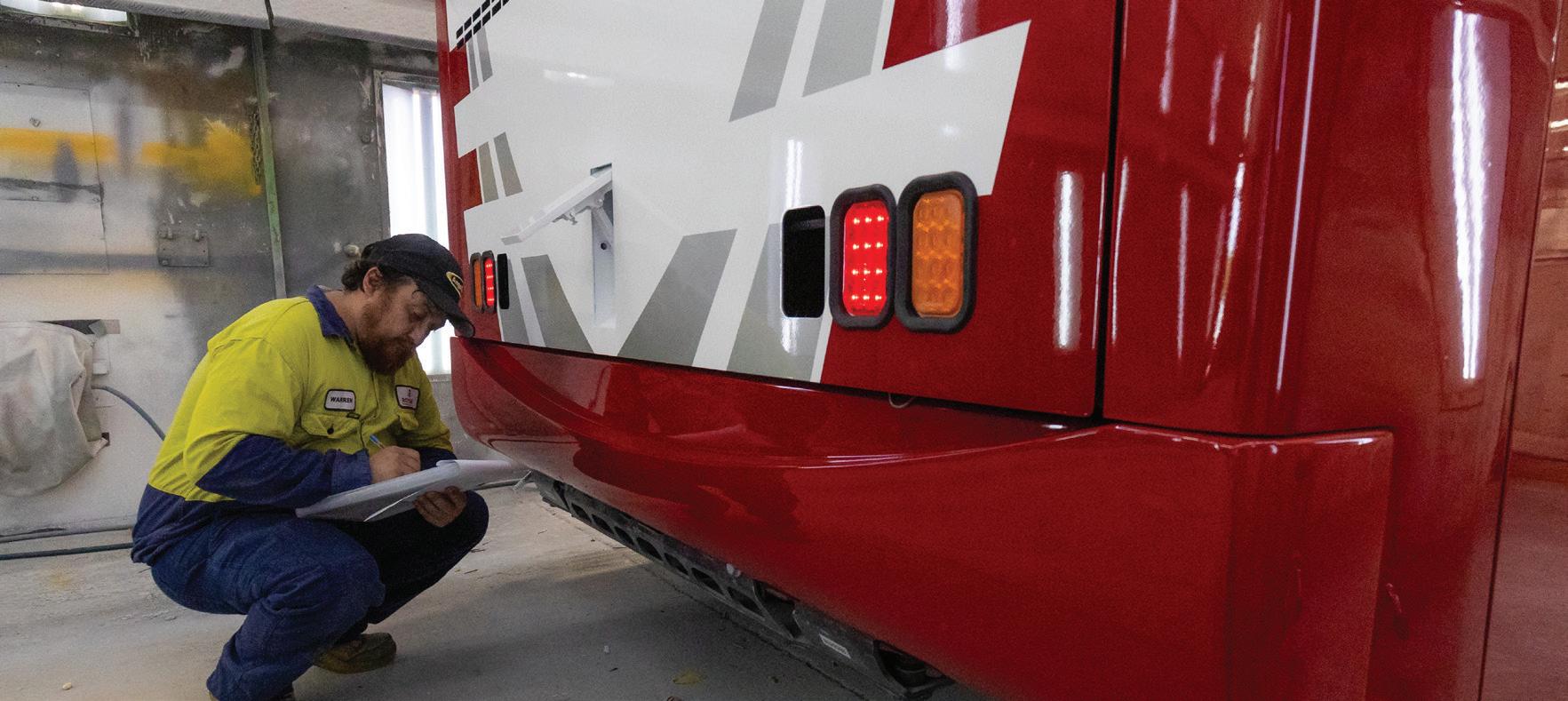

Above: Alexander Dennis may shift its manufacturing to England. Image: Alexander Dennis
Greater Wellington secures new site for bus depot
The council says by controlling depots, it is removing barriers for new bus operators to enter the market and thrive
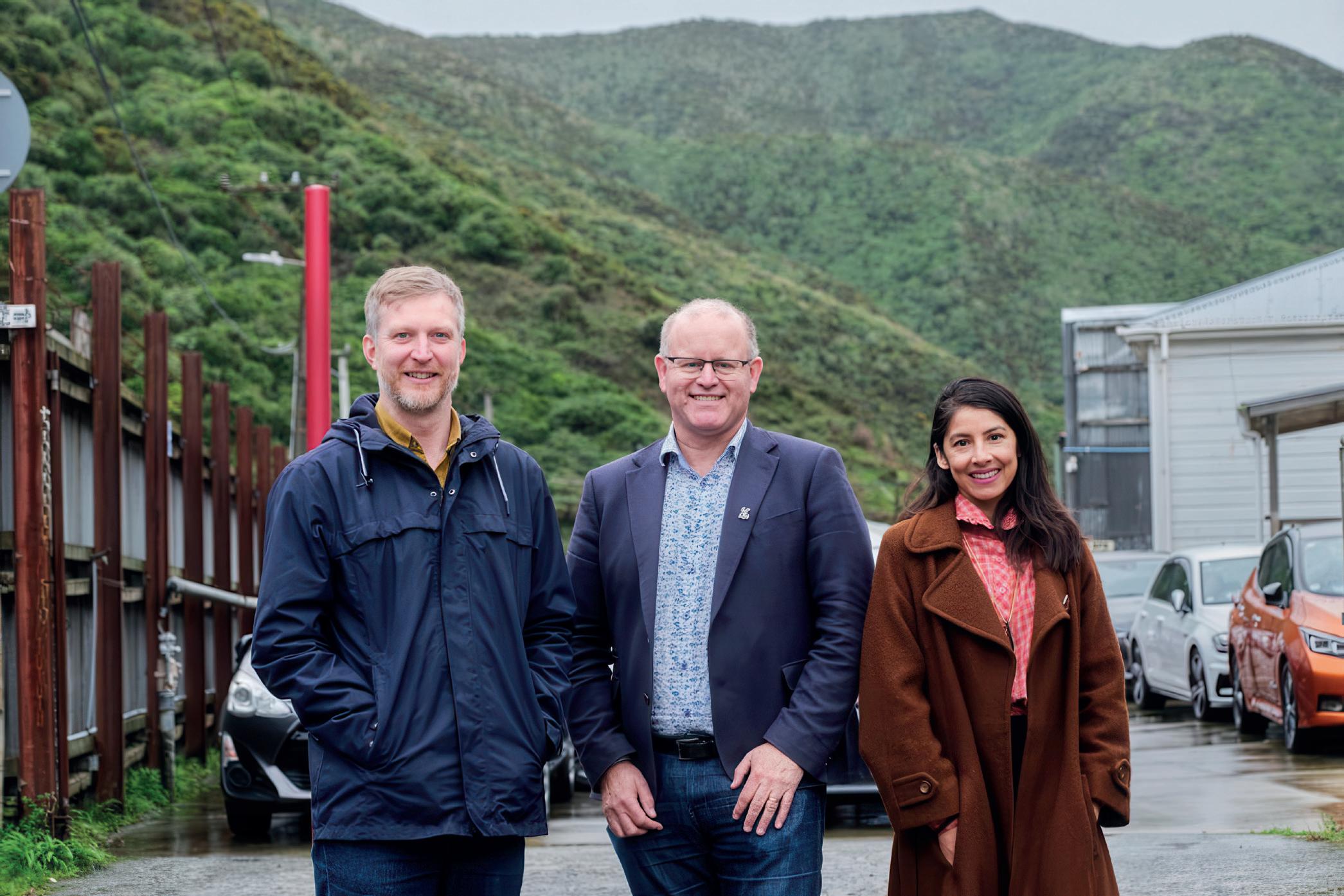
Greater Wellington Regional Council has purchased a one-hectare site in Happy Valley for the development of a new bus depot.
The depot, set to open in mid-2028, will support the continued operation and future growth of Metlink services, including the transition to a zero-emissions fleet.
The council takes possession of the site in May 2026.
The acquisition was strongly backed by the community, with 86 per cent of respondents supporting the strategy during consultation on Greater Wellington’s 2024–2034 Long Term Plan.
Greater Wellington Transport committee chair Thomas Nash says owning depots is key to encouraging competition and ensuring value for money.
“Value for money for residents and public transport users through open and fair competition is a key plank of our strategy, which also aims to improve the passenger experience as we transition to a zero emissions fleet,” Nash says.
“This purchase gives us a base for growth by encouraging bus operators that do not have depots to bid for
to make long term investments in charging infrastructure for electric buses, at a location that will help us deliver a more planned, responsive and efficient network.”
Council chair Daran Ponter says that the depot’s location will enhance service efficiency across key routes.
“We need the right infrastructure in the right places,” Ponter says.
“The depot will be near the start of several bus routes – including the high frequency route 1 – and will support the expansion and electrification of north to south services.”
With the future of the earthquake-prone Kilbirnie depot in doubt beyond 2030, and space constraints at the existing Rongotai depot, the council is also planning further investments.
“That’s why Metlink is also exploring opportunities for another depot north of Wellington, and breaking ground on a new depot by the airport to buttress east to west buses –including our most popular service, the route 2,” Ponter says.
Deputy Transport committee chair Simon Woolf described the Happy Valley acquisition as “sensible future
“Happy Valley depot will eventually strengthen bus services between Wellington’s south coast and growing areas in the north,” Woolf says.
“It will initially stable up to 80 diesel buses, until sufficient energy is connected and battery chargers installed to power our expanding electric fleet.”
South Wellington bus user and regional councillor Yadana Saw says Metlink is committed to being a good neighbour and responsible member of the Happy Valley community.
“Securing this site safeguards public transport assets in public ownership. It enables genuine engagement with people working and living nearby and strengthens our partnership with mana whenua Taranaki Whānui and Ngāti Toa Rangatira – bringing us together on any sites of significance,” Saw says.
BigAir Gym will continue to operate on the site, and other tenants will be given time to relocate.
When development begins, Metlink will work to protect Ōwhiro Stream from any stormwater run-off that comes from the section.
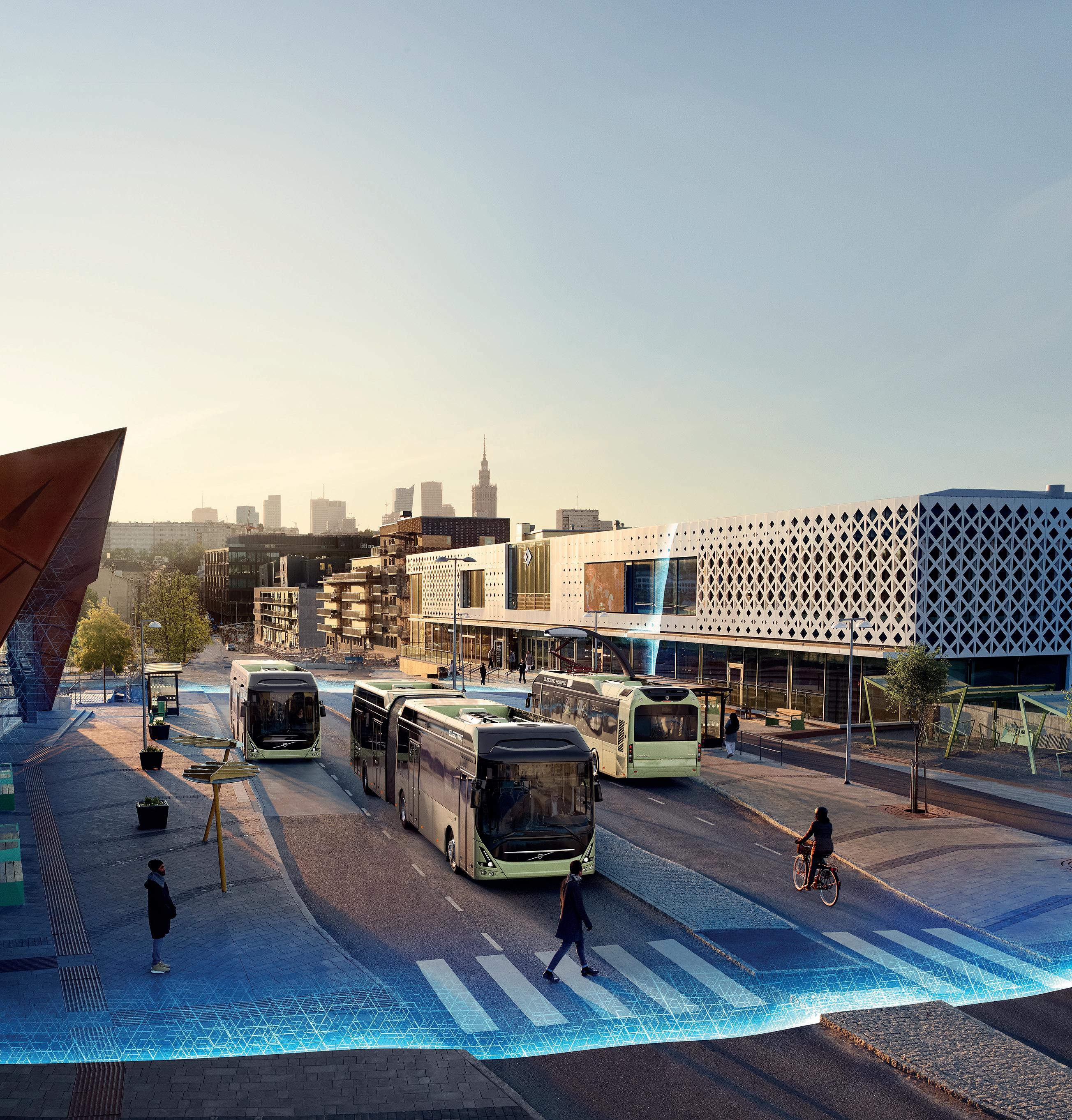
Valley site will stabilise bus services in the region. Image: Metlink





Bus safety: Not expensive, priceless
The BIC is continuing to focus on making buses safer for passengers of all ages, including through recent seatbelt education campaigns
The Bus Industry Confederation (BIC) continues to advise and support governments across the country in the revision of bus safety requirement policies — particularly on dedicated school bus services.
The BIC has developed a suite of operator guidelines and industry advisories on fire, passenger door, roll-over and seatbelt safety, for example, as well as submitted numerous papers to key government stakeholders and reviews. Its Safety Initiatives Paper details key topics and matching recommendations, including implementing a national harmonised approach to bus safety awareness aimed at education in schools and the general public.
Of recent focus are education and awareness campaigns to encourage seatbelt use, which have traditionally focussed on cars with little or no reference to buses. It’s generally accepted that seatbelts should be worn if present, though the lack of focus on buses over the years meant that it hasn’t been automatically adopted by passengers and especially not school children. Various state-based approaches to seatbelt safety in buses have always existed, yet they’ve varied in their promotion in the classroom.
Following its official national launch last year, the BusSAFE school program extended its reach beyond South Australia into Queensland and Tasmania.
By term two of 2025, BusSAFE presenters had opened the program in regional Queensland with school visits in Gympie, Emerald and Beaudesert, and further south in
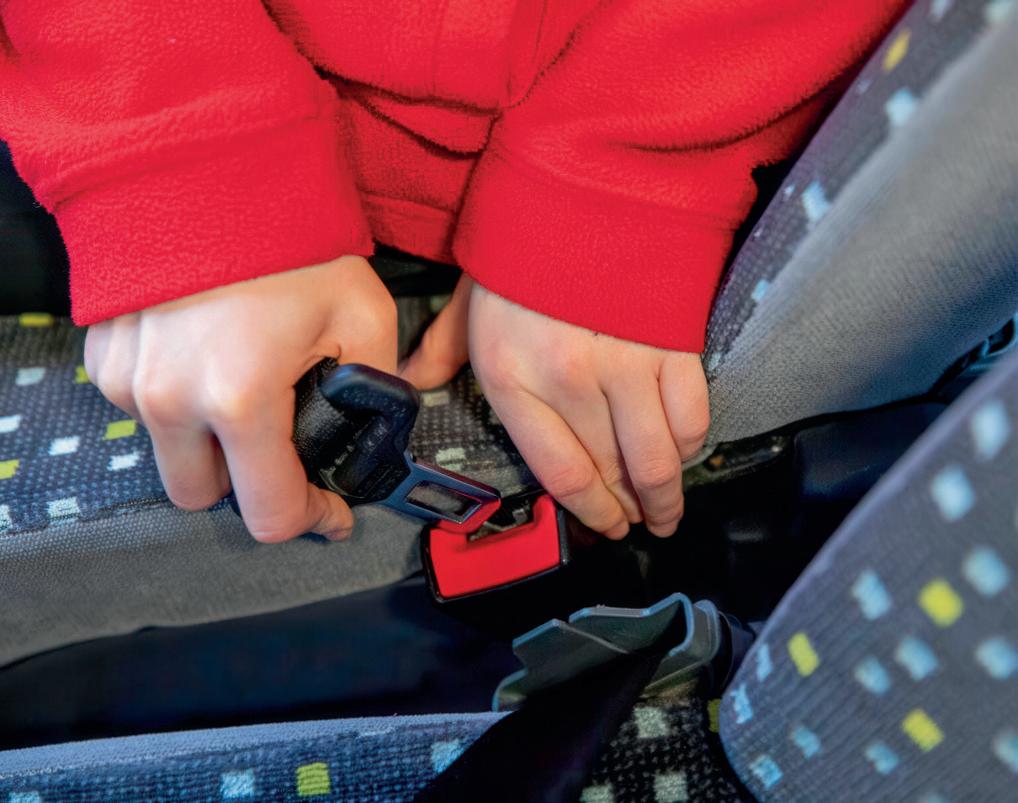
the Tasmanian north coast. Term three will be moving into regional hubs like the Gold Coast, Toowoomba and outer suburban Hobart.
The BusSAFE message remains clear: stay alert at the bus stop, don’t distract the driver or other passengers, be prepared for emergencies and use seatbelts, headphones and phones responsibly.
Teaching students how to safely cross the road around buses, with a focus on blind spots, is also key.
One student reported that the most important thing learnt during a BusSAFE session was that “there are lots of spots (outside the bus) where the driver can’t see you”.
Bus drivers transporting students from the first schools in Launceston to take part in the program also noticed the change in their young passengers, such as reminding others to wear their seatbelts and to remove earbuds around buses. These are the kinds of early interventions that create safer journeys for everyone.
BusSAFE will move into New South
Wales, Victoria and Western Australia later in the year.
In January this year, through the BIC’s advocacy efforts, a new Australian Design Rule (ADR) to improve seatbelt wearing rates in buses and coaches was finally introduced to help save lives on our roads following consultation with the states, territories and industry.
Coming into effect from November 1, 2026, the new requirements include visual and audio alerts on buses and coaches – similar to those featured on air travel – which aim to encourage usage where three-point seatbelts are present. It also removes a loophole that allowed some coaches not to be fitted with seatbelts.
While current data shows bus and coach travel remains one of the safest forms of transport, their size and passenger capacity can result in a greater number of fatalities and serious injuries in the event of an incident.
This victory, then, is highly welcomed. Both this outcome and the success of the BusSAFE program point to the ongoing commitment to bus safety and co-operation with industry, states and territories by government. It also represents the next step toward encouraging all passengers, including our kids, to protect themselves while travelling by bus and coach.
For more information on BusSAFE, visit bussafe.com.au or email info@bussafe.com.au.
For more on bus safety, visit: bic.asn.au or email communications@bic.asn.au.
schools across
Above: School bus safety is a key focus in various ways. Image: AGDER/ stock.adobe.com
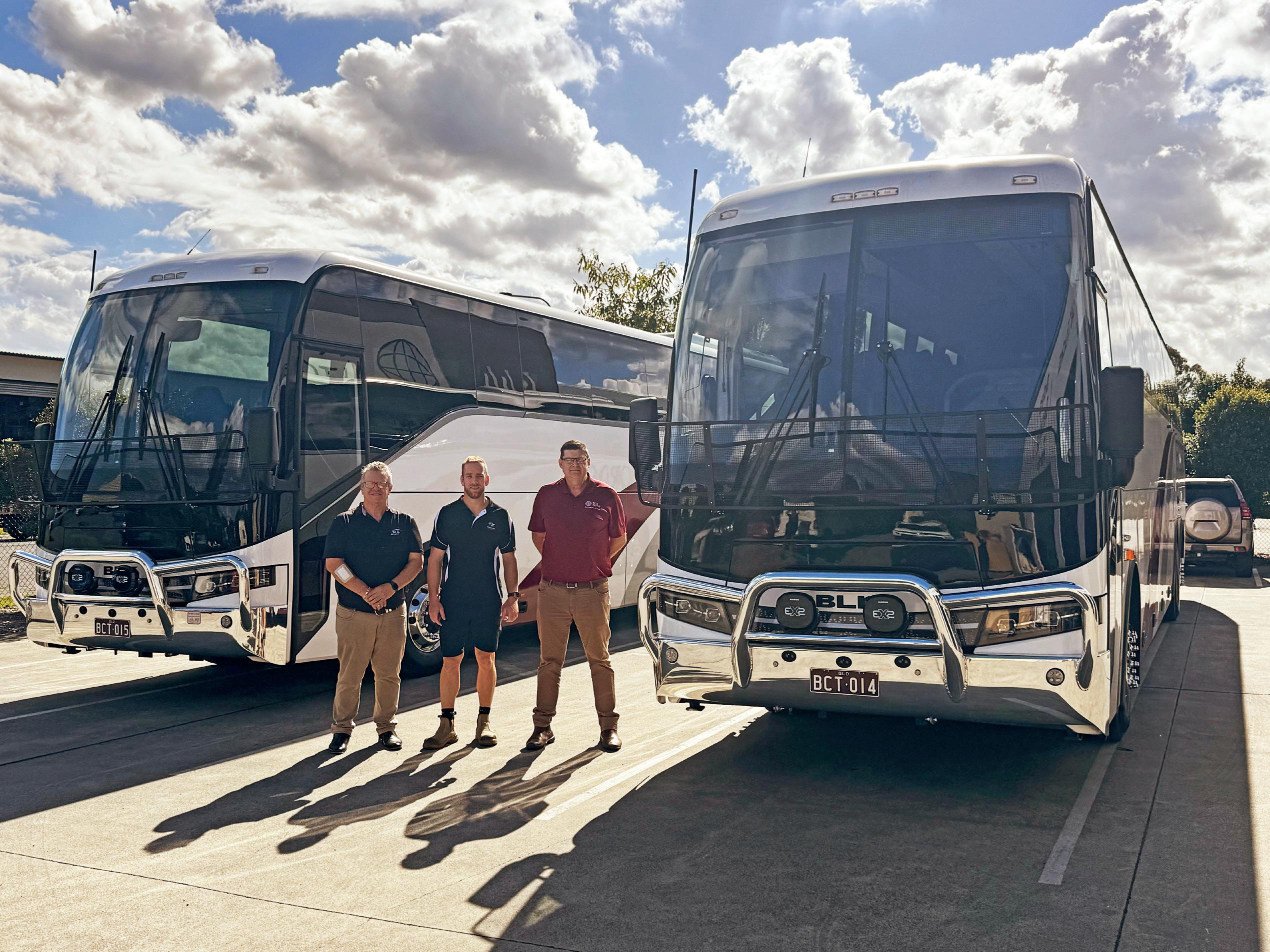
Bundaberg beacons
Bundaberg Coaches’ two new BLK coaches are putting a popular north Queensland town on the map for a whole new reason, Sean Mortell writes
For many Australians, Bundaberg is an iconic place.
As home to the popular rum distillery and brand of beverages, the town north of Queensland’s Sunshine Coast is a household name.
It’s not just the well-known label that is now making Bundaberg a popular stop for many travelling through Queensland’s north. For more than half a century, Bundaberg Coaches has been a touring giant in the area, providing a crucial link to the breathtaking countryside, stunning greenery and pristine beaches that encapsulate the region.
“I bought the business in 2011 from Mick and Carol Foley – they had developed a really strong touring following in the area,” Bundaberg Coaches director Jason Beresford told ABC
“The Foleys had scaled it back
from several to two vehicles to make it more manageable to sell, and I’ve slowly grown over time.”
The Beresford name is now driving the historic operator forward in north Queensland. The Burgess family initially established the business in 1972 before the Foleys took over roughly a decade later. Now, the Beresford leadership has seen Bundaberg Coaches further enhance its reputation in the region while driving the charter and mining sides of the enterprise.
The latter is a particular source of growth for the business – while Bundaberg Coaches has always been synonymous with tour and charter trips in the area, the mining transport avenue is allowing the popular local business to add more strings to its bow.
“We have steadily expanded into the mining game, starting with a contract we won to run vehicles to
Above: Bundaberg Coaches has welcomed unique BLK models to its expanding fleet
and from Middlemount Coal Mine,” Beresford says.
“We permanently run two buses from the mine site to the camp, while we also run two return services a week from Bundaberg, Rockhampton and Mackay to the camp and mine site.”
On top of this, Bundaberg Coaches has also secured a contract to run services at Rolleston Mine near Emerald. It’s resulted in the most diverse operations to date for the ongoing transport operator. With these various requirements comes the need to buy unique and tailor-made vehicles.
This is where BLK comes in. Since emerging in the Australian market in 2006, BLK Auto Bus & Coach Sales has emerged as one of the leading luxury bus and coach suppliers to the local industry. With Bundaberg Coaches currently completing tour and charter, mining transfer and
rail replacement runs in its daily operations, the operator has trialled its fair share of bus brands.
It has landed on BLK as its supplier of choice on its latest delivery of two 14.5m coaches.
“The idea behind these coaches was that we didn’t previously have vehicles that were specifically tailored to certain tasks in our operations,” Beresford says.
“We needed vehicles that we could trust to go to mines one week and then complete rail work or school charter or tours elsewhere the next.
“We decided to go to BLK for this –they are the third and fourth deliveries from the brand into my fleet, with the previous models having performed really well to date.”
The recent delivery of two BLK President 3 coaches join the Bundaberg Coaches fleet, ready to complete a range of runs. However, these models aren’t your usual buses. Instead, Beresford has worked with BLK to produce two unique vehicles that differ from a standard three-axle coach.
“We’ve spec’d these coaches in a luxury style – I call it a charter spec, as it includes longer range due to extra fuel,” he says.
“We’ve added large fuel tanks into the design and we’ve introduced new diamond stitched leather seats
to create a more upmarket look. Then throw in the standard stuff – a bullbar, driver lights and USB charging built into the seats.”
The two coaches, which are also trialling Starlink to allow for streaming and Wi-Fi for passengers, have been designed to ideally fit the demands of running to and from Roleston Mine and Middlemount.
“When we run out to these two mines, we do go through black spots, so Starlink will allow us to remain in communication with the vehicles too,” Beresford says.
“We made sure we have also included the biggest motor that we can get to provide the largest amount of fuel possible. They are very nice vehicles.”
During the build process of the BLK President 3 vehicles, Beresford sourced two used vehicles as a “stop gap” which will now continue to be used in the mining and charter and tour operations.
“I always liked to have at least four buses in the yard at all times, as it meant we could cover the majority of our charter work, but now it’s more like 12 in the yard,” he says.
“We’re doing more work for new customers and our charter side is continuing to grow, while our mining operations are steady.”
The two BLK Presidents signal
Below: The coaches will
a change for the operator. The delivery is the first time Beresford has sat down and designed two vehicles specifically suited to the mining task. While they follow in the suit of previous buses and coaches that can handle a variety of long distance transfer operations, these BLK Presidents can also be put to use when Bundaberg Coaches completes contract work for Queensland Rail replacement services.
“We handle all the breakdown and rail replacement work for the local area, and it requires us to have wheelchair accessible vehicles,” he says.
“That’s just one of many specs that we needed in these vehicles, which BLK helped us out with.”
On the BLK side, the two President coaches join a duo of Senator 8 models at 37 and 33 seats respectively that the supplier first delivered to Bundaberg Coaches. On this latest delivery, BLK sales and special projects manager David Jiear says the company was keen on ensuring every detail of the unique coaches was spot on for Beresford’s team.
The specifications of the President 3 coach consist of the usual in a vehicle of this calibre, such as a rear toilet and wheelchair loader over the rear axle so not to encroach over the rear bin space, with the other options added
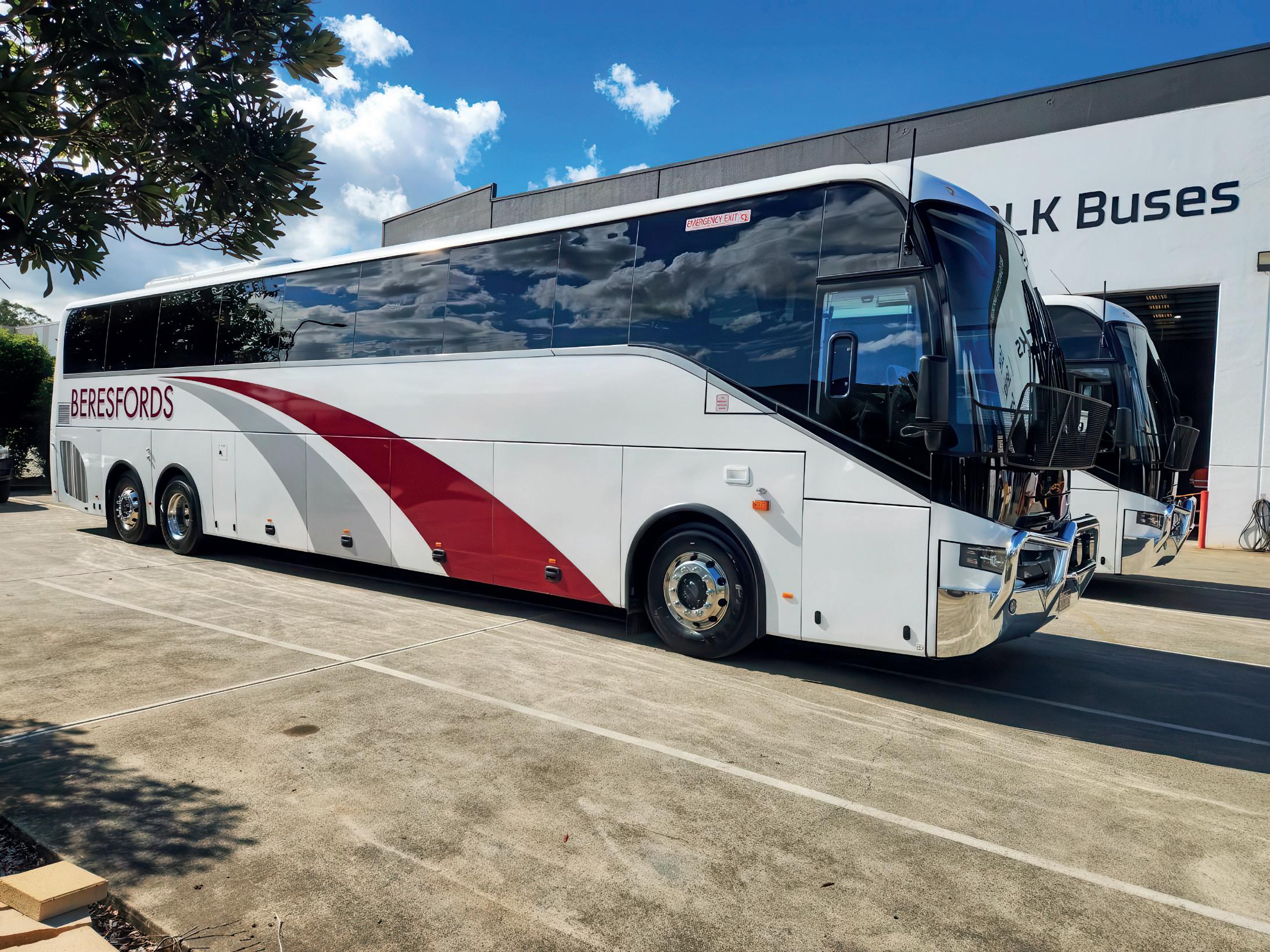
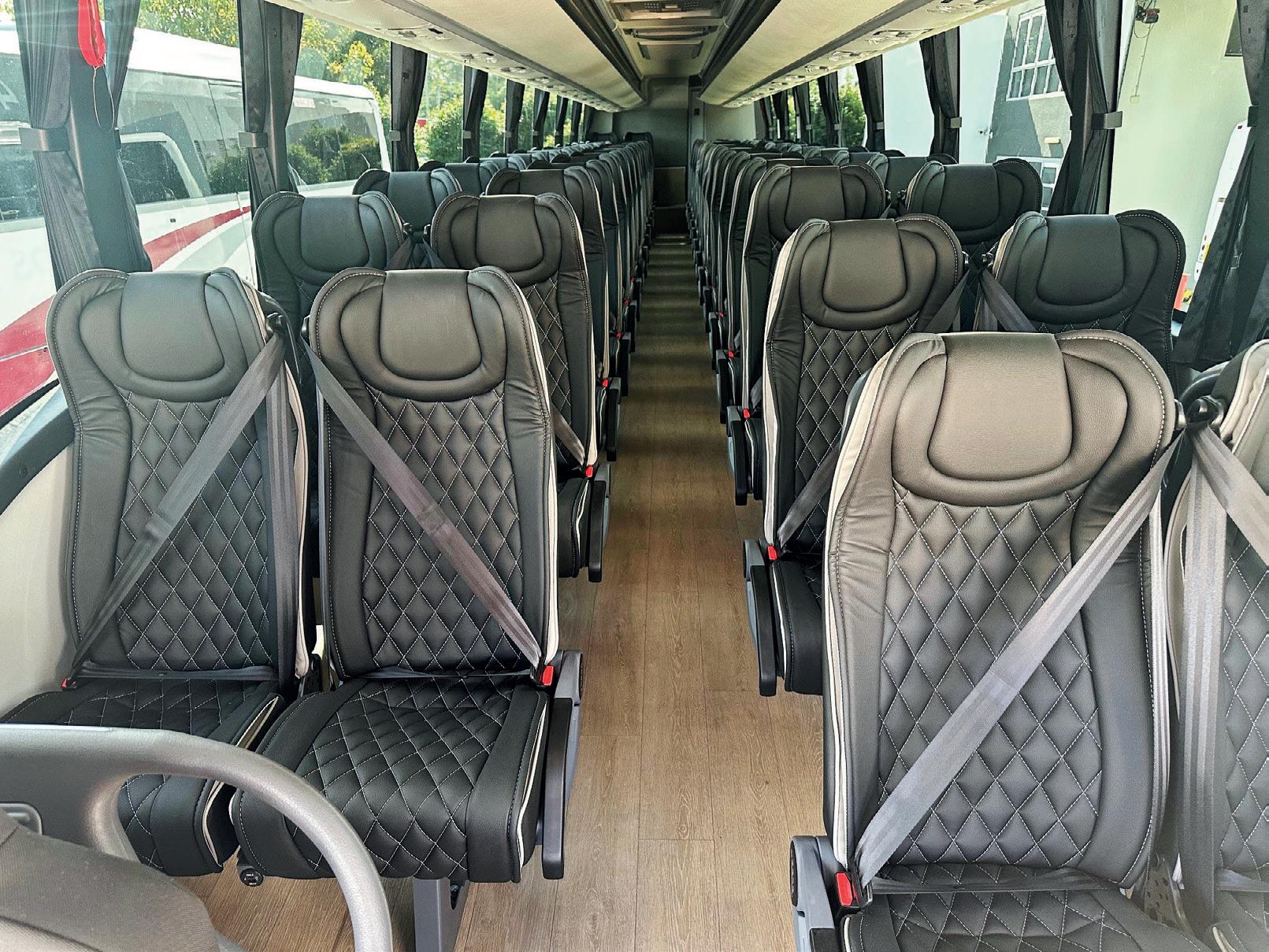
by Beresford including driving lights and a larger fuel tank of 800 litres.
The success in all of this, along with the X12 engine and steerable tag axle with the modest tare weight, is that it provides peace of mind when refuelling and loading the large luggage bin area. All of this is giving Jason and the Bundaberg team the perfect coaches for their operations.
Another key factor in BLK’s design that piqued Beresford’s interest was the brand’s use of all-American running gear. With the Cummins X12 engine being joined by an Allison transmission, Beresford says the American running gear is durable and efficient.
“These new models have already started working – one has done a mine run while the other has gone to the snow in Canberra,” Beresford says.
“The first runs are showing really good fuel efficiency, but we’ll continue looking at the data to see just how efficient they are.
“We always like to use the Allison and Cummins combination, as we think they work very well together. We have a good relationship with both companies and we get great local support from them.”
These latest unique deliveries are a highlight of a productive year for BLK. Whether it be school buses, charter vehicles or mining coaches, BLK has seen its order bank grow in 2025.
“Traditionally, our President 2 model has been our bread and butter coach, but we’ve also seen an increasing interest in our smaller President 10 model and our 14.5m President 3 that Bundaberg Coaches has received,” Jiear says.
“We’re continuing to expand off the back of this – we’ve put on more staff throughout the business and have expanded our sales and aftersales presence around the country. We
to have nearly $2 million in parts stock for a wide range of manufacturers.
“There’s a mix of vehicles we’re pushing through currently, and we’re also looking at what we will introduce at next year’s bus expo. It’s busy times for BLK.”
Despite the hectic nature of business for the brand, Beresford is grateful that BLK was still able to sit down with him and produce two ideal coaches for Bundaberg Coaches. One of the deliveries will continue working a “pretty demanding run” on rotation to and from Roleston Mine, while the other model will join the 15-bus fleet to complete a wide range of tour and charter activities.
Much like BLK, Bundaberg Coaches is continuing to experience a boom in demand. With meticulously designed vehicles like the two unique BLKs, Beresford is confident that Bundaberg and BLK can continue forging a strong reputation in Queensland.
“We’re looking to continue enhancing our charter capabilities –our distance to Brisbane sets us up as an ideal long-distance operator,” he says.
“I have faith that these vehicles will continue working well, which will allow us to offer leading travel options
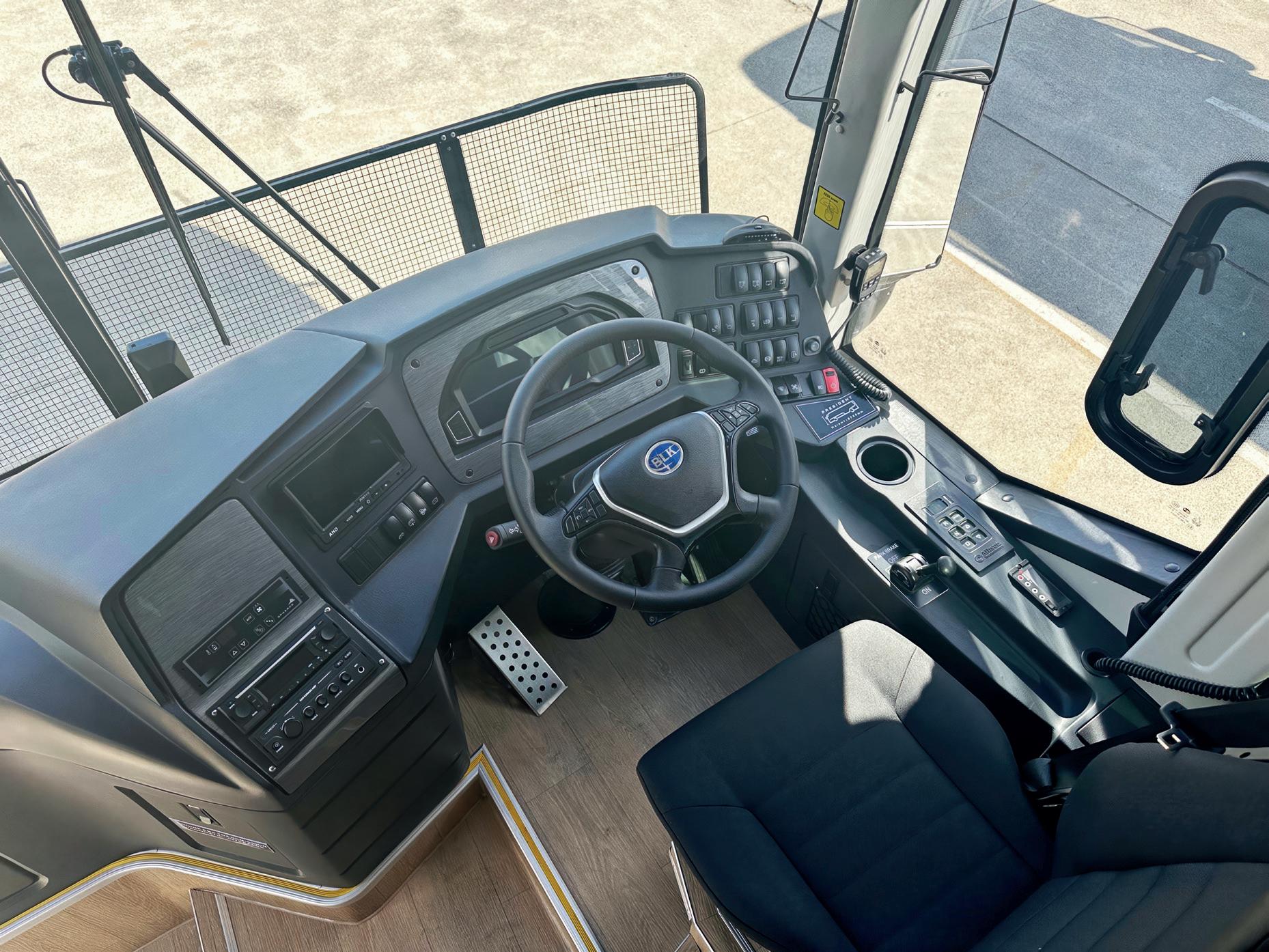

Below: The all-American running gear is a
Above: The Sege diamond stitching pattern seats is a stand-out with the interior

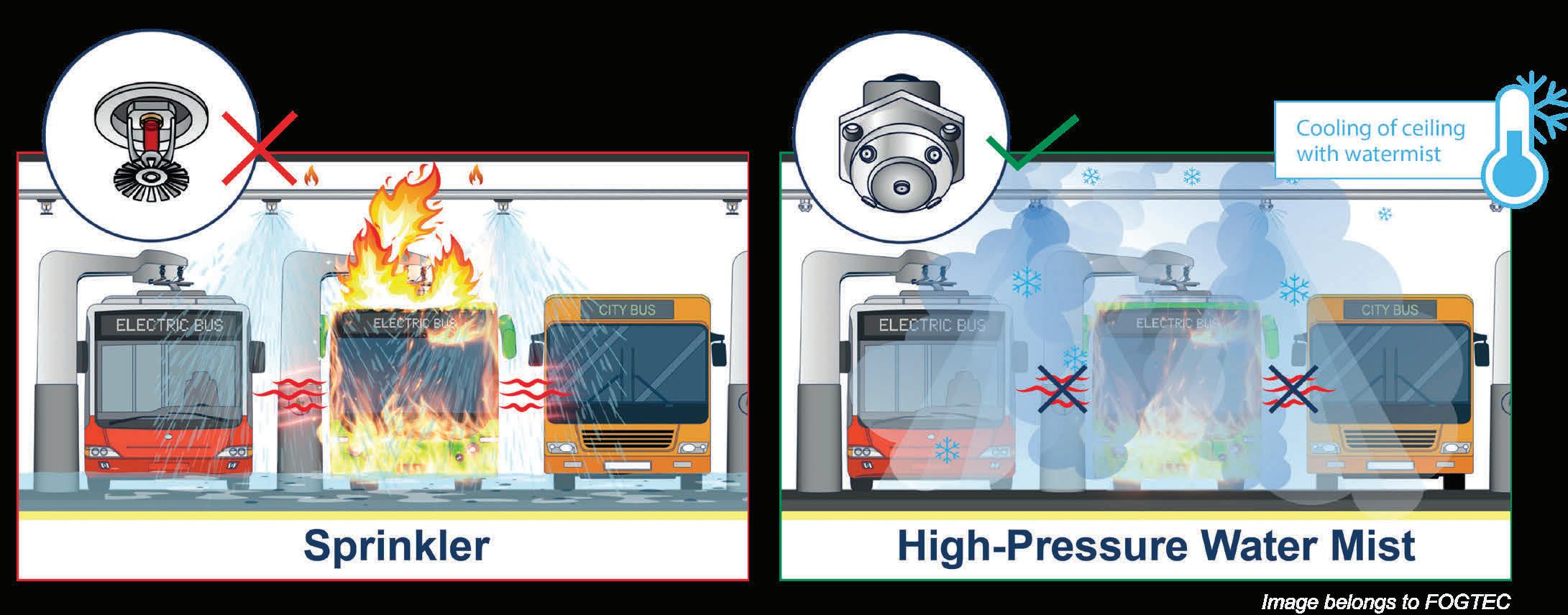
Need Australian Made aluminium extrusion? Capral can do.
As Australia’s largest supplier and extruder of aluminium, Capral is committed to supporting Australian manufacturing with high-quality, locally produced aluminium extrusions. Our state-of-the-art facilities provide precision-engineered solutions for the transport industry nationwide.
Choosing Capral is an investment in reliable supply, shorter lead times, and a stronger Australian manufacturing sector.
When you need Australian-made aluminium, Capral can do.
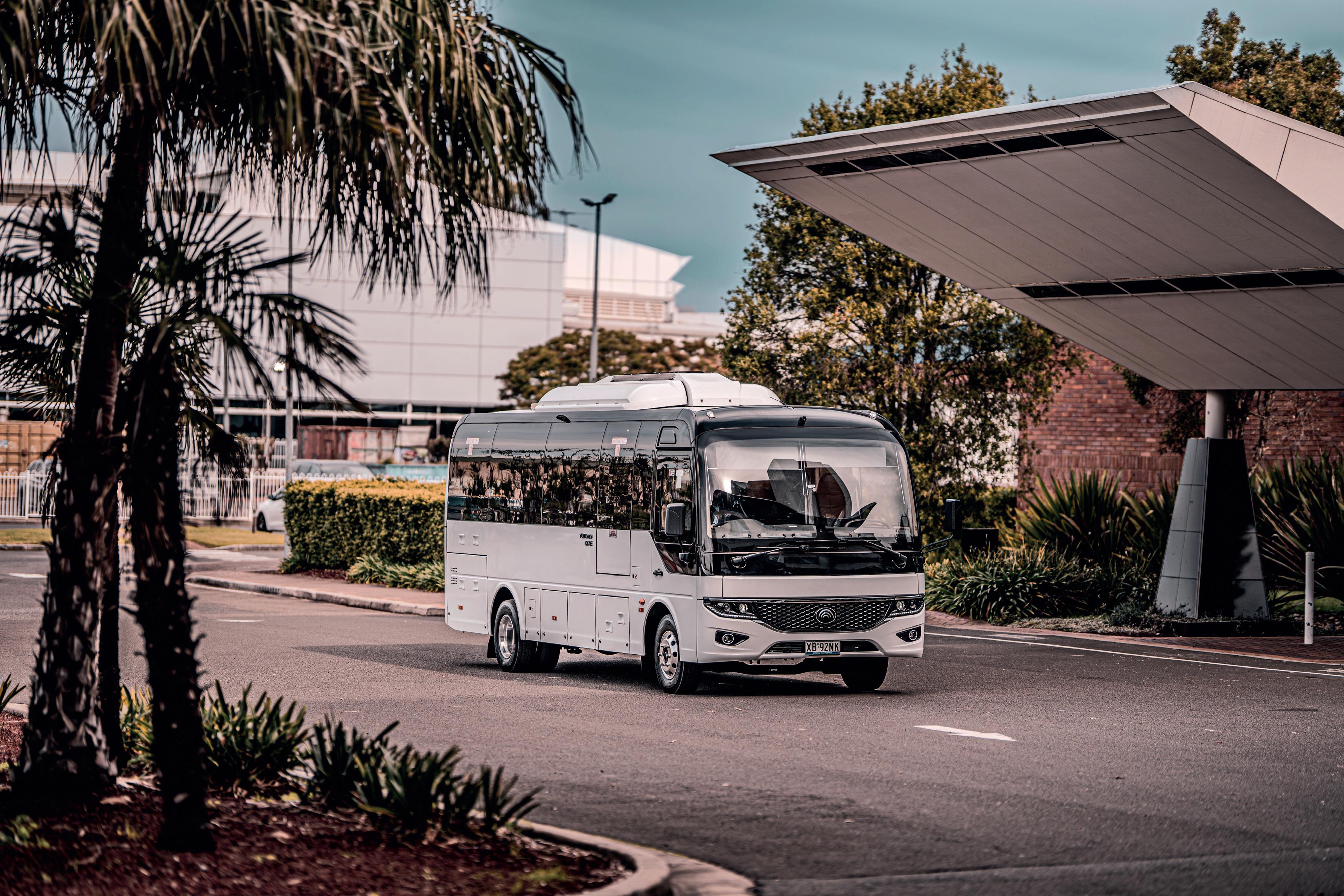
New kid on the block
In ABC ’s latest test drive, Paul Aldridge took Yutong’s D7E around Sydney to see how the nifty electric bus works in suburban and community applications
Over the past decade, the Yutong D7 (originally introduced under a different badge) has become a popular member of Australia’s bus and coach market.
In the past year, the emerging success of the D7 has included a new element. VDI has introduced an electric version of the much-loved model to the local market. On a pleasant Sydney day last month, ABC ’s resident bus reviewer Paul Aldridge got to hop behind the wheel of the D7E and put it to the test.
In 2022 he was driving the D7 –while it may not be that long ago, plenty has changed since Paul last got his hands on Yutong’s smallest bus model in Australia. All of these updates are reflected in the D7E, which mirrors its diesel older sibling but is creating its own path forward with a range of nifty improvements that only a zero-emissions driveline can offer.
Being able to introduce an electric counterpart to the D7 has been a source of great pride for the VDI Australia team. The seven-metrelong Yutong bus now comes with the latest electric and overall safety features to make the D7E Yutong’s safest and most secure model to date in Australia.
“We’re proud to have this fully electric model in Australia with an advanced driver assistance system and a raft of other leading safety packages,” VDI Australian national sales manager Sara Clark told ABC
“It’s a fully integrated product that comes with Yutong’s electric architecture and YESS safety standards, creating five layers of protection for the entire bus and its systems. The overall build quality of the D7E is fantastic.”
In the years that have passed between VDI introducing the D7 and the D7E to the local industry, a lot has changed. However, Paul
Above:
While it may feature a different power source, the quality is the same on the D7E compared to the D7
immediately noticed that safety still remains paramount for the local Yutong distributor.
“With the D7 diesel variant, a big selling point of this bus was safety, safety, safety,” he says.
“The D7E is no slouch in this area, featuring cameras all around the bus to provide a 360-degree visual for drivers to see pedestrians and other vehicles.
“I’m very impressed – the D7E lacks nothing when it comes to safety, even including automatic sounds for when it travels under 20km/h to alert vulnerable passengers.”
Alongside these updates is a refreshed dashboard that better displays the driver warning system and the mobile eye camera technology. Outside of this, expect the D7E to be as similar to its diesel variant as it can be, with the usual increased electric safety features onboard ensuring the electric battery is kept safe and protected.
Images: Paul Aldridge
“This includes 24/7 battery monitoring, nitrogen injections into battery packs, crash barriers, pack protection, fire blankets and base cell level cell monitoring of temperatures and voltages,” VDI Australia national service and technical manager Luke Edwards told ABC
“With disc brakes as standard, the regenerative braking on the D7E allows the bus to not use the brake pads while creating its own power.
“We’ve also added a hill start assist to ensure the electric bus doesn’t roll back on a hill when you’re going to take off.
“We kept development on track with the previous D7 when building this – it’s literally an electric version of the diesel bus.”
One key tweak Paul notices as he goes to hop into the D7E is the remote control door opener, labelling it “fantastic”. Upon climbing the two steps into the bus and then towards the driver’s area, the lack of an engine cover creates more space.
“It’s nice and accessible to drop into this area, and the visibility as a driver is fantastic,” he says.
“The driver compartment area is more spacious. With a screen, A/C controls and buttons for doors and steering wheels, it makes life easy.”
While the D7E may run on completely different power technology when compared to its diesel older brother, the VDI team says the drive and feel of the bus closely mirrors the D7. Instead, it’s just a quieter and smoother ride for passengers without the noise of the diesel engine.
The noise is so quiet on the D7E that VDI has had to install a pedestrian warning system so that pedestrians can hear the bus coming when it travels under 20km/h. Over that speed the D7E meets the 50db of noise cut-off, mainly due to the sound of the tyres.
“Realistically, people wouldn’t know that it was electric until you point it out to them. It’s a really different experience, for the better,” Clark says.
When Paul begins driving, he agrees – if he didn’t know it was electric prior to taking it off, he thought it could be a diesel bus that is very well insulated.
“It drives very well and is so easy to manoeuvre – it’s very car-like,” he says.
“I can negotiate it through any tight space with confidence, and the 360-degree camera means it’s very difficult to hit anything unintentionally.”
Under the bus, five batteries form a 175kW system for the D7E model, with
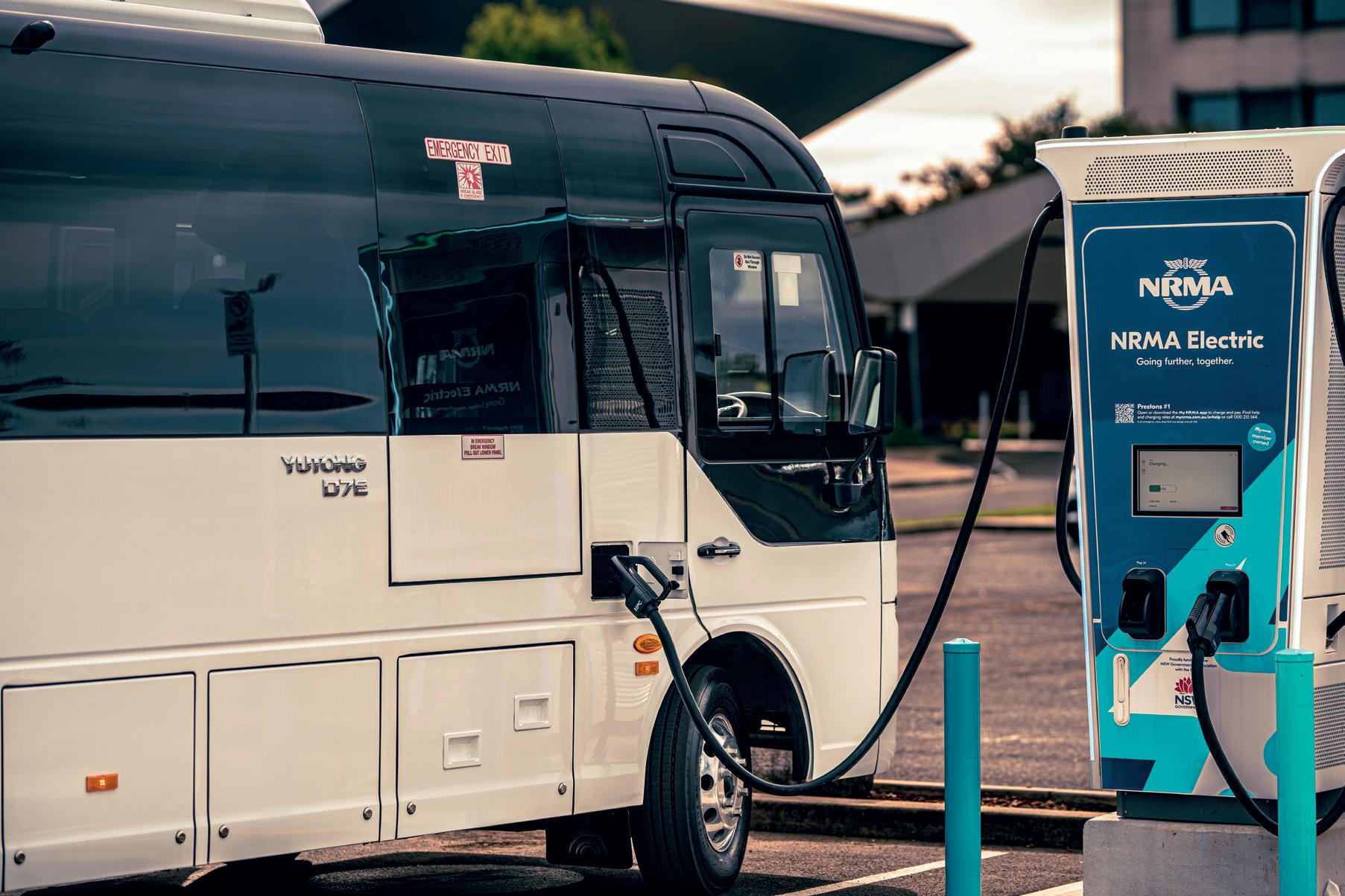

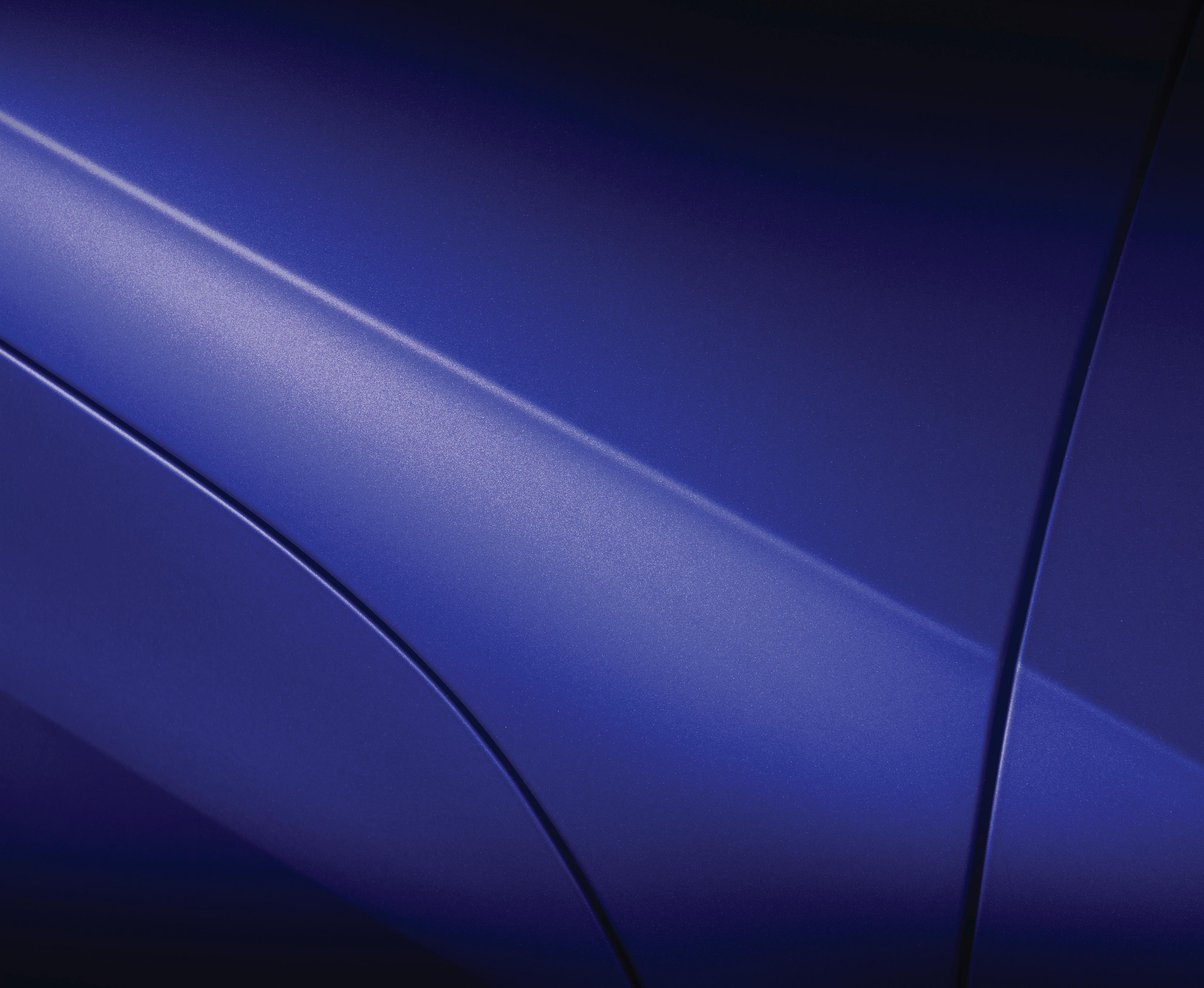
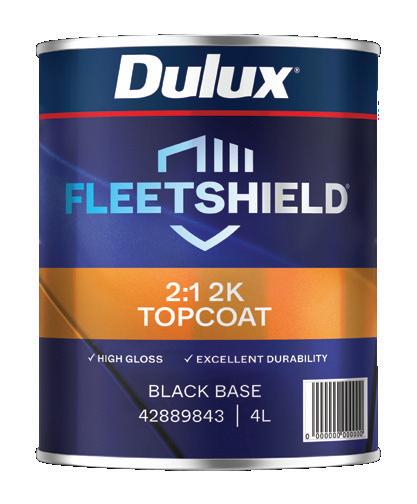

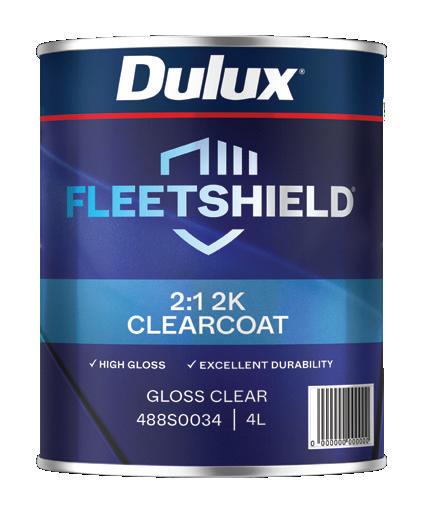
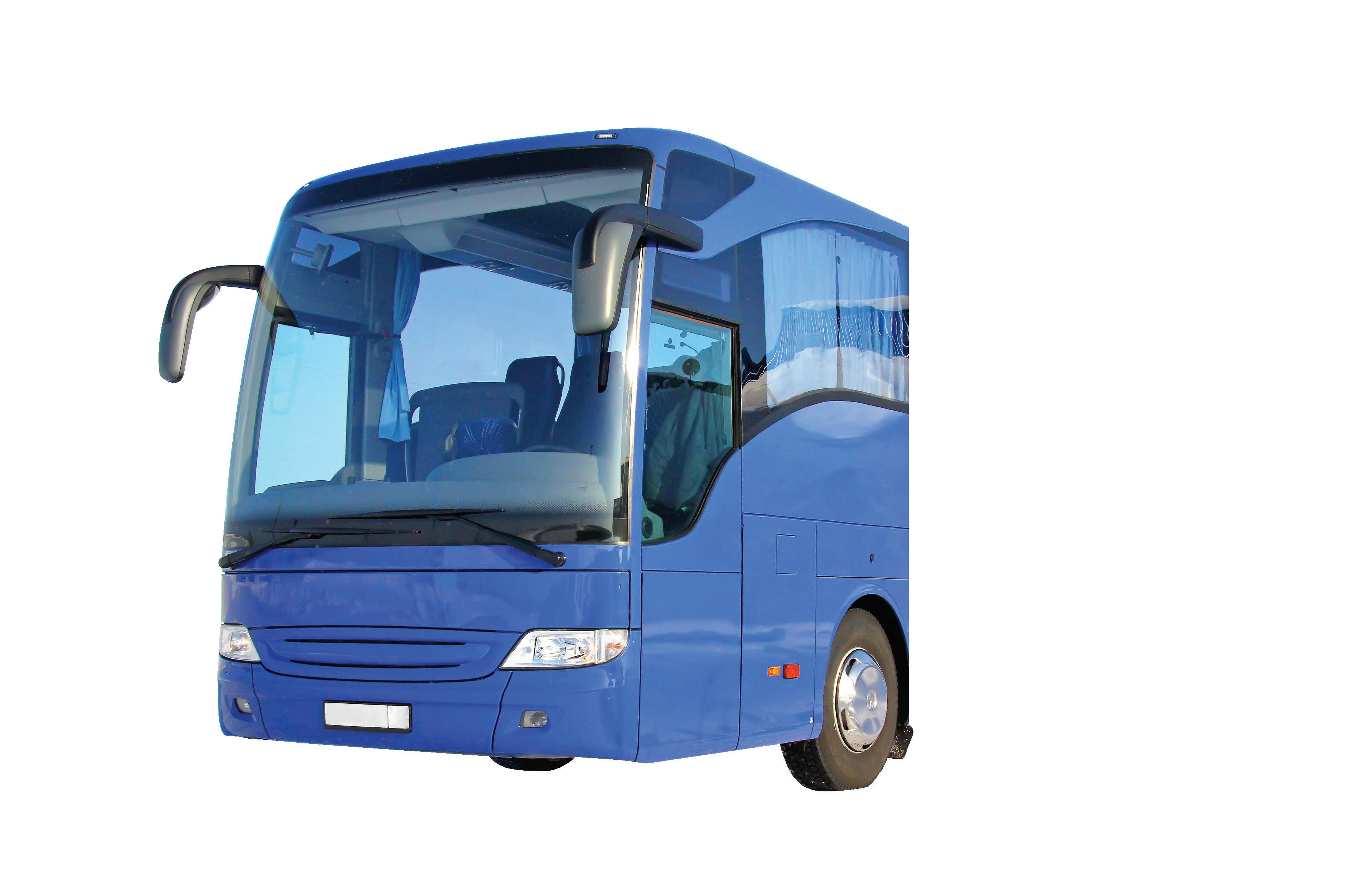


Time to tick all boxes
Fire Protection Technologies is stepping up to provide effective fire suppression solutions that suit the evolving electric transition, Tiarna Condren reports
The Australian bus and coach industry has spent years finetuning electric vehicles to be cleaner, quieter and, most importantly, safer than ever before. Introducing advanced battery monitoring systems, driver-assist technology and thermal imaging, it seems the industry has ticked all the boxes.
But while they’ve been busy making them safer on the road, there’s one
in the rearview mirror – what happens when something goes wrong and a fire breaks out?
With lithium-ion batteries powering a growing number of buses across the country, and new charging depots being built at scale, the risks involved with housing and operating electric bus and coach fleets are real and increasingly complex.
“The industry’s done a fantastic job making EVs reliable and safe,” Fire
Below: The dangerous effects a fire can
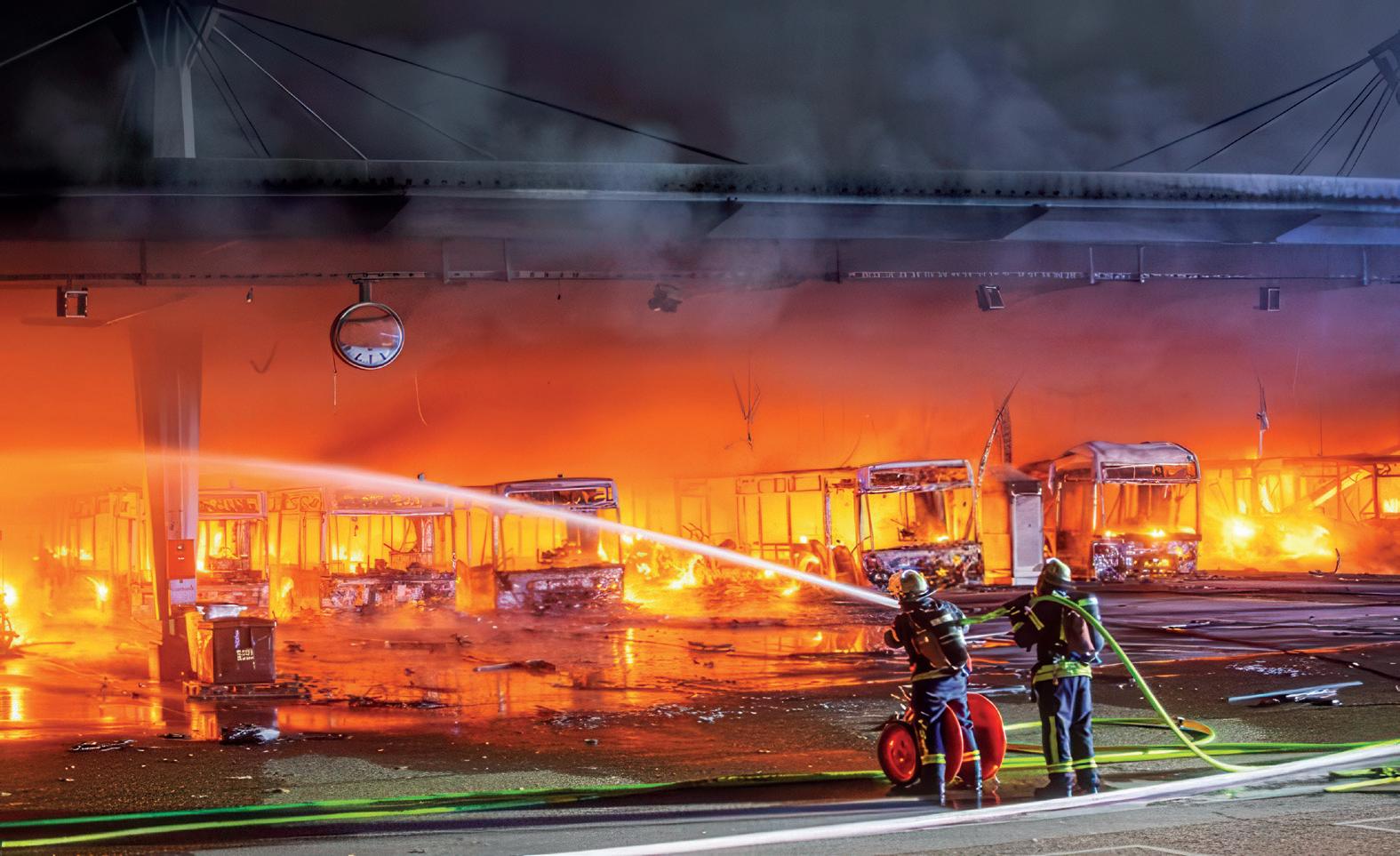
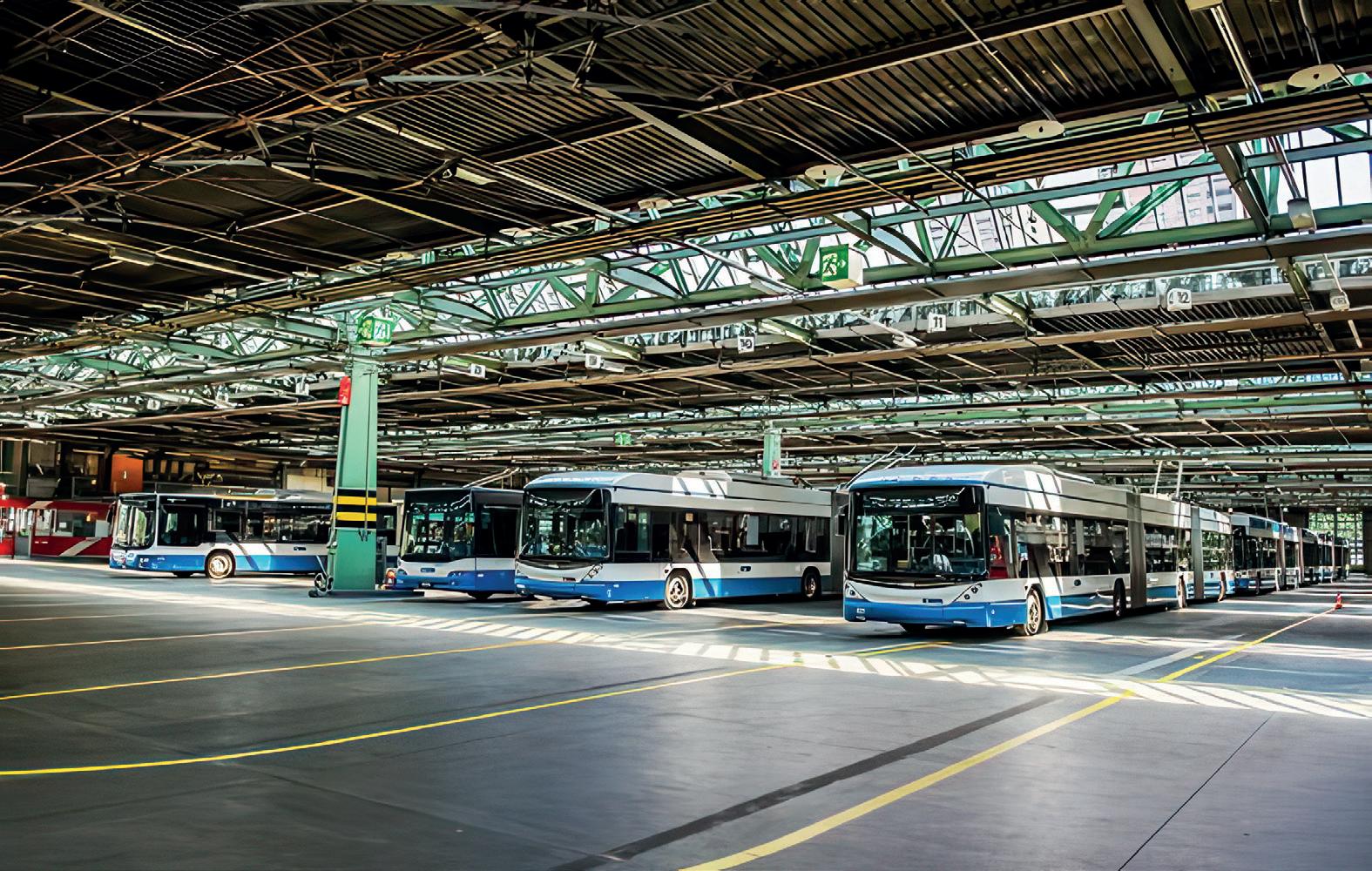
manager for water mist and oxygen reduction systems Barry Farrell told ABC
“But fire risk hasn’t been front and centre. With lithium-ion batteries, that’s not a box you want to leave unticked.”
Starting operations in the late 1990s as Halon gas systems were being phased out due to environmental concerns, Fire Protection Technologies founder Pat Harrington seized the opportunity to introduce specialist hazard products to the Australian market.
Specialist hazard products provide precise, effective fire suppression solutions that are customised to protect critical or sensitive assets where standard sprinkler systems could be too harsh or ineffective.
“Pat saw a gap and filled it,” Farrell says.
“He began importing alternatives to Halon from the US, partnering with companies like Fike and from there, the product range expanded into water mist and other advanced suppression technologies.”
Now, with electric buses and their infrastructure creating new kinds of risks that operators and OEMs alike must manage, the safety company is once again moving to fill a critical gap in the local market.
“Despite the rapid growth of electric buses across Australia, there are currently no national standards or requirements specifically addressing fire safety in EV buses, charging depots or maintenance facilities,” Farrell says.
“Traditional buses have long been covered under established fire protection codes, but with the evolving nature of EV technology, new risks aren’t yet reflected in legislation or building guidelines.
“This could lead to some problems for the industry.”
Overseas, the risks involved with
running these batteries are already being realised, as multiple depot fires have made headlines and safety guidelines have become more stringent.
Farrell says that these electric bus batteries, when damaged or faulty, can enter a volatile state known as thermal runaway which can cause intense, fast-spreading fires that are difficult to extinguish.
“When a lithium-ion battery goes into thermal runaway, it can spread rapidly, especially when buses are parked closely together in depots charging overnight,” he says.
“In Europe, where many bus depots are fully enclosed, that creates an even higher risk scenario.”
The introduction of electric buses into Australia has been slower than in countries like Germany, and while many will complain about the gradual adoption being seen locally, Farrell sees this as a blessing in disguise on the safety standard side.
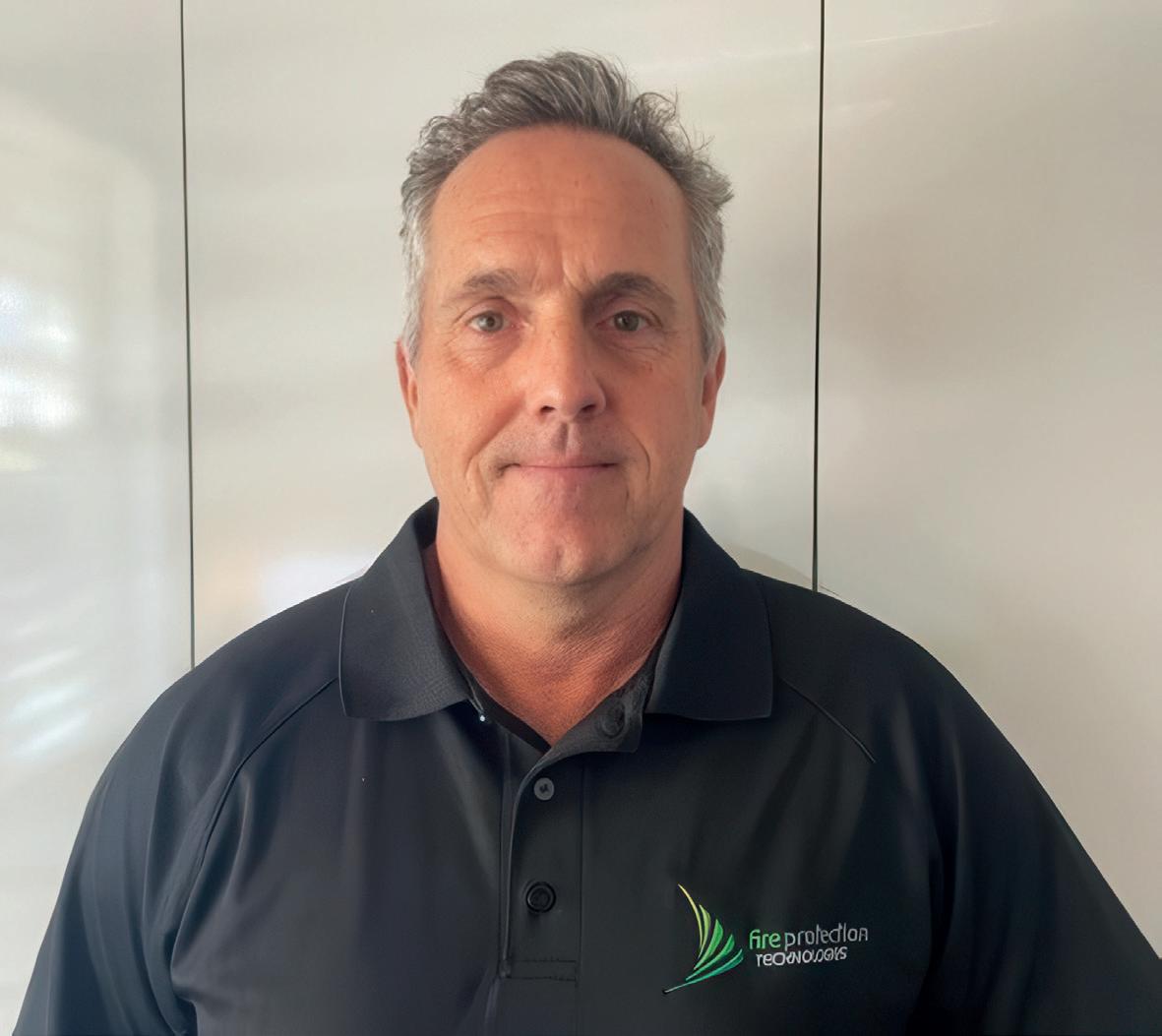
together with the company for more than a decade.
“FOGTEC has the only tested system of this kind,” Farrell says.
“We’re in a unique position to learn from Europe’s experience and deliver evidence-based fire safety solutions for new energy carriers like lithium-ion batteries, hydrogen and biofuels,” he says.
One of the ways Fire Protection Technologies aims to do this is by continuing its work with German-based fire suppressant company FOGTEC. FOGTEC brings almost 30 years of experience in water mist fire suppression, with Fire Protection Technologies having tackled modern low and zero-emissions transport safety issues
“It has worked directly with the German government under the SUVEREN program to develop protocols for battery fire suppression. And this is not just about control, but true suppression that actively reduces the heat release rate of a fire.”
Instead of dumping lots of water on the batteries like a traditional sprinkler, the mist system sprays super-fine droplets that quickly soak up heat and turn to steam. This steam helps choke the fire by pushing away the oxygen it needs to keep burning.
Due to the droplets being so small, the system can cool a fire from over
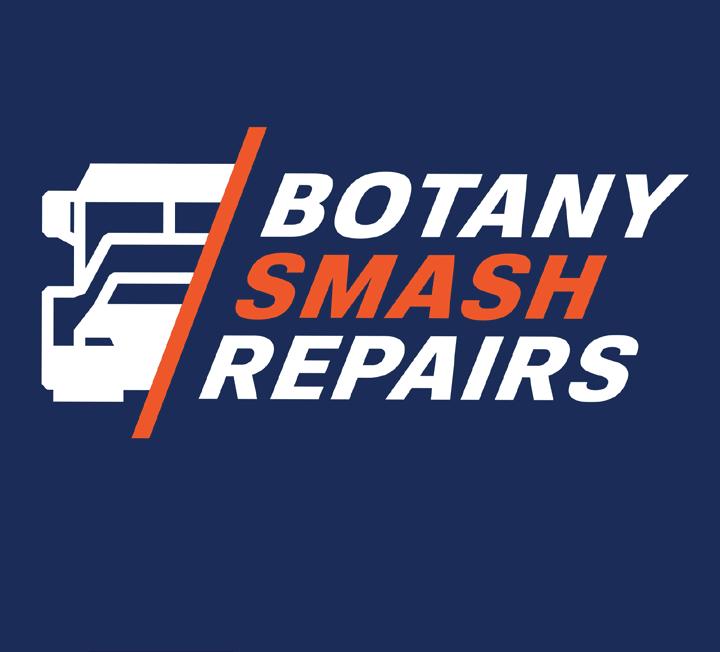

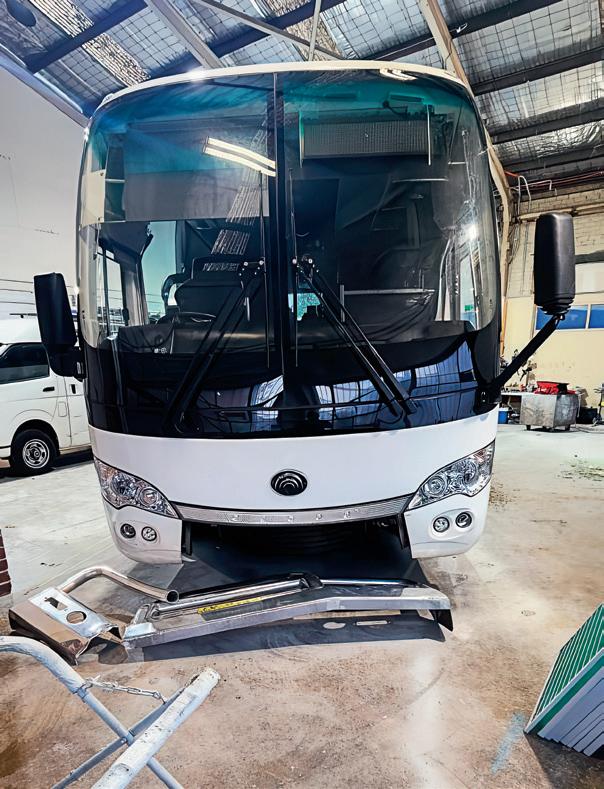
500°C down to about 50°C in under a minute.
“It’s not about extinguishing the fire immediately, but buying time, limiting its spread and reducing risk to first responders,” he says.
The benefits of high-pressure water mist systems aren’t just limited to fire safety.
Due to high-pressure water mist systems using significantly less water than traditional sprinklers, they greatly reduce the amount of contaminated run-off that can carry hazardous chemicals, debris and pollutants into the environment, helping to protect nearby waterways and reduce clean-up costs after a fire event.
“It ticks both boxes,” Farrell says.
“It’s providing a way to safeguard assets and people, while also being mindful of your environmental footprint.”
As the company continues its work in providing critical systems for operators and their buses, Farrell is still left lamenting a lack of national standards for the industry to follow. He says now is the time for change and for pen to be put to paper to make electric vehicle safety guidelines official.
“We need collaboration between government, insurers, engineers and the fire protection industry to create a national standard for fire safety in EV bus depots or charging environments,” he says.
“We’ve seen what can happen when things go wrong, and it would be irresponsible not to act on that knowledge now.”

Above: Fire Protection Technologies product manager for water mist and oxygen reduction systems Barry Farrell
Switched on
E-T-A’s newest innovations are silently powering the transition to zero-emission vehicles
When it comes to electric buses, most of the focus tends to be on big, obvious innovations like battery technology or electric drivetrains. But behind the scenes, it’s the small, smart components that are helping drive real change.
German parts supplier ElectroTechnical Applications (E-T-A) is playing a quiet but crucial role in that transition, working with bus manufacturers to lighten the load and reduce emissions without cutting corners on safety or performance.
“We’re trying to reduce complexity, save weight and lower power draw,” E-T-A Australia managing director Andrew Skaltsounis told ABC.
“That’s what makes our components so valuable, especially in electric buses where every kilogram counts and every amp matters.”
At the heart of this effort is the EPR10, a solid-state electronic power relay designed for use in high-current applications on 12 and 24-volt electrical systems.
“In high-power battery circuits, especially in electric buses, the EPR10 can handle key switching operations without generating heat,” Skaltsounis says.
“That means no risk of overheating, no extra space taken up by heat sinks, and less weight overall.”
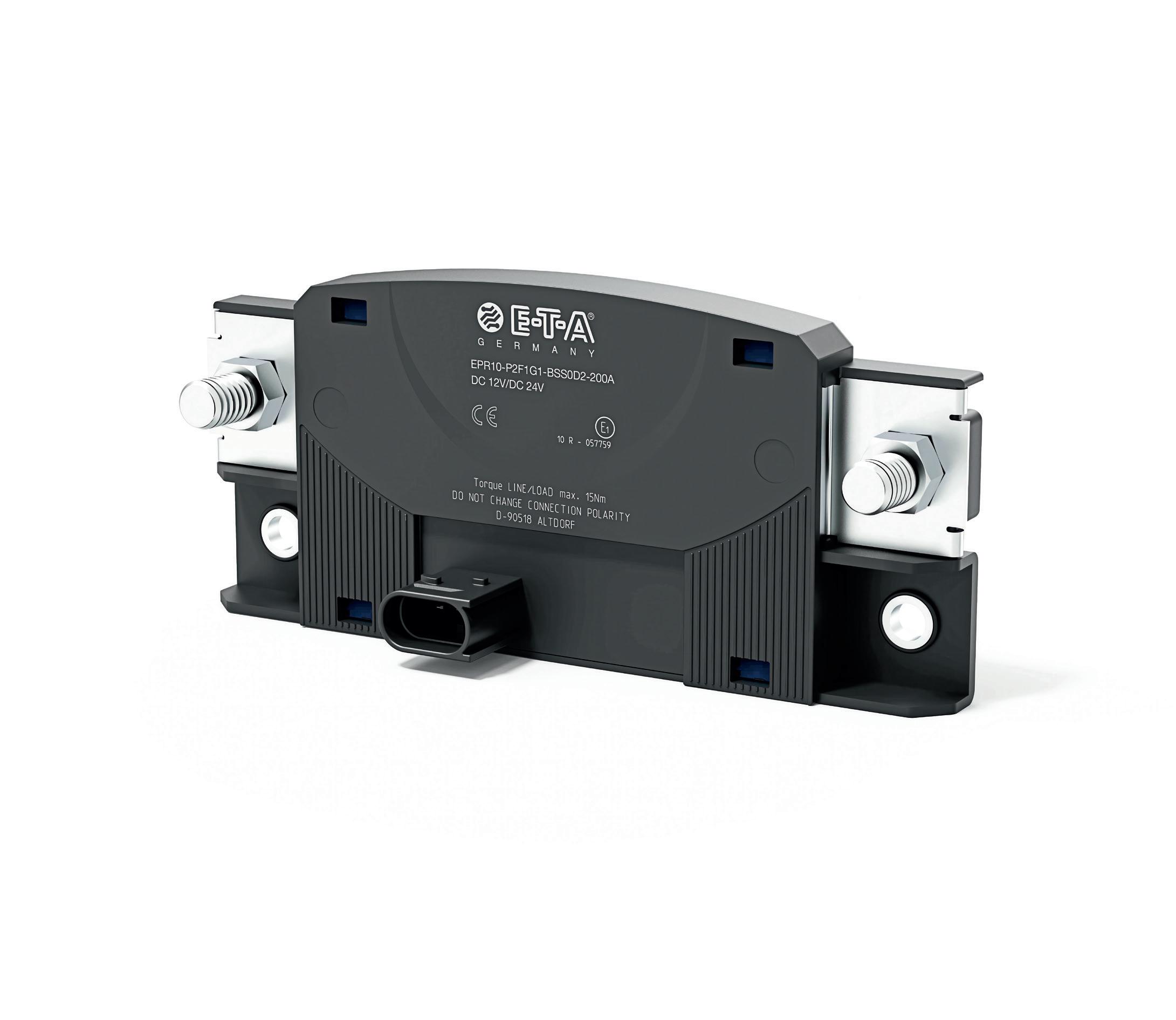
Unlike traditional relays that rely on mechanical switching and often generate heat that requires bulky heat sinks, the EPR10 operates silently and efficiently, with no need for external cooling.
Introduced to market around two years ago, the relay quickly earned a reputation for reliability. Available in two variants, the EPR10-N (a standard relay without protective functions) and the EPR10-P (a protective relay that monitors load current and thermal load), it offers continuous current switching of up to 200 amps at 24 volts DC.
Used for high-load systems in buses and utility vehicles for pumps, ventilations and cooling systems, the relays are vital to vehicle operation and passenger comfort.
With its advanced heat management, the EPR10 eliminates the need for extra cabling, fuses or bulky mounts. Instead, it’s cooled via its own connecting cables, and its compact size takes up to 80 per cent less space than comparable solutions.
By reducing internal resistance and holding power, it requires less energy to operate, particularly in standby conditions. That means lower energy demand from the battery and, over time, less strain on the entire system.
“People might say, ‘Well, if you’re only saving 500 grams on a component here or there, what’s the big deal on an 18 tonne bus?’” Skaltsounis says.
“But it’s not just the weight of the relay itself. It’s about reducing the entire system’s complexity – fewer cables, fewer components, less heat and ultimately, fewer failure points. That all contributes to better energy efficiency and lower emissions.”
The EPR10-P also includes built-in
current and thermal monitoring. If a circuit overloads, the device automatically disconnects the load and issues a group fault signal, helping to prevent overheating, fires or further electrical damage, which is especially valuable in demanding operating conditions.
With sealed circuitry, the EPR10 is highly resistant to dust, moisture, vibration and mechanical stress, making it a natural fit for vehicles that operate all day, every day, often under punishing conditions.
“If you’re building out a panel and need a reliable, compact component that won’t overheat or rattle loose, this is the one,” Skaltsounis says.
The company is also continuing to evolve its product range, including the MPR20 series of relays and the SCS switching systems, which are used for lower-power circuits.
Each of these developments, whether big or small, feeds into a broader goal of helping bus manufacturers meet sustainability targets without adding complexity or sacrificing performance.
And that’s exactly where E-T-A shines, behind the scenes, helping to power the future of transport.
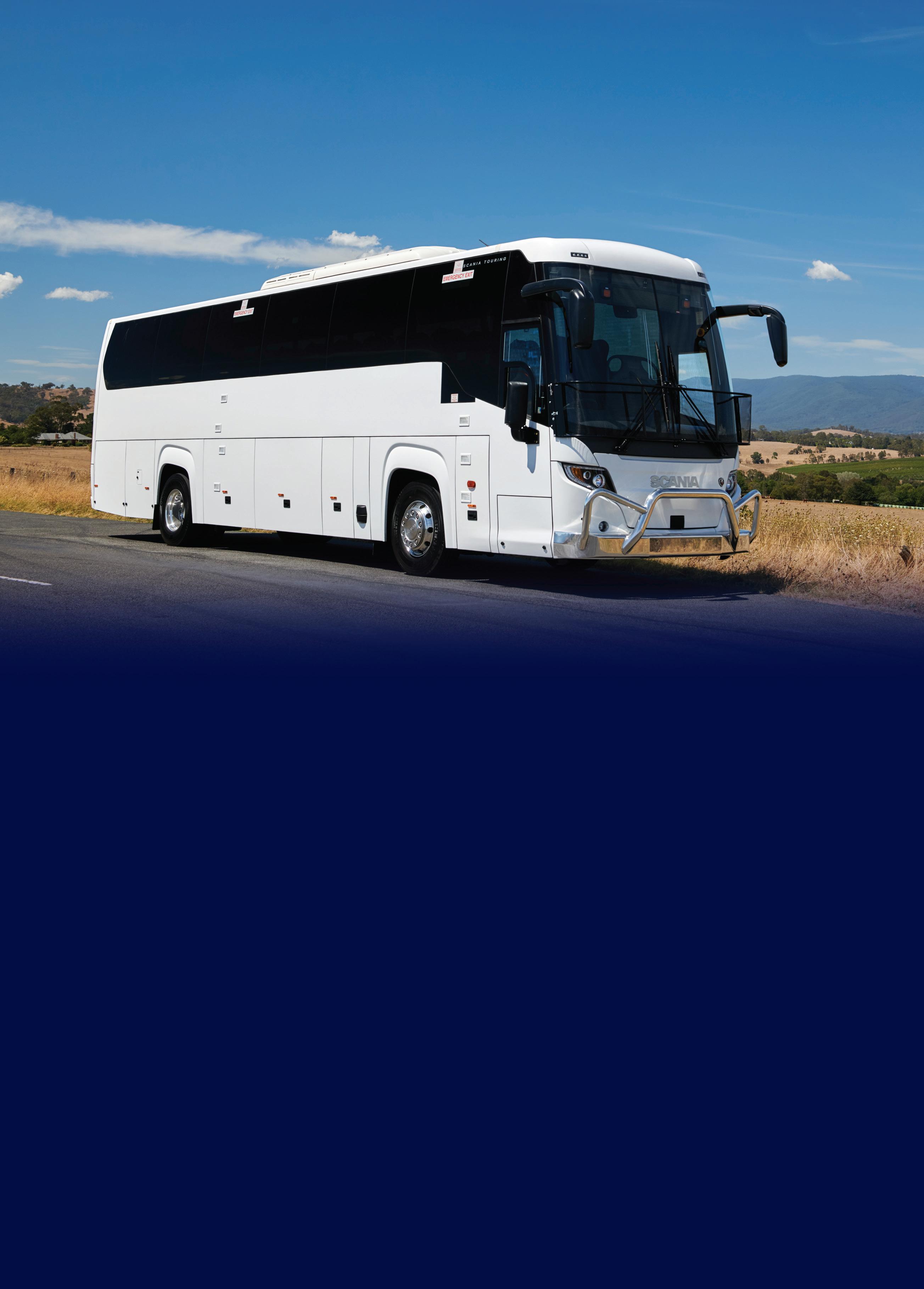
Above: The EPR10 is available in two variants. Image: E-T-A ElectroTechnical Applications
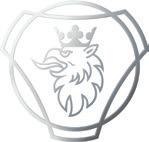


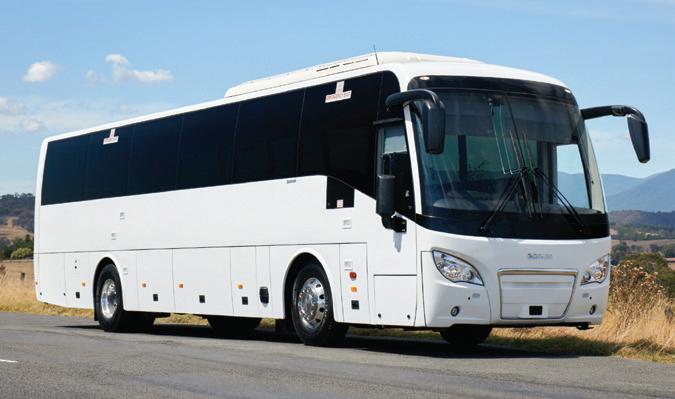
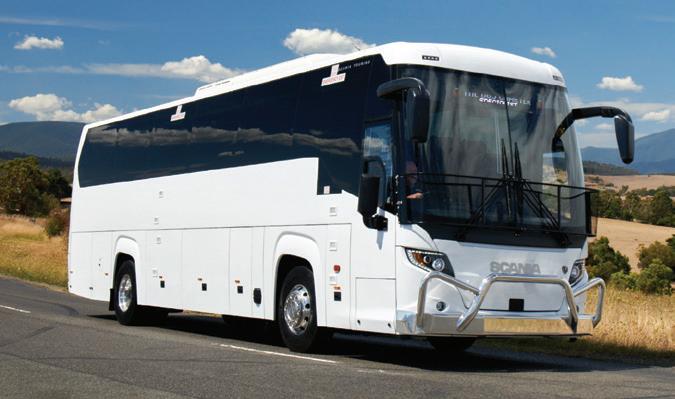
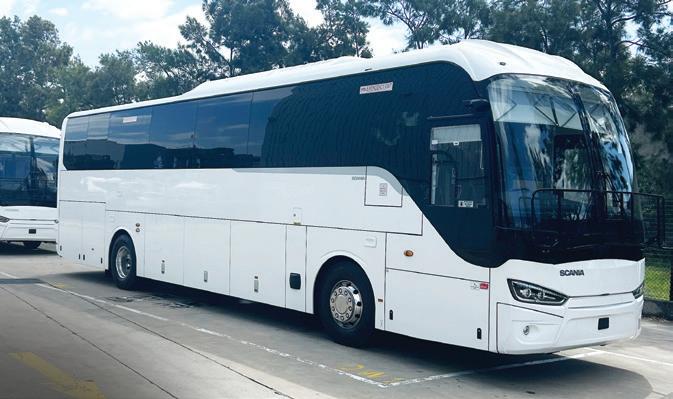
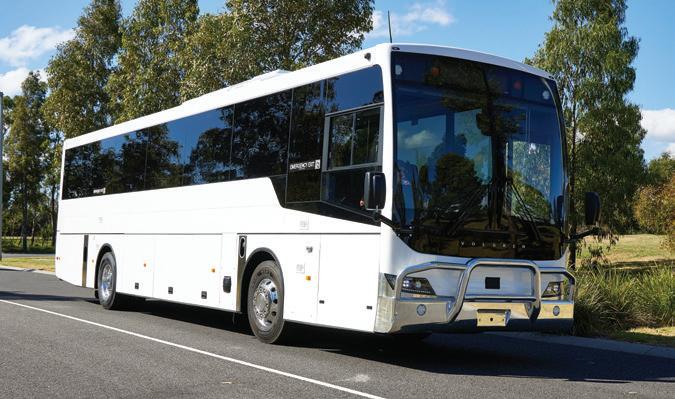
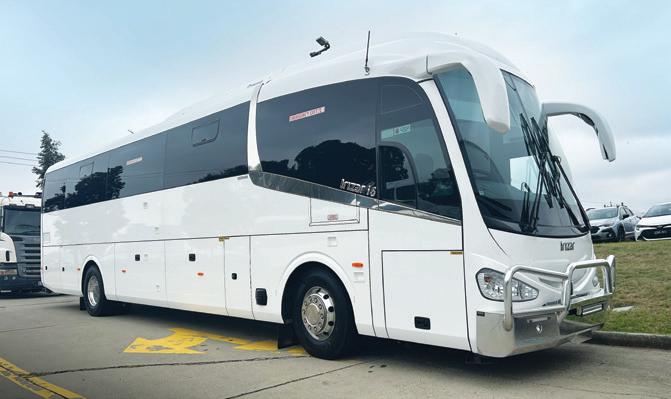
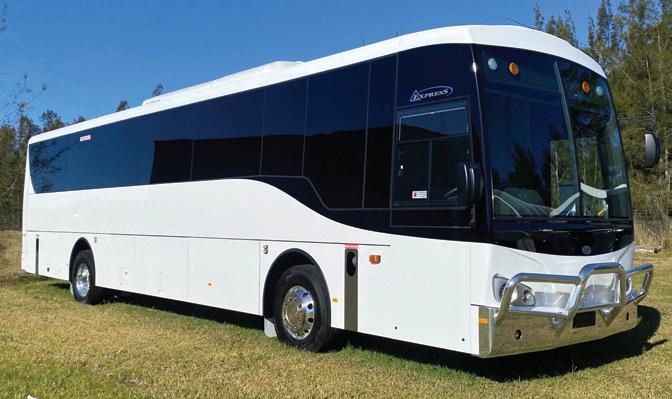
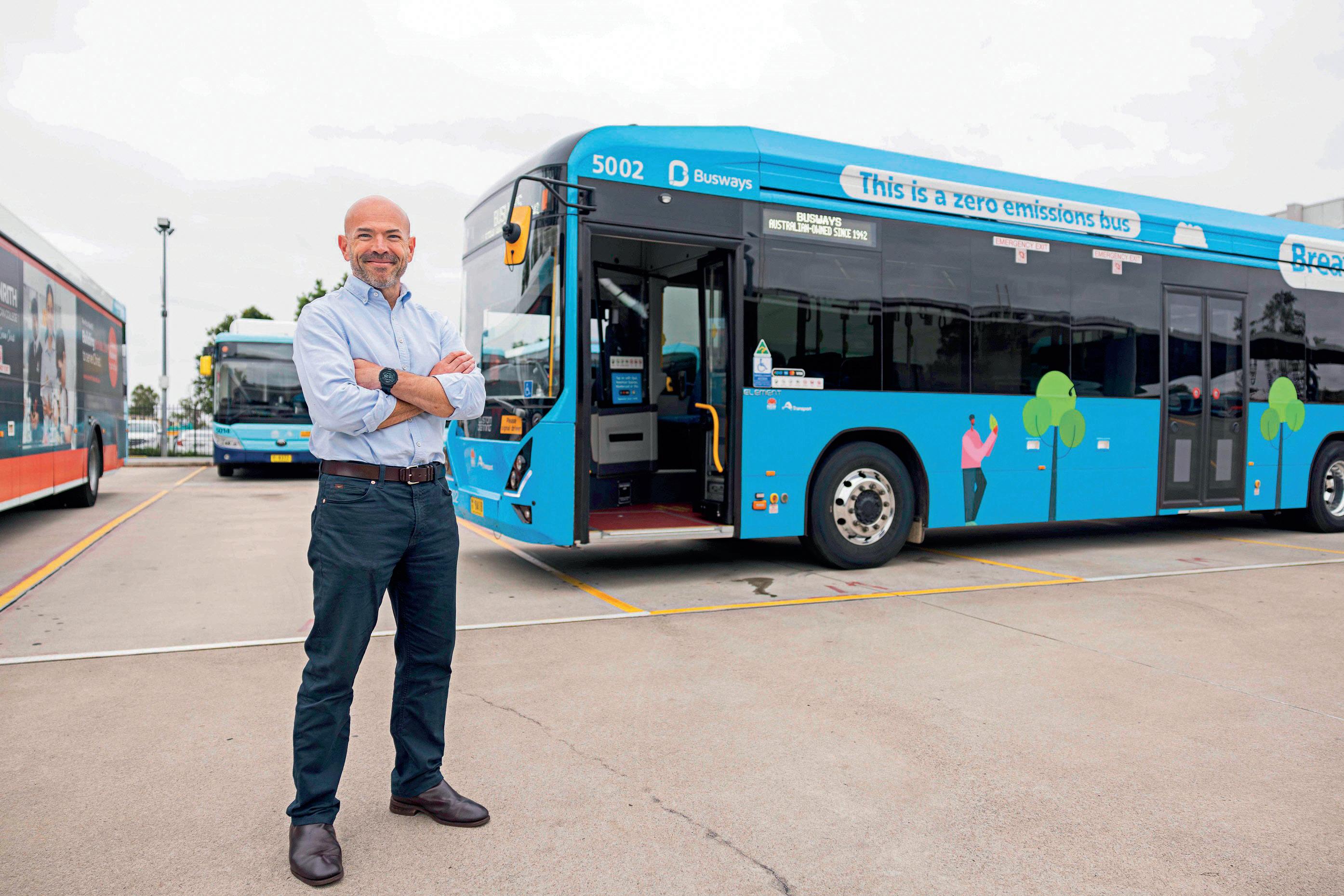
Driver’s seat
Since January, Busways has been led by a new CEO outside of the Rowe family. But Will O’Neill is quickly proving that he’s up to the challenge of leading the longstanding operator
Growing up in the Sydney suburb of West Ryde, buses have always been an integral part of Will O’Neill’s life.
“My mother didn’t drive, so buses were our main means of getting around when I was a kid,” he told ABC “Whether it was going to the dentist or heading to Parramatta to do special shopping, buses were always important.”
Now, decades on, buses form an even larger part of Will’s life. Since January, 10 years since he first started
at the company, Will became the chief executive officer of New South Wales operator Busways.
Will is proud to be in the bus industry, to have the sector coursing through his veins. However, that doesn’t mean being the CEO of Busways is always rosy for him and his family.
“I have seven children, a number of which are school aged, and they catch our buses to school,” he says with a chuckle.
“It’s nice being the boss of the company that delivers their school
Above: Will O’Neill is the new CEO of Busways, with Byron Rowe the new executive chair
bus services but the downside is when a bus happens to arrive late and everyone knows to come to me.”
Will hasn’t stepped in to just any old local bus company. As the largest Australian-owned bus operator, Busways has a rich legacy in both the NSW and national industry. For the past 82 years, since Dick Rowe founded the company, Busways has been led by the Rowe family, with Dick’s grandson Byron the latest managing director.
The move to handing over the reins to someone outside of the Rowe family is a massive step, with Byron

assuming the role of executive chair of the Busways board following his seven year stint as managing director that saw the operator double in size. While it’s sizeable shoes to fit into, Will is ready to continue the successful Busways history.
“It’s a great privilege to be leading Busways as CEO,” he says.
“As a business, it has such a great heritage and legacy as a family-owned company. While it is still family owned, Busways has never been about the family that owns it –it’s been about the business family and the wider Busways team.
“It’s been a consistent theme for decades that continues to this day that Busways is never about the singular person, but instead the wider collective.”
So who is the new leader of Busways, and what does he bring to the table? Will’s experience speaks for itself, with more than 30 years spent in senior executive leadership, corporate finance and strategic planner roles. This includes being a director at Pitcher Partners, the Australian strategy manager of ORIX, a partner at KPMG and an executive director of accountancy firm Kelly+Partners.
His involvement in the bus industry may not have been as pronounced during this time, but in 2014 he returned to the sector that was so pivotal in his childhood. It started with the group manager of strategy role at Busways before Will became the chief financial and commercial officer in 2018. Now, as the CEO, he’s prepared to take over the likes of Byron and Dick to continue the Rowe family business’ rich legacy.
“I’ve spent a couple of decades in consultancy and accounting, working across a broad range of businesses and industry sectors,” he says.
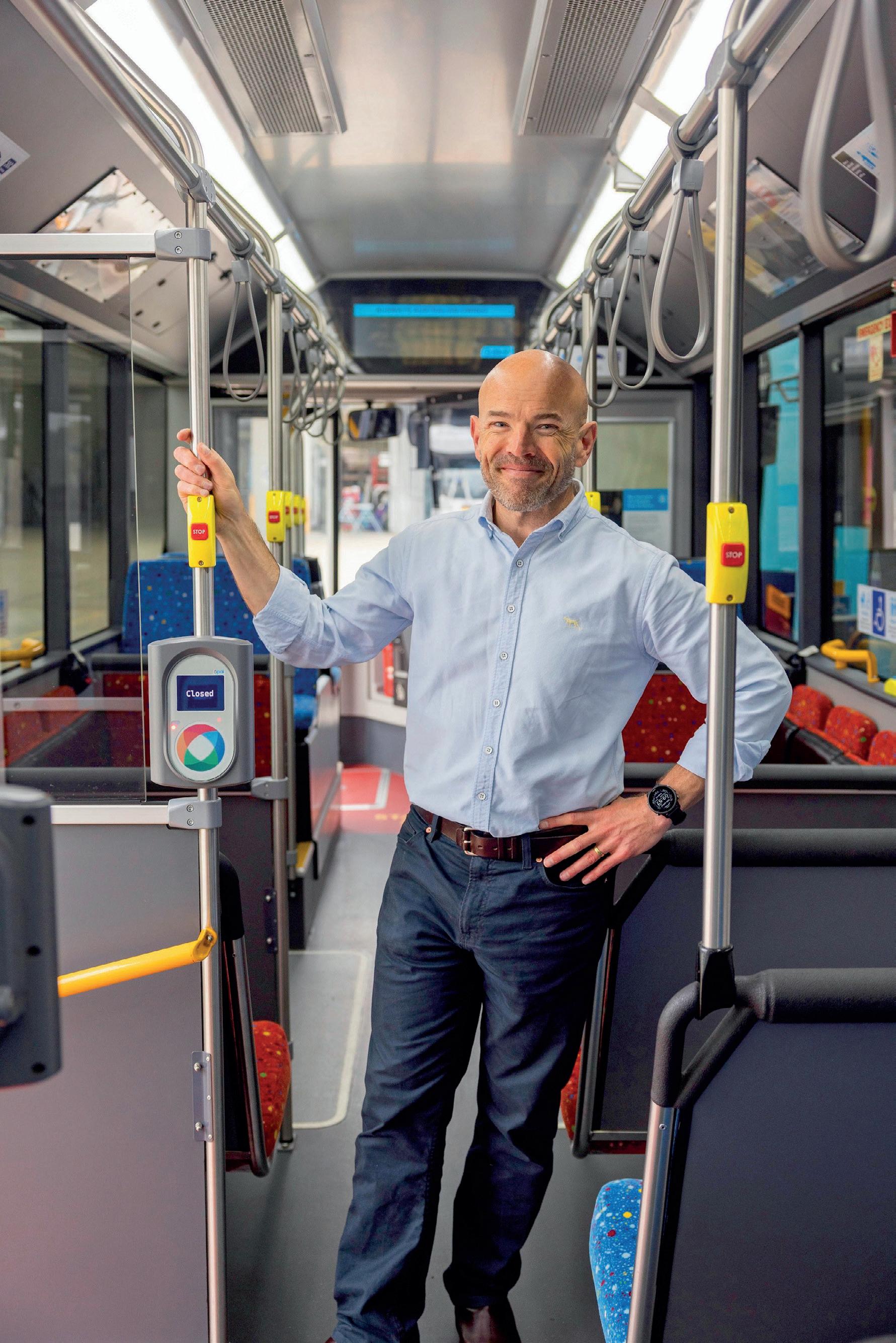
“That’s allowed me to bring a kitbag of insights into Busways. I’ve received wonderful tutelage from Byron and Richard on the bus business that has more or less prepared me for the role of CEO.”
Will’s experience at Busways in his decade at the NSW operator has included playing an active role in tendering. It’s a sector that has proven critical to Busways’ longevity – in the
1970s there were approximately 40 private bus operators in the Sydney metro area alone, making it the most challenging and competitive markets in the country. Now there’s only one – Busways – and it serves 20 per cent of the market. Tendering has proven crucial to adjusting to this drastic change in operating conditions.
Will also played a major role in developing the on demand services in The Ponds, north-west of Sydney’s CBD.
“The on demand service has been hugely popular and is very much up there with some of the best on demand services in the world,” he says.
“That was my baby, and the experience has put me in good stead to take on the role of CEO and cover all aspects of the business.”
Since stepping into the role in January, Will has already had to tackle a fast-amassing pile of industry issues that are challenging operators. From driver shortages to the increasing
Above: Will has capped off a long history around buses with the role of CEO of Busways
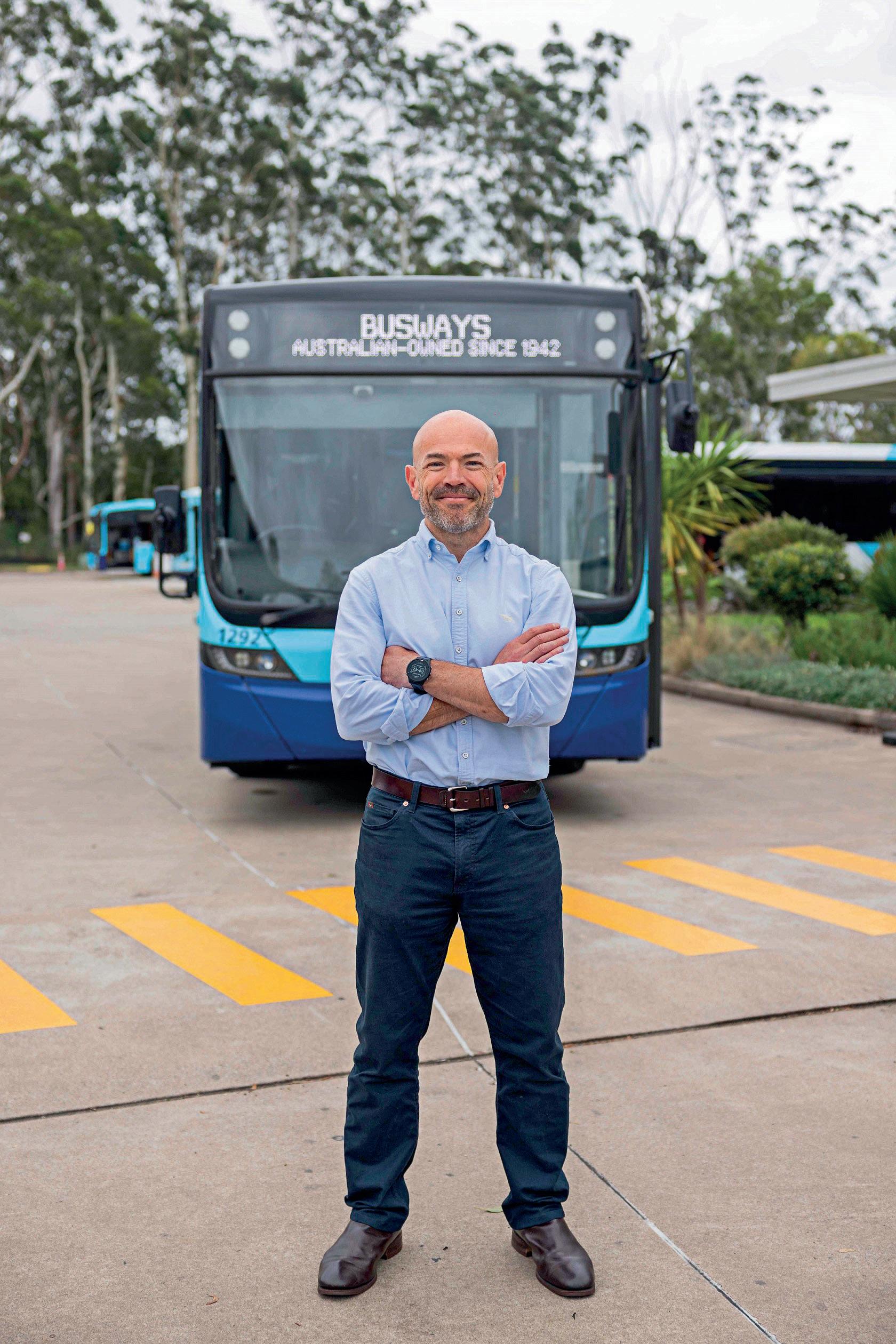
difficulty of contract tendering, Busways is in the midst of change in the Australian bus industry.
“The challenges that we’re facing as an industry have been a great stimulus for me to kick into gear in this role,” he says.
“It has also allowed me to very quickly establish myself and create a bond with the leadership team. We’ve forged a closer and more collaborative working relationship that has had to work through changes that have occurred.”
This new look leadership team also includes the promotion of Helen Wong to Chief Financial Officer in
January, with Helen mirroring Will in starting at Busways around a decade ago. As part of this latest operating model that Busways has created at the top, Will leads the entire company while Byron now looks at bigger picture topics from his position as executive chair.
“It’s very important to have someone out of the daily operations who can have an overarching view of where the industry and where our business is at – that’s what Byron is doing,” Will says.
“He looks at the more strategic elements, while a large part of my focus is on our day-to-day operations
and our execution.
“Byron is an exceptional professional and has an outstanding understanding of the industry – he continues to add a huge amount of value to the business in his new role.”
Under this evolving leadership structure, what does the future look like for Busways? Will says it’s all about growth – the nature of tendering and contracts means operators have to continue building their operations to a size that makes organisations resilient to contract changes.
With a “clear aspiration” of reaching 3,000 buses in the fleet by 2034, Will says this growth can be reached in a variety of ways.
“We’re in the fortunate position that we haven’t had to re-direct our business in a different way,” he says.
“My focus is on continuing the evolution of the business that Byron has established while continuing to improve on our execution each and every day.”
It may seem like any usual year, but 2034 is a key number for Busways. All eyes are focused on reaching this audacious bus fleet goal. While this happens, the NSW and wider Australian industry continues to consolidate. Will is adamant this process is ongoing, and that Busways needs to be on the right side of consolidation.
“Our goal is to ensure we’re one of the consolidators, and not a business being consolidated,” he says.
“We need to do this without losing what makes us special. We’ve established ourselves as pioneers in numerous sectors, particularly with zero-emissions buses. We’re making a clear focus on trying to establish best practice in that space and become a leader.”
Recently, Busways has also signalled its intention to grow into different areas. When Dick Rowe first founded the operator, it was based in the beating heart of Sydney’s suburbs. Now, Will has aspirations to bring the Busways badge to more Australian states in the near future. In NSW alone, Busways is operating all over Sydney and the Central Coast, the NSW north coast and in South Australia. The goal is to not stop there.
Above:
The new leadership structure sees Will oversee the day-today operations
“We want to be the go-to operator for our clients, including transport authorities in South Australia, New South Wales, Victoria and Western Australia,” he says.
“On the technology side, we also want to have 50 per cent of our fleet be electric buses by 2034. We’re well on track and have a clear pathway to achieve this. While doing so, we’re keeping an eye on other advancements in bus technology.”
This doesn’t mean the present is filled with joy and success – Will admits Busways is continuing to work through industry challenges. While he feels that Busways “is on the other side” of the driver shortage, he is leading the operator through a bus crisis and a slower electric bus roll-out in NSW than predicted.
“We’re working closely with Transport for NSW to achieve the deployment of more electric buses as soon as possible,” he says.
“One side benefit to this challenge is
it allows us to work more collaboratively in the market with other operators – collaboration is key and we now look to the government to come to the party and achieve better solutions.”
For the immediate future, Will is committed to delivering the best services each and every day for passengers. This includes supporting an ever-growing team that he is immensely proud of. It’s this culture that he wants to foster and build on as Busways searches for more success around Australia.
“I’m so proud of our team of 2,800 people who withstand all of our challenges, from increased congestion to bus shortages and a rise in anti-social behaviour – they try and do their best job every single day,” he says.
“My favourite part of the role so far has been getting out to depots and talking with our drivers, mechanics and depot staff to understand what is happening on the coalface. They’re
very passionate, invested and resilient – this underpins Busways’ success to date and will do so going forward.”
As Busways casts its eyes on the lofty goals it has placed in front of itself, it is also calling on the industry to continue supporting local operators. While Busways may be the largest 100 per cent Australian owned operator currently, Will knows the industry needs to continue giving local operators the chance to shine.
“We believe Australian operators should have a fair representation in the market and have something to offer it more broadly,” he says.
“We have strong ambitions to expand into other states and we think we can add good value there, so when opportunities arise we’ll put forward our credentials.
“It will strengthen our business and allow us to become a larger and more diversified Busways that provides opportunities to our people.”
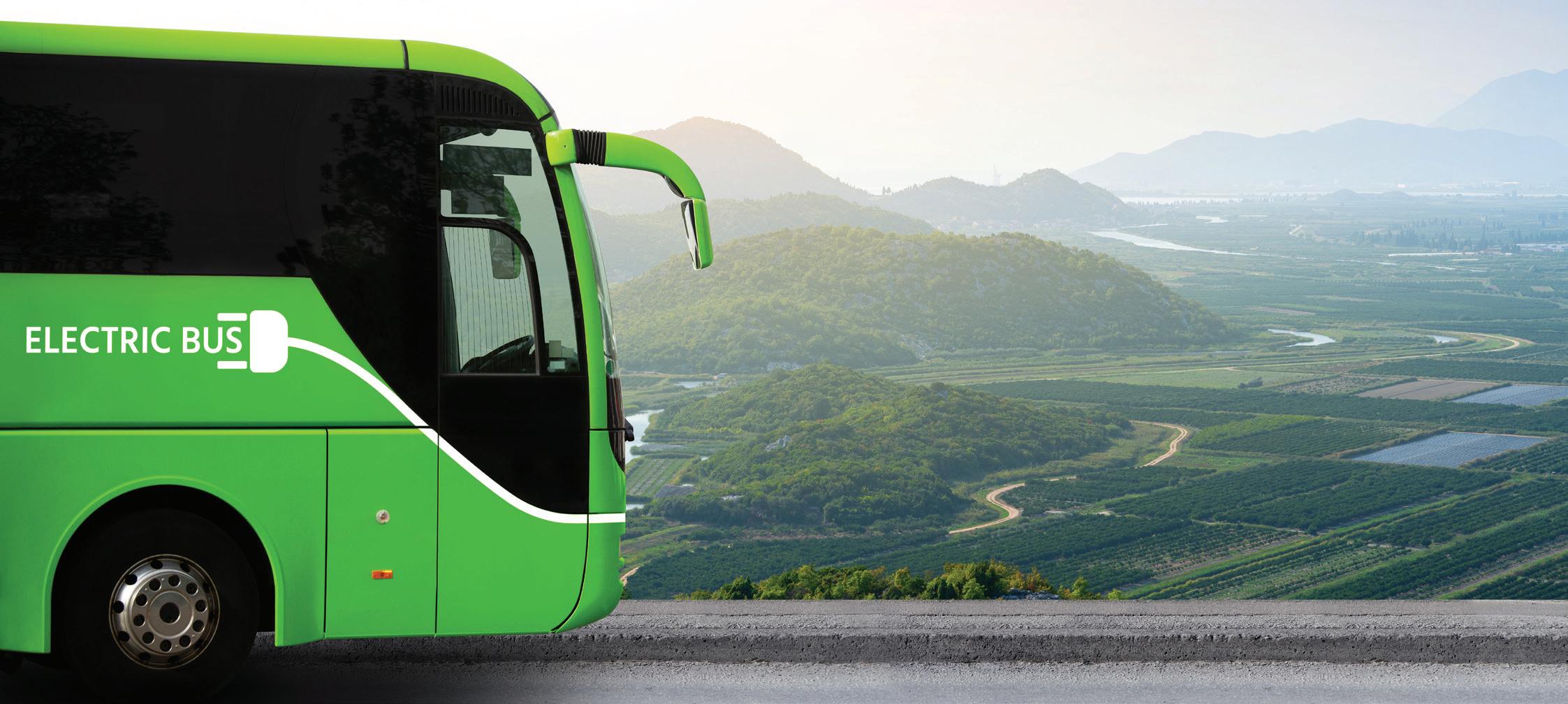
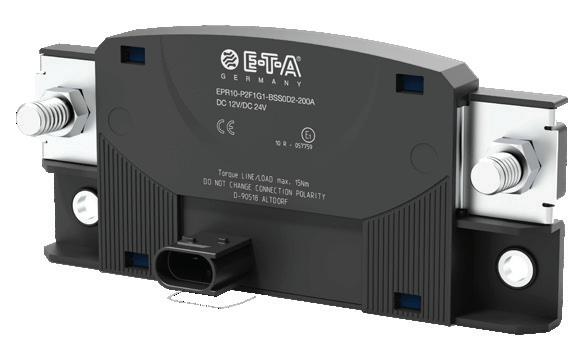
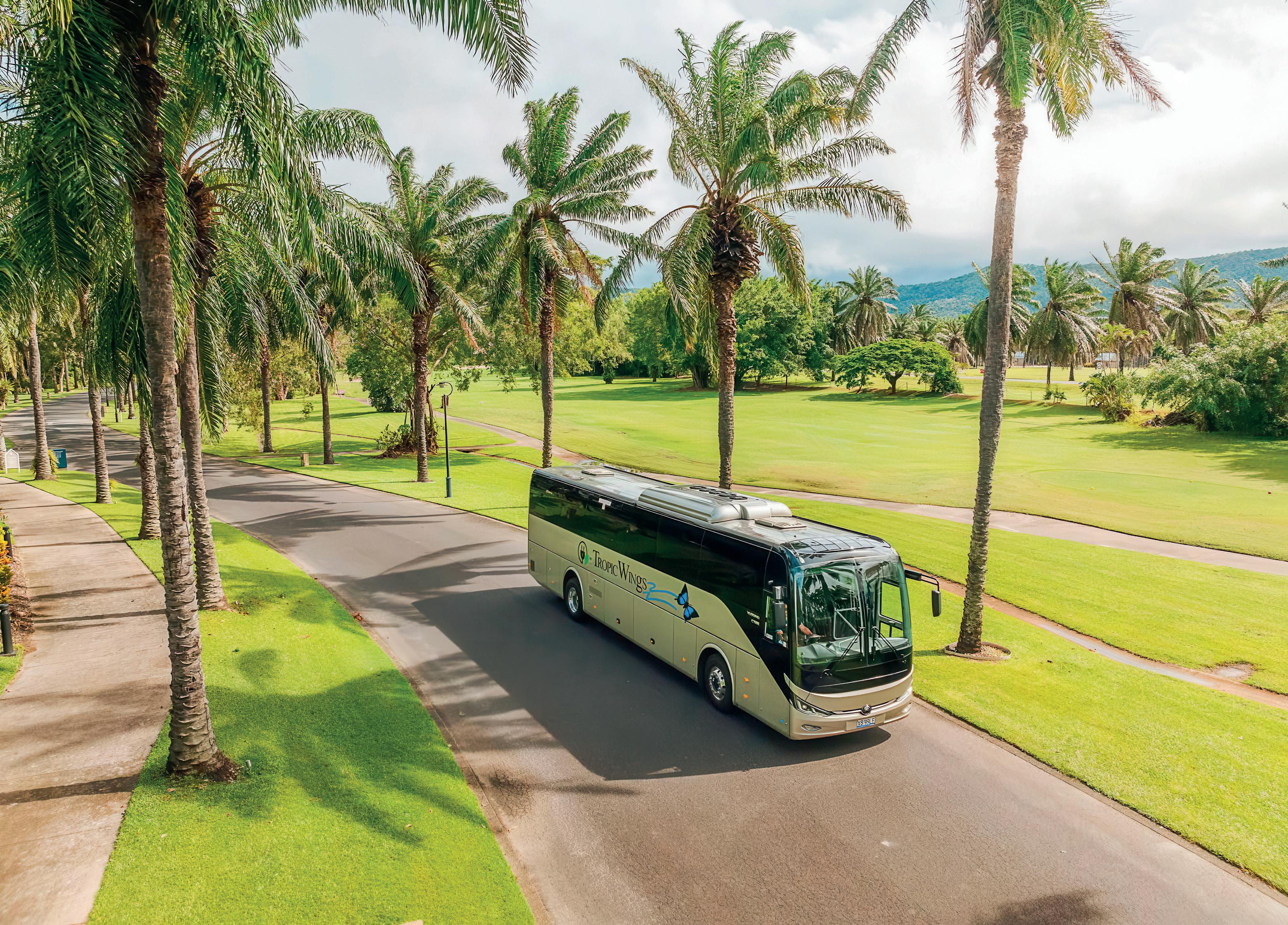
Driving real impact
For years, Yutong has had its eye on bringing over its electric bus technology to Australia. Its partnership with Tropic Wings allows it to be at the forefront of sustainable change
With zero-emissions deadlines and sustainability targets looming closer, operators across the country are faced with one important question. To electrify or to not?
For some, the decision is made for them, with state governments slapping down mandates with a timeline. For others, however, the choice to turn electric is one they embrace with open arms.
Among the latter is operator Tropic Wings. Leading a quiet revolution in Far North Queensland, the company’s daily tourism operations have been running cleaner, smarter and more sustainably for over five years due to its move to welcome zero-emissions technology into its operations.
Taking delivery of a Yutong E12 back in 2019, the Cairns-based company has been carving out a leadership role in sustainable transport ever since.
Now, the company boasts a fleet of almost 40 buses, with 36 per cent already electric models.
“Tropic Wings is showing how practical decisions today can shape a cleaner and quieter tomorrow for its passengers and community,” Yutong Queensland and Northern Territory account manager Clark Jingxin told ABC
“This commitment to electrification isn’t just symbolic. From scenic charters to daily shuttles through the Cairns Botanic Gardens, Tropic Wings has made electric buses a core part of its operations.”
The Yutong D7E and C12E models
Above:
Tropic Wings boasts a fleet of almost 40 buses, with 36 per cent already electric models
form the backbone of Tropic Wings’ electric fleet, with these particular buses selected for their range, comfort and proven performance in hot and humid environments.
Used across the operator’s tourism, school contracts, charter and long-distance work, the electric models have helped redefine the customer experience – with driver and passenger comfort a big selling point.
Standing by the operation philosophy of “putting customers at the centre”, the C12E boasts a new generation of luggage racks and semi-hidden brackets balancing aesthetics with practicality.
A spacious flat floor, new-style air outlet and high-quality seating round out some of the customer-fo -
Images: Yutong

cused details that make the model a popular vehicle for passengers to hop onboard of. For the drivers, the car-like layout and multi-functional steering wheel, coupled with fully automatic headlights and wipers, make for an improved driving experience.
The D7E combines innovative technology and thoughtful design, delivering an exceptional passenger experience that exceeds the needs of operators across Australia.
“Safety is paramount for us,” Jingxin says.
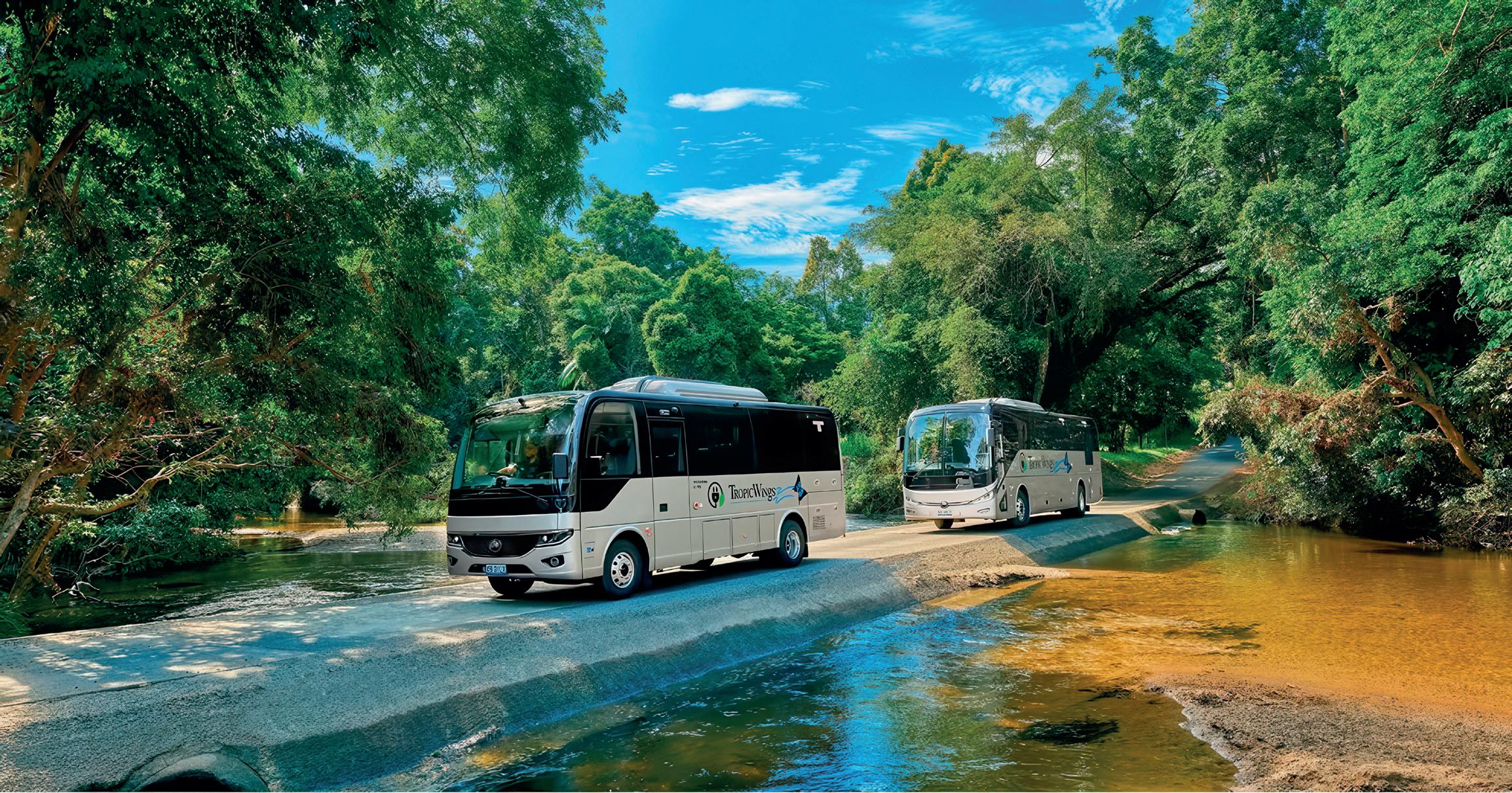
“The D7E is equipped with lane departure warning, blind spot monitoring and a range of other advanced safety technologies.
“These features work together to help prevent accidents and keep passengers safe.”
With the Yutong electric models providing a smoother, quieter and more environmentally responsible journey for passengers and drivers alike, Jingxin says none of it would be possible without the right technology behind the scenes.
Yutong’s Link+ Telematics platform powers the day-to-day efficiency of the operation, giving Tropic Wings real-time access to energy use, fault alerts and GPS tracking. Additional local driver training and 24/7 technical support from Yutong means the team can focus on running services, not solving problems.
“Working with Tropic Wings has been a true collaboration,” Jingxin says.
“They’ve helped us better understand regional tourism needs and we’re proud to support their push to make sustainable transport a real-world success.”
For Tropic Wings, the shift to electric has delivered practical business outcomes, with the company reporting a 30 to 40 per cent reduction in running costs per kilometre. Maintenance requirements are lower, vehicle availability is up and passengers are consistently enjoying the difference.
With more than a year of daily service under their belt, the electric fleet isn’t just meeting expectations –it’s raising them.
“It’s not just about saving money or going electric for the sake of it,” Tropic Wings general manager Colin Anderson told ABC
“Our passengers enjoy the ride more, and we know we’re helping keep Cairns clean for the next generation.”
Anderson says that the feedback from the local community has been just as rewarding.
“We’ve even had locals stop our drivers to ask about the buses. People notice the difference, especially around town where the quiet ride and lack of fumes really stand out.”
With fewer emissions and less noise, the impact of the new fleet extends beyond the depot.
Tropic Wings estimates its transition to electric has removed the equivalent of 2,954 tonnes of CO2 emissions annually, a figure comparable to planting 33,696 trees every year.
It also means clearer air and quieter streets around some of the region’s
most iconic tourism destinations.
Tropic Wings is now within reach of its goal of converting four in every five vehicles in its fleet to electric by the end of the decade, and that ambition is already influencing how other operators are setting their own fleet targets.
From operators on the Great Ocean Road to those in Central Australia, tourism businesses across the country are watching how Tropic Wings is committing to a more sustainable form of tourism transport.
The operator’s success isn’t just about being among the first to make the switch, but about making bold choices and pairing them with the right technology partner to support it.
In this case, that partner is Yutong.
“We’re having more conversations with operators who’ve seen what Tropic Wings has done,” Jingxin says.
“When they see it working in real-world conditions, it builds confidence and drives momentum.”
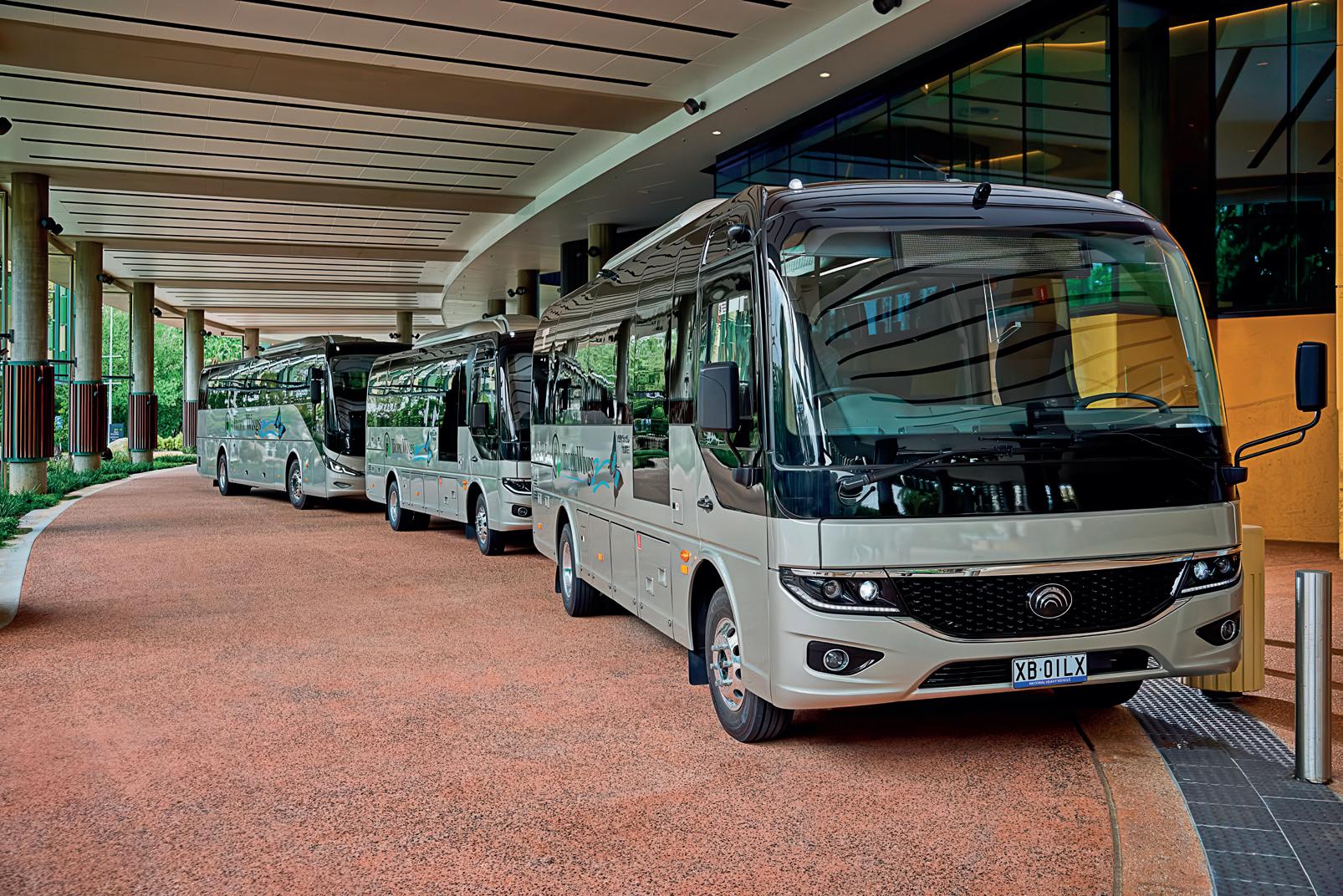
Below: Tropic Wings has reported a 30 to 40 per cent reduction in running costs per
Above: The operator says that the feedback from the local community on the Yutong models has been very rewarding
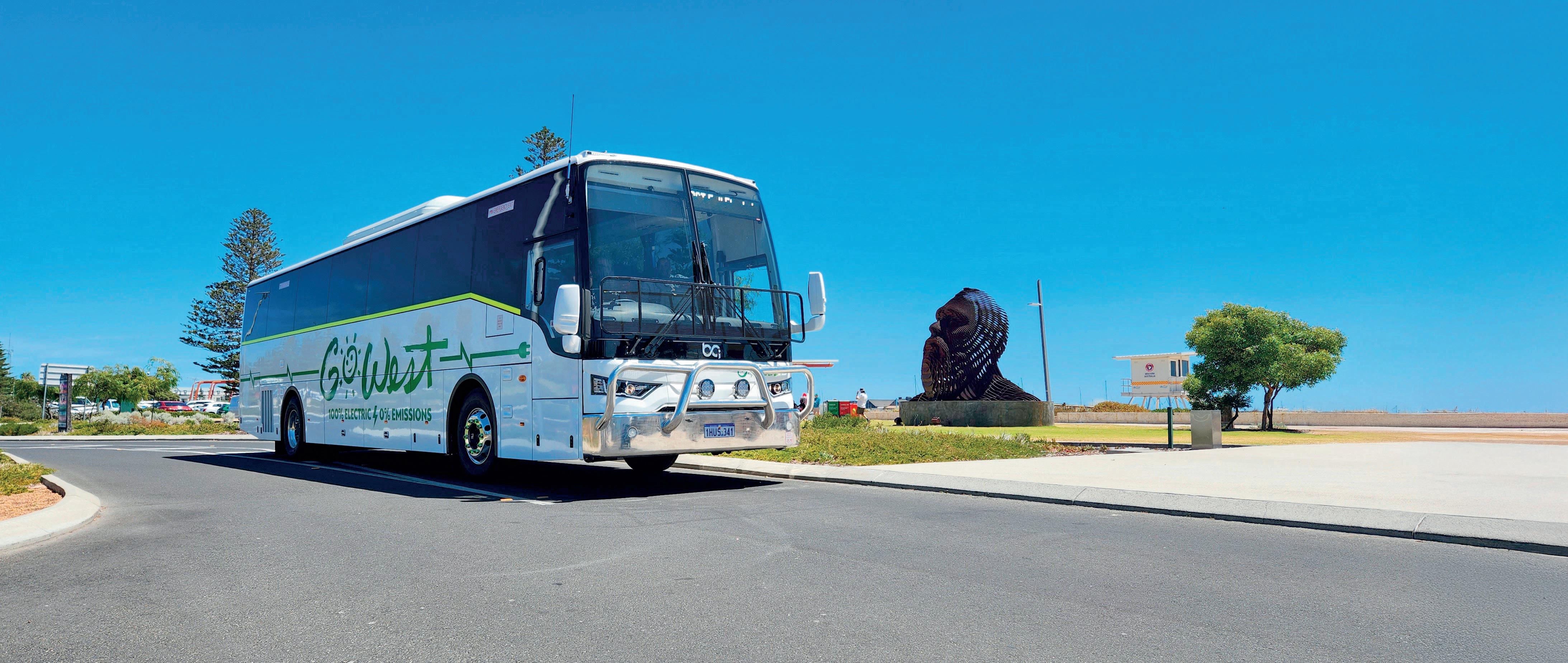
Support on the move
As a regional WA hospital undergoes a major transformation, BCI and Go West are stepping up to ensure frontline healthcare workers get to and from work safely
When the world shut down during the COVID-19 pandemic, there was one place that never slowed down. The hospital.
As fear and uncertainty gripped communities, it was nurses, doctors and hospital staff who stepped forward, often at great personal risk, to keep the community safe.
Working through exhaustion, isolation, interrupted mealtimes and loss, the pandemic pulled back the curtain on just how critical these professionals are. You see, hospitals don’t run on machines or medicine alone; they run on people.
Now, around five years since the first COVID-19 case was recorded, companies like Bus and Coach International (BCI) and Go West are still finding ways to support and uplift
the healthcare workers who carried us through.
Over in Western Australia, a $471 million redevelopment of Bunbury Regional Hospital is set to see the day-to-day life of workers altered forever.
“Once complete, Bunbury Regional Hospital will be the biggest in country WA, strengthening its role as a vital healthcare hub for the entire South West,” a WA government statement reads.
“The redevelopment will significantly expand capacity, delivering additional medical and intensive care beds, an expanded emergency department, increased operating theatre capacity, as well as new and expanded maternity, birthing and neonatal services.”
To make room for the new hospital footprint, staff parking was one of
Above:
The EV is a smart, zero-emissions solution that supports both the environment and the essential workers relying on it
the first casualties. Now, rather than parking on site, workers are being shuttled between the South West Health Campus and the nearby Hay Park precinct.
The distance, more than 20 minutes by foot and across a major highway, made safe, timely transport a necessity. That’s where Go West and its trusted partner BCI stepped in.
“Go West is a trusted, long-established bus operator with deep community ties, having served the region since 1994,” Go West general manager Brad Bunce told ABC
“Our reputation for reliable service and local commitment positioned us as a partner of choice to support the hospital’s transport needs.”
Go West is now operating a weekday shuttle service with services running every 10-30 minutes from 6am to 6pm.

When it came time to choose a bus model for the job, Go West had a clear set of requirements.
“Our key considerations included advanced safety features, innovation, vehicle reliability and strong aftersales support,” Bunce says.
“We wanted a solution that aligned with our quality and operational standards.”
The team assessed both diesel and electric models before choosing a zero-emissions solution that balanced environmental sustainability and reliability – BCI’s Fleetmaster EV.
“Our partnership with BCI has been built on flexibility, shared values and their commitment to innovation,” he says.
“They’ve consistently supported our growth by tailoring products to our specific operational needs.”
The Fleetmaster EV ticked every box. Originally developed to suit the rugged needs of WA’s mining sector, the model’s design proved just as capable in an urban hospital setting.
BCI Australia sales development manager Armando Baylon told ABC that electric vehicle technology has matured rapidly over the past few years, and with that, the applications have broadened.
“With EVs, it’s a very new technology that evolves so quickly, especially around battery efficiency,” Baylon says.
“Each batch we build improves on the last; lighter, more efficient
and better suited to real-world conditions.”
Once seen as the domain of city-based low-floor buses, zero-emission options are now being successfully rolled out across coaches, mid-size and even mini-bus formats.
“Initially the industry wasn’t quite ready, especially in terms of infrastructure and operator training on the new EV technology,” Baylon says.
“But now we’re seeing a much more diverse offering and more operators, including regional ones, are confident to make the switch.”
In Go West’s case, it was able to repurpose a Fleetmaster EV originally spec’d for mining use. The vehicle’s 53-seat layout and robust build proved a strong match for the hospital’s needs.
“It wasn’t a custom order, but the vehicle was available, reliable and ready to go,” Baylon says.
“We stripped out some of the more mine-specific elements and it’s been in daily use ever since.”
So far, Go West says the Fleetmaster EV is proving its value.
“It has operated reliably across multiple routes with minimal disruption. The ride is smooth, quiet and offers enhanced comfort, while its safety features provide peace of mind for both drivers and passengers,” Bunce says.
Go West drivers have embraced the change, with positive feedback
being received around the vehicle’s handling, reduced cabin noise and ease of use.
With a strong charging routine in place and minimal mileage required for the route, the EV is a smart, zero-emissions solution that supports both the environment and the essential workers relying on it.
As EV technology continues to mature, BCI believes the case for electric buses will only grow stronger, not just in mining or metro areas, but in regional operations like Bunbury.
“Three years ago, EVs were seen as the answer for metropolitan routes that didn’t require a large autonomy range and could be recharged at depot during night shift,” Baylon says.
“But battery efficiency is catching up fast. What used to be a 400km limit is pushing beyond 500km now.”
That means more operators will soon be able to use EVs even on intercity routes like Perth to Bunbury, with overnight charging the only real constraint.
Baylon says BCI’s focus remains on staying flexible, listening to customers and ensuring the product evolves alongside the technology.
“Whether it’s for mining, metro or community shuttle runs like this one, our Fleetmaster EV is proving it can meet a wide range of operational needs,” he says.
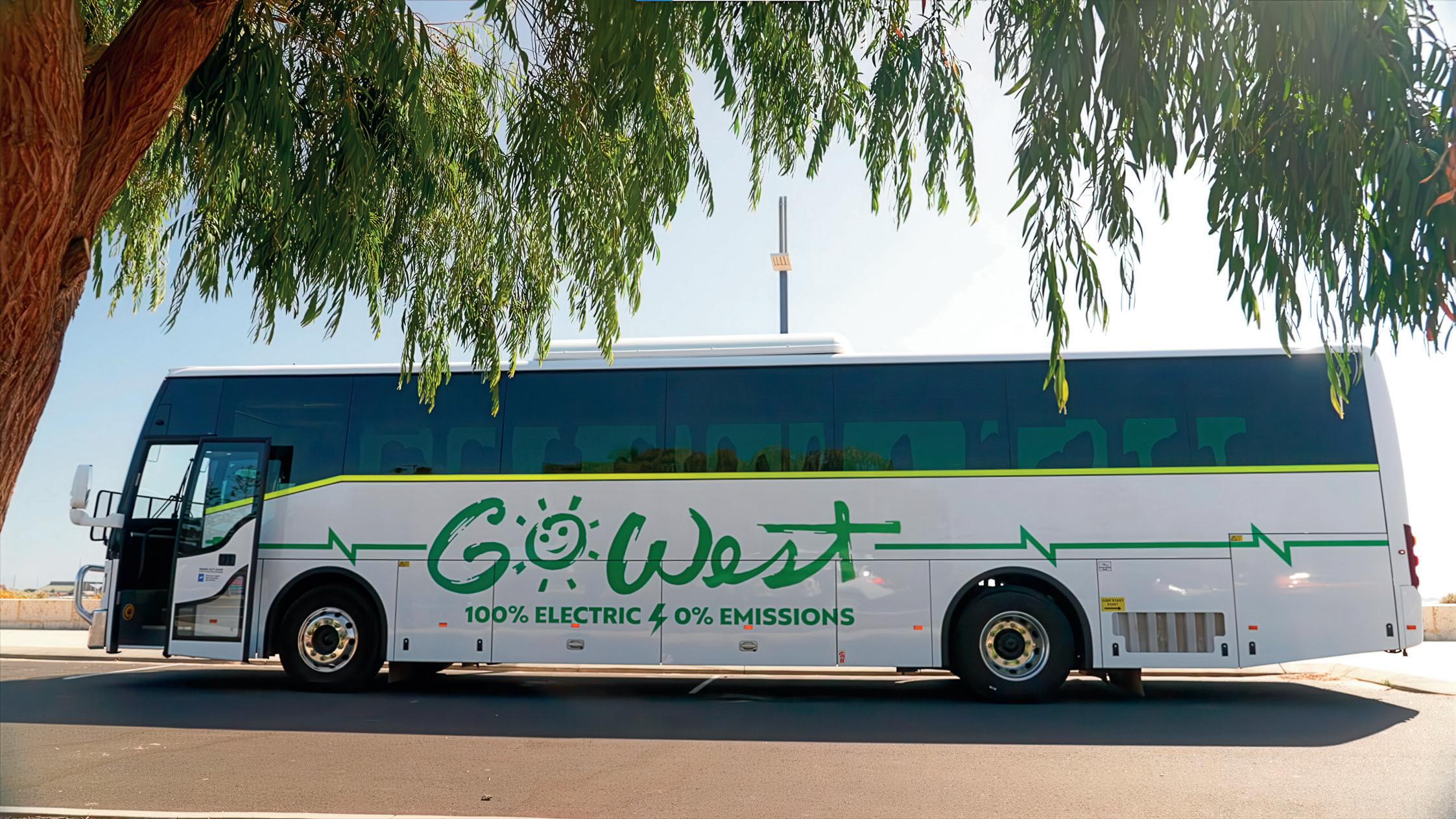
“Ultimately, we want to help operators deliver cleaner, smarter and more comfortable journeys, whatever the job.”
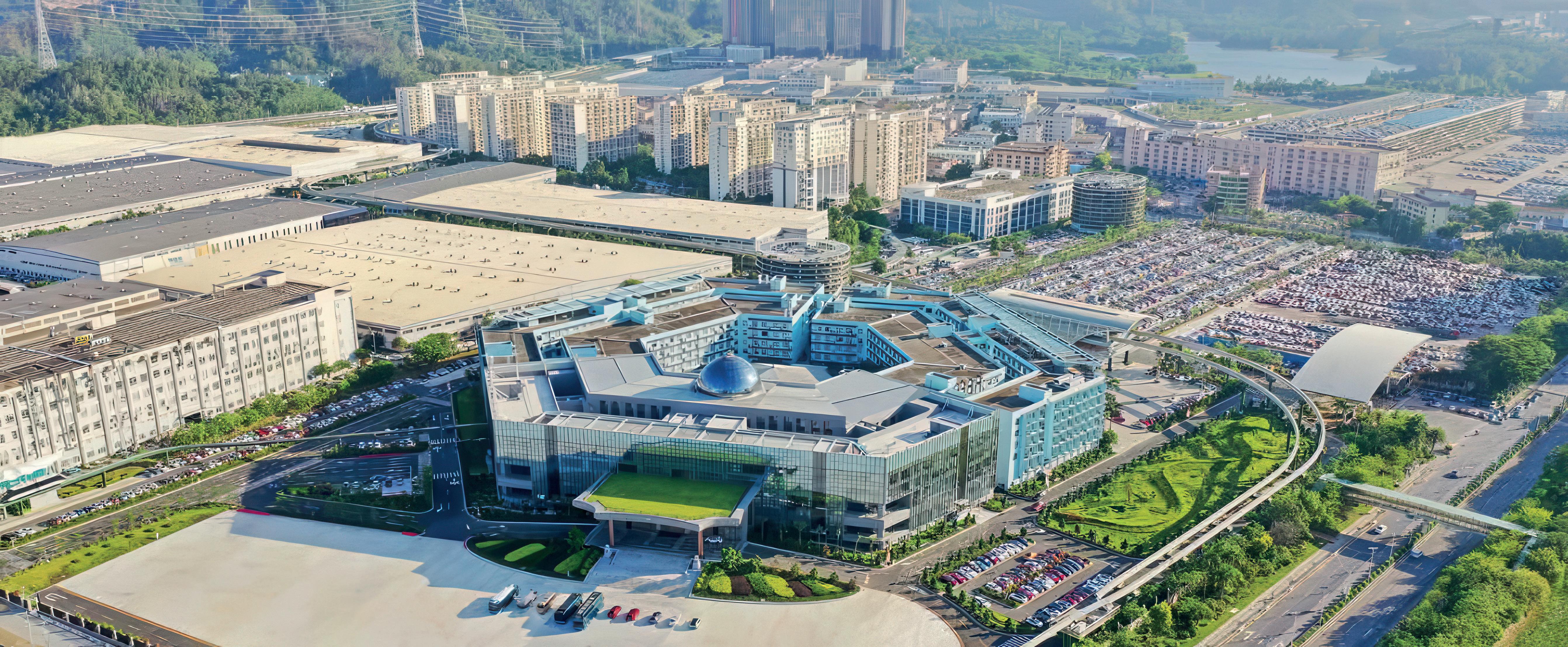
Beyond the bus
While
Australians may only know BYD for its buses and cars, the global manufacturing giant has been making its mark on the EV space for decades
If you work in the bus and coach industry, chances are the letters ‘BYD’ are already familiar.
You’ve probably seen the company’s electric buses gliding through city streets, or its cars cruising on the freeway. But buses and cars are just one piece of a much bigger puzzle.
BYD, short for ‘Build Your Dreams’, is a global vehicle manufacturer on a mission to electrify just about everything that moves.
From cars to forklifts and monorails to batteries, BYD is working on a grand scale to transform the way we live and travel.
“We’re definitely known for our
buses and cars here in Australia, but BYD is much more than that,” BYD Australia director of commercial vehicles Jon Tozer told ABC
“We’re pioneering new energy vehicles and technologies across multiple industries, with a goal of a true zero-emission ecosystem.”
Founded in 1994 in Shenzhen, China, BYD began as a rechargeable battery manufacturer when founder Wang Chuanfu saw the demand for this technology in mobile phones.
Since then, BYD has grown into a global new energy vehicle manufacturer, with more than 900,000 employees and over 50 industrial parks worldwide.
Above: BYD’s head office
BYD’s vehicles and technology reach six continents, operating in more than 70 countries and over 400 cities.
“BYD’s vision has always been about sustainability,” Tozer says.
“We want to solve air pollution and traffic congestion, and we’re also working on how we produce and store clean energy.
“This is why we operate across four key industries: auto, rail transit, new energy and electronics.”
The company has a bold ‘7+4 Strategy’ which aims to electrify seven types of on-road vehicles, including buses, coaches, taxis, logistics trucks, construction vehicles and sanitation vehicles plus four specialised off-road


segments such as airport shuttles, port vehicles, mining trucks and forklifts.
“Basically, if it’s got wheels, we want to electrify it,” Tozer laughs.
“We’re working on making electrification the standard, not the exception. And it’s happening faster than people think.”
This push includes everything from sleek electric SUVs like the BYD Sealion and Shark Ute to electric forklifts.
Much of BYD’s innovation is happening inside vast factories like its new mega plant in Zhengzhou, China.
Spanning 129 square kilometres –larger than San Fransisco – the factory resembles a self-contained city, with production hubs, housing, tennis courts and soccer fields.
Thousands are already living on-site, the amenities aiming to boost productivity and retention. While employee satisfaction ranks high on BYD’s priority list for the new site, its production capabilities are what truly makes it stand out in the industry.
With a goal of pushing out over one million electric vehicles per year, BYD has created the factory to feature state-of-the-art production lines, including automation and specialised production areas.
In the welding factory, 98 per cent of the work is performed by robots, capable of producing nearly 50 cars per hour with a precision error controlled within 0.01 millimetres.
“Our manufacturing capability is a key part of what sets BYD apart,” Tozer says.
“We’re vertically integrated, which means we control our own supply chain, from battery production all the way through to the finished vehicles.
“That’s what gives us the ability to innovate quickly and keep costs under control.”
In the Blade Battery Power Battery Park, which is part of the same factory complex, robots and automated systems produce batteries from raw materials all the way through to finished packs ready to install in vehicles.
The BYD Blade Battery is of particular interest to the EV industry, offered as one of the world’s safest batteries. Designed using lithiumiron-phosphate (LFP) as the cathode material, the Blade Battery is touted as having a higher working voltage rate, higher energy density, as well as improved safety performance and a longer life cycle.
Products like these are based on BYD’s development philosophy, “technology-based, innovationoriented”.
The company has 11 research institutes worldwide and more than 120,000 research and development engineers in the company – the most in the world. As of January 2025, BYD has applied for more than 59,000 patents, of which around 35,000 have already been granted globally.
“The big idea behind all of this work is to make mobility solutions emission free,” Tozer says.
“The green dream has long been a priority for BYD and is our vision for the future.”
After finding success overseas, it was 2016 when BYD began its foray into the Australian bus market trialling electric buses at Sydney Airport for Carbridge.
Then in 2022, the company launched the BYD Atto 3, followed
by the BYD Dolphin and BYD Seal, cementing the brand as a leader in EV technology.
The company later established its own commercial vehicles business in Australia in 2023, focusing on bringing its latest innovations to the local market.
As perceptions shift across the world in favour of electric and zero-emission vehicles, and governments begin to introduce supportive policies and legislation, companies like BYD are finding themselves at the forefront of a transportation revolution.
Customers are becoming more environmentally conscious, and there’s a growing expectation for cleaner, smarter transport options.
“We pride ourselves as being a top choice for customers wanting to switch to electric,” Tozer says.
“They trust that we know what we’re doing, as we’ve been doing it for a long time.”
To build on that trust, BYD is also expanding its investment in local support and service infrastructure, ensuring partners have a reliable ownership experience as the market matures in Australia.
While some may see BYD’s ambitions as futuristic, the company’s impact in multiple industries so far is undeniable.
“Our buses are already helping cities reduce pollution and noise. Our cars and utes are gaining popularity globally, including right here in Australia, and our battery technology is setting new industry benchmarks,” Tozer says.
“Electrification is our mission, and we are making our way there.”
made a mark on Australian roads
Images:
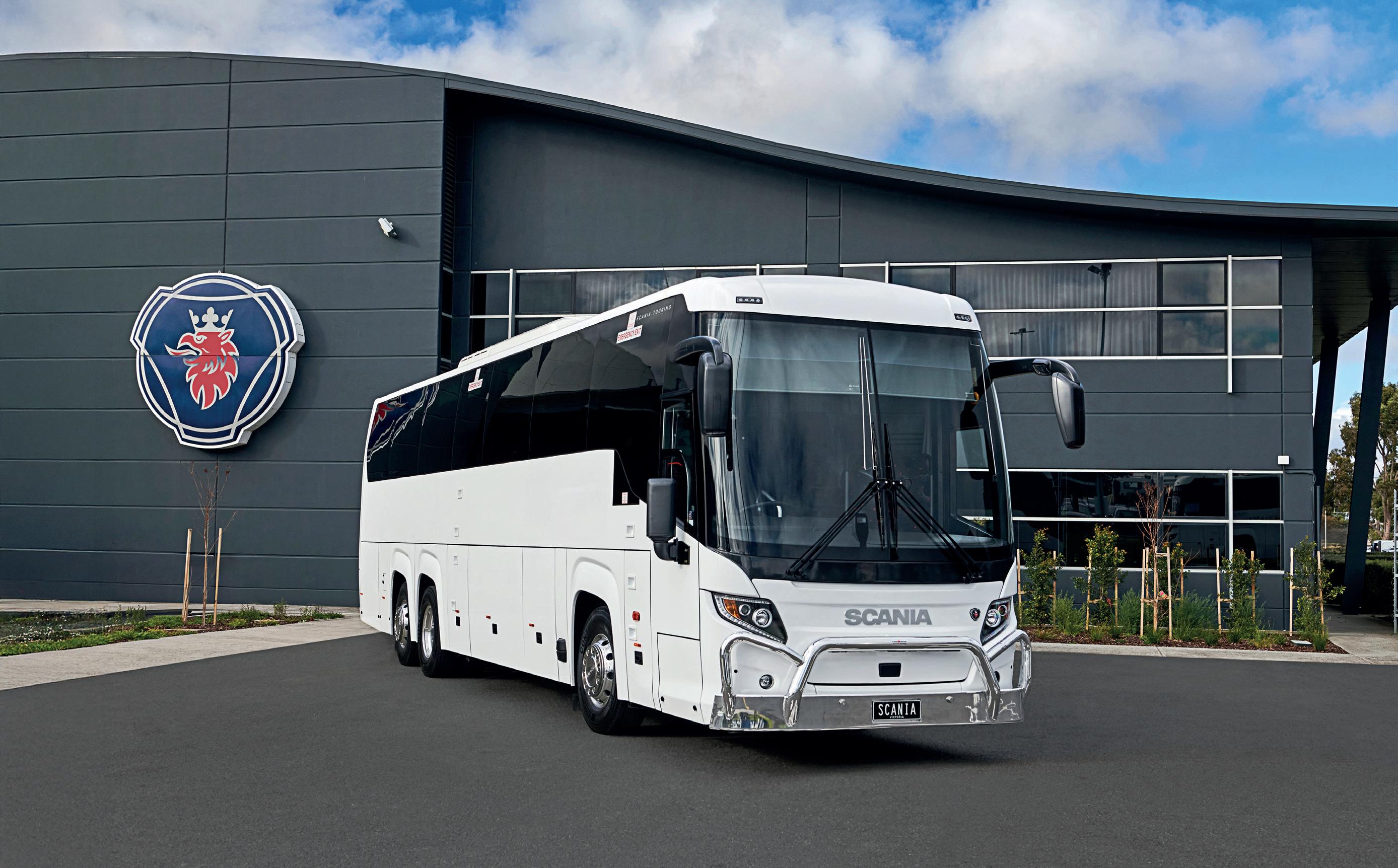
Driving forward
Scania Australia’s revised line-up is gearing up to become a favourite for operators on the roads
There are numerous factors a manufacturer must consider when designing a bus. Ensuring comfort for passengers. Parts quality and accessibility. Performance and durability. The list is almost endless. However, there is one factor that stands at the top of the list. Will the drivers like it?
Scania’s new three-axle Touring coach heads a revised lineup of fully imported coaches from the European OEM that is set to please even the fussiest of drivers.
“The Scania Touring has been a hit with Australian operators since launch in 2018 and was updated with the New Bus Generation chassis upgrades delivered in 2022,” Scania Australia managing director Manfred Streit told ABC
“Now for 2025 we have a further update for the two-axle Touring and the introduction of the
500hp three-axle.
“Five hundred horsepower is an iconic benchmark in any form of transport, but for a luxury coach operator, it marks the epitome of power and prestige.”
The new three-axle coach delivers 368kW (500hp) at 1,800rpm and 2,550Nm of torque from 900-1,340rpm. The 13-litre, six-cylinder engine delivers towering performance with miserly thirst and very low tailpipe emissions, plus, if run on renewable diesel, CO2 emissions can be cut by as much as 85 per cent. Transferring the torque to the driven axle is the Scania GRSO895R 12-speed overdrive gearbox with fully automated two-pedal Scania Opticruise transmission, while the third axle is a steerable tag.
The new coach joins the recently updated Touring two-axle and Scania-Higer A30, all of which now feature a split windscreen, a smart
digital dashboard and a raft of active and passive safety features dubbed Advanced Driver Assistance Systems.
“As a Scania from bumper-tobumper, the Touring coaches arrive in Australia built-up and needing only seats to be installed, to customer selection, of course,” Streit says.
“The new three-axle Touring comes with a wheelchair lift just above the tag/steer axle and features a 500-litre diesel tank and an 80-litre AdBlue tank that is ideal for extended range touring.”
The 13.3m three-axle Scania Touring’s saloon is designed to accommodate 52 reclining seats as well as the wheelchair occupants, while the more school/charter oriented 12.3m two-axle fits in up to 57 seated passengers. The wheelchair lift is optionally available on the two-axle coach.
Streit says the luxury starts right up front with the leather trim on
Above:
The new three-axle Touring coach

the driver’s ISRI 6860 seat, the electrically operated driver window and front screen blinds, as well as the smart digital dashboard containing navigation and a myriad of secondary controls.
“This is a significant advance for drivers. The smart dash is a central hub for an advanced, next generation driving experience, providing seamless integration with all other touchpoints in the Scania digital ecosystem,” he says.
“Data displayed will give drivers valuable insight, helping them to drive in an informed, efficient and safe manner.”
Scania’s steering wheel-mounted controls also means drivers rarely need to take their eyes off the road to select or activate a function, further enhancing road safety.
The Scania Touring features safety cameras displayed on a large high-definition screen, allowing for stress-free manoeuvring in tight spaces, while the driver station can be warmed or cooled independently of the saloon.
“Safety, of course, is paramount, so the Touring features lane departure warning, active steering and lane keep assist, adaptive cruise control, advanced emergency braking and disc brakes with EBS and ABS and traction control,” Streit says.
“It also comes with a Scania Retarder, manual/automatic control
electronic stability programme, automatically controlled exhaust brake, reversing camera, bus stop brake, hill hold, vulnerable road user and blind spot warning.
“It is probably the most comprehensive safety kit available in this market.”
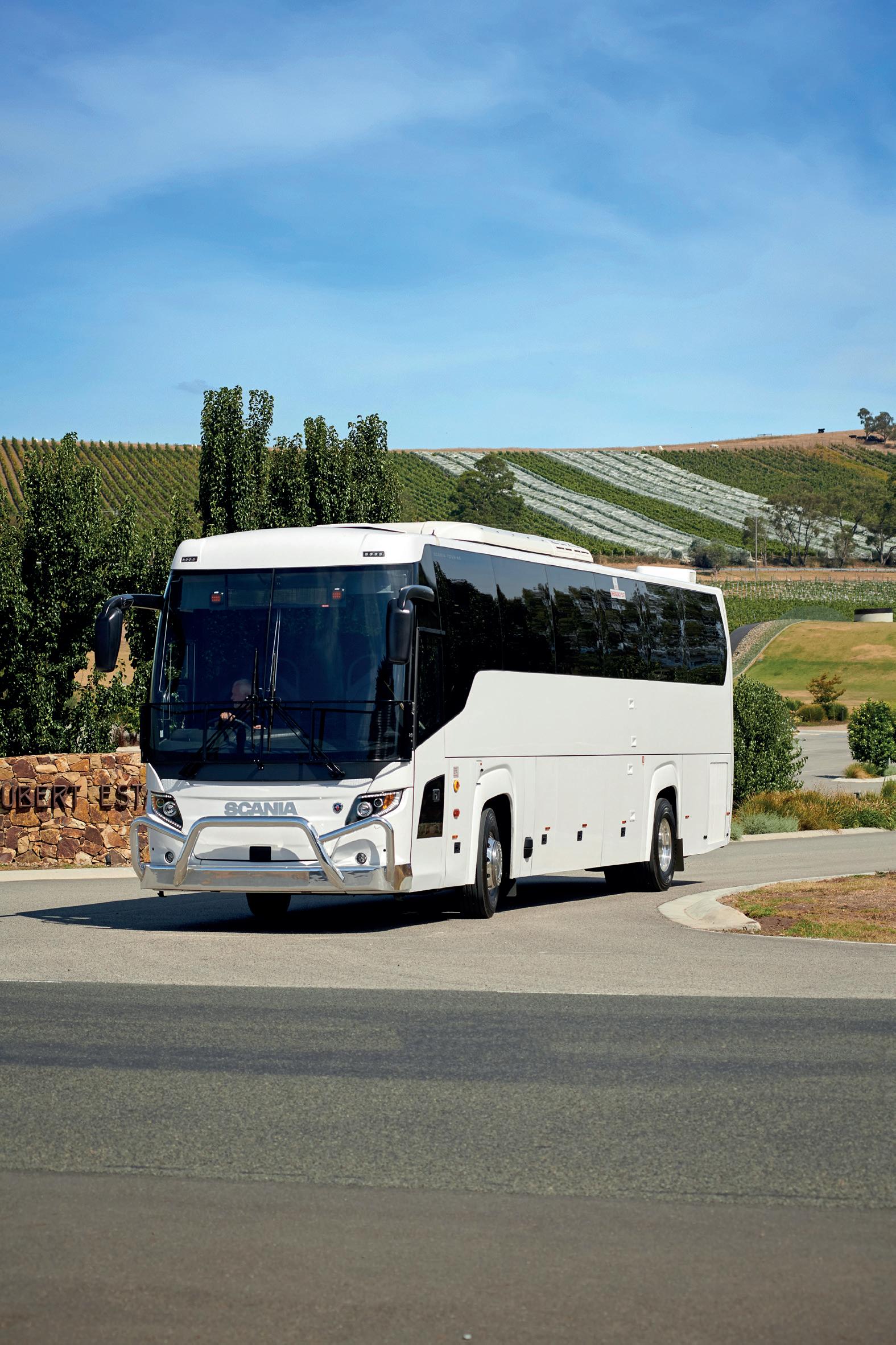
For ease of entry, the Scania three-axle Touring features total vehicle raising and lowering, whole front kneeling, independent front suspension and rides on Durabright alloy rims and Continental 295/80R 22.5 tyres. The two-axle Touring has a rigid front axle.
“We see the Touring, in either two- or three-axle variants, delivering affordable quality in a vehicle designed to meet multiple demands – in urban and regional settings, on daily school or charter trips or longer-distance touring, with expanded luggage capacity of up to 9.5m3,” Streit says.
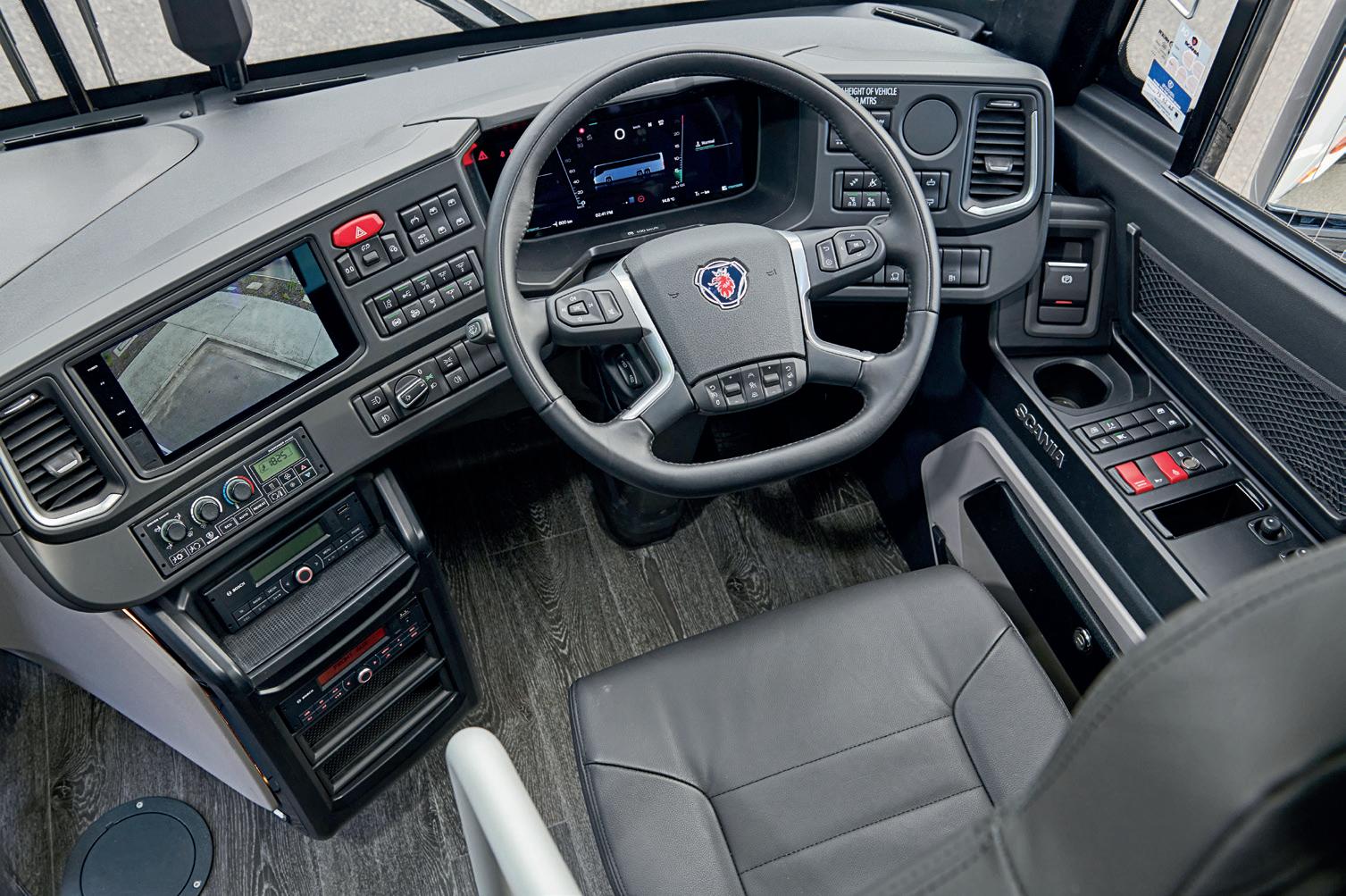
“The Touring range is imported fully built-up and ready-to-roll, refined by Scania for Australian conditions, and engineered to provide years of reliable, durable and comfortable service, and fully supported by the Scania service network in Australia.”
Regarding the Scania-Higer A30, the updates include a new look front fascia, incorporating forward-facing radar unit, while the all-new interior features a new smart digital dashboard, new colours for trim, the full ADAS suite of safety systems and the electro-pneumatic parking brake to help prevent roll-aways.
Under the skin, there is a new electric power supply architecture that comes with improved electronic control units and functions that enhance performance and facilitate faster diagnostics for speedy repair and maintenance.
The A30 is powered by the proven Scania nine-litre five-cylinder engine unit delivering 320hp (235kW) at 1,900rpm and 1,600Nm of torque between 1,050 and 1,400rpm, driving through a six-speed fully automatic gearbox (ZF EcoLife 2). The engine can also run on renewable fuels such as HVO or B100 biodiesel to reduce CO2 emissions.
“With the updated Scania-Higer A30 and the refreshed two-axle Touring and the exciting new three-axle 500hp Touring, we have a family of ready-to-go coaches that can satisfy operators,” Streit says.
“From those focused on day-to-day school runs right up to those offering long-distance luxury touring, these coaches provide a cost-effective, highly reliable package.”
The luxury starts at the driver’s area with the new three-axle

Electrifying without compromise
Volvo Bus Australia’s electric range is building on the trusted models that have been serving Australia’s roads for years
For operators making the move to electric, nothing is more important than confidence.
Confidence that the vehicles will perform. Confidence that safety won’t be sacrificed and that support will be there when it’s needed most. For Volvo Bus Australia, that confidence is already built in.
Backed by more than nine decades of global experience and over 50 years spent serving the Australian market, Volvo’s electric offerings are
not something new, but an extension of the trusted models that have been hitting Australia’s roads for years.
“Moving to electric can be a daunting time for operators, especially when it’s all such new technology and something they have never dealt with before,” Volvo Bus Australia general manager Mitchell Peden told ABC
“We understand that electrification can’t come at the expense of the things that matter, like safety, uptime, quality and trusted support.
“That’s why our electric models have been designed from the ground up to deliver a cleaner future without compromising on the standards we have created.”
Volvo has set a benchmark for bus safety over the years by integrating cutting-edge technologies like dynamic steering, Forward Collision Warning, Driver Alert Support and advanced driver assistance systems that help prevent accidents.
“Safety has always been our top priority, and it doesn’t stop because
Above: Volvo Bus is looking forward to introducing its next electric bus model to the Australian market next year
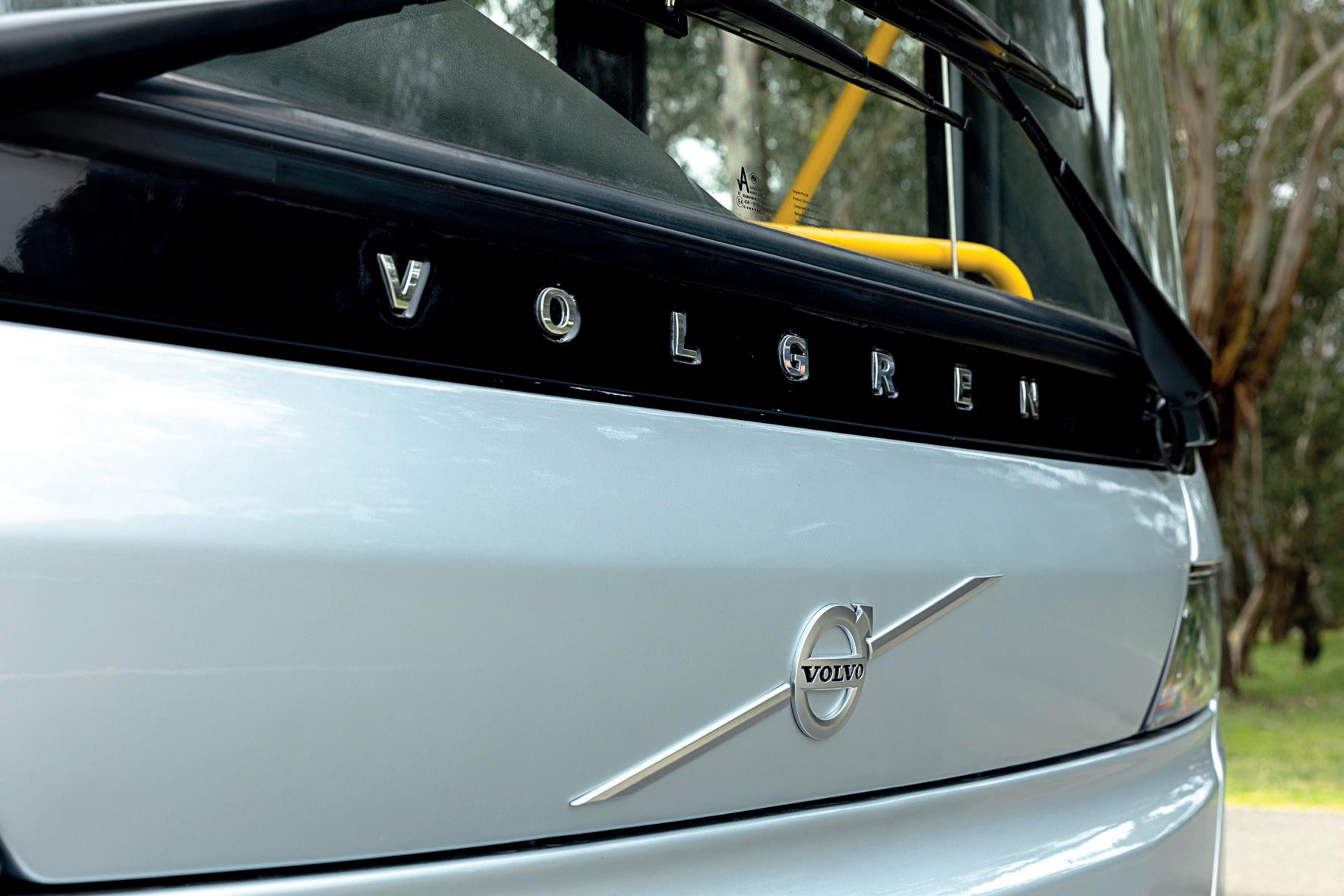
the technology has changed,” Peden says.
“Electric buses and conventional diesel buses have mostly the same safety-related features, but important differences include the driveline and the energy storage involved.
“That’s why we have created a comprehensive safety system to address the unique challenges of electric drivetrains and high-voltage batteries.”
The safety system’s multi-layered approach includes robust steel casings and secure mounting to protect batteries from impact, vibration and water damage.
The Battery Management System keeps a constant eye on things, monitoring temperature and voltage, managing cooling and charging and shutting down power if something doesn’t look right. There are also emergency disconnects, warning systems and thermal safeguards built in to prevent overheating or thermal runaway.
Volvo electric buses also comply with the R100 standard, which covers numerous safety parameters for electric powertrains and is often a key requirement in tenders.
“Aside from our safety systems, Volvo electric buses undergo rigorous testing in Australia, both in controlled environments and on public transport routes to assess their performance,” Peden says.
“This includes testing in extreme heat, evaluating range, charging times and overall vehicle performance.”
All Volvo buses are engineered with a focus on long-term durability,
using high-strength materials and manufacturing to ensure they withstand demanding conditions.
The BZL Electric is built on a corrosion-resistant chassis that’s made to last under heavy loads, long shifts and tough terrain. Reinforced suspension, axles and battery mounts are designed for everything from regional routes to busy city corridors.
“These buses are built to last,” Peden says.
There is also a high level of parts continuity between Volvo diesel and electric buses – a significant advantage for operators transitioning to electric fleets.
Many core components such as axles, suspension systems, braking components, body panels and interior fittings are shared across both platforms. This continuity simplifies maintenance and ensures easier access to parts from existing inventories.
“By using proven parts from our diesel range, we help operators manage costs, reduce disruptions and
get up to speed with electric faster,” Peden says.
“There’s no need to overhaul your entire support set-up.”
Volvo also supports the transition with tailored planning services that help operators every step of the way, from energy forecasting and route planning to depot layout and charging infrastructure.
The team works closely with customers to ensure each electric bus is supported by the right charging strategy, whether that’s overnight depot charging, opportunity charging or a hybrid solution.
“Our range of electric buses are ready for quick high-power charging on route, as well as manually operated depot charging via CCS cable,” Peden says.
The company’s expertise ensures smooth integration into existing depots while minimising downtime and complexity.
Volvo’s approach to electrification is built on the principle of ‘no compromise’ – not on performance, not on safety and not on reliability. By combining proven engineering, local testing, cutting-edge technology and tried-and-tested components, Volvo delivers electric buses that meet the highest expectations.
The shift to electric is a natural progression backed by planning, support and the assurance that every solution has been designed to perform from day one and long into the future.
Volvo Bus are looking forward to introducing their next electric bus model to the Australian market in the first quarter of 2026.
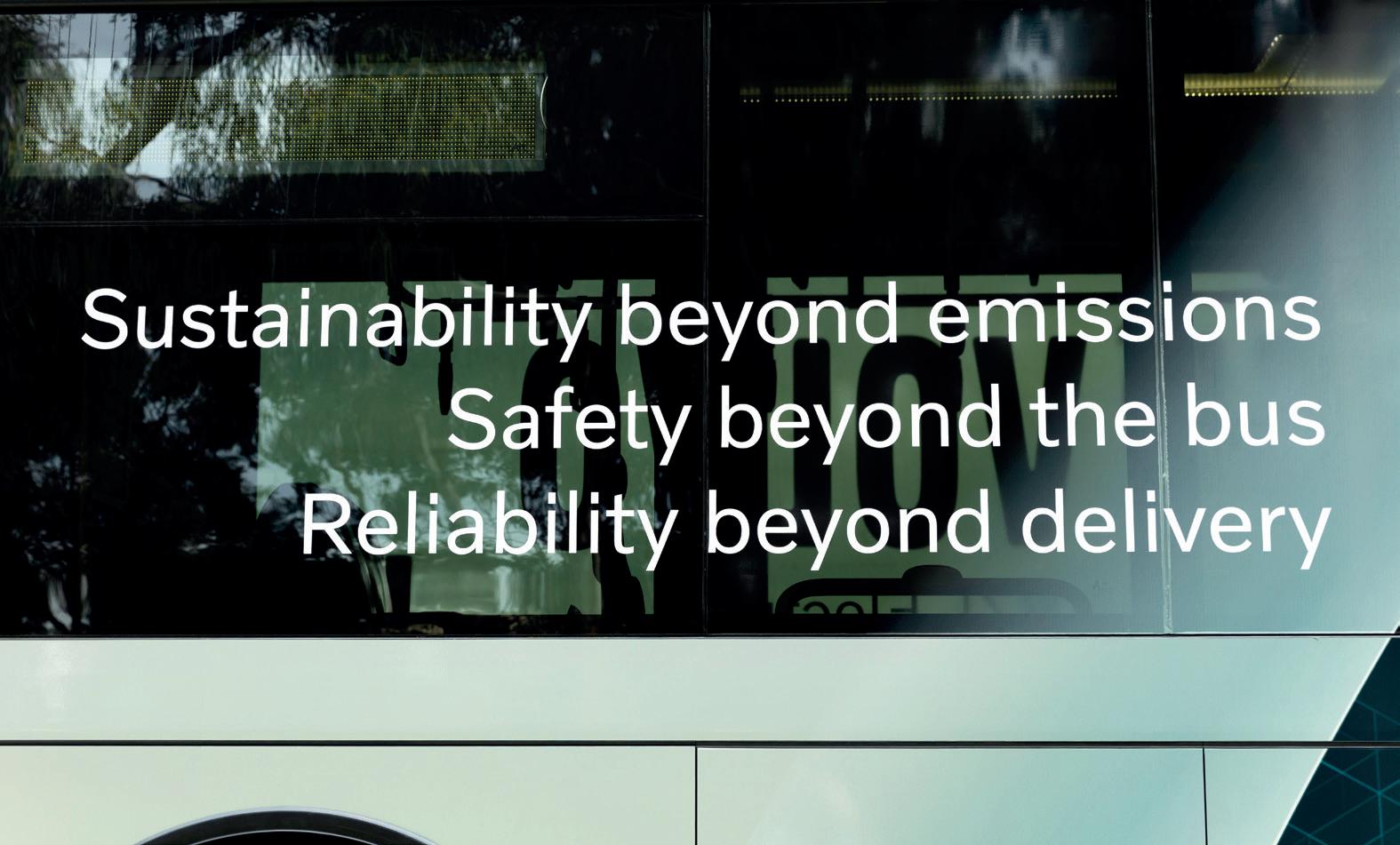
Below:
Volvo has set a
Above:
All of Volvo’s electric models undergo rigorous testing
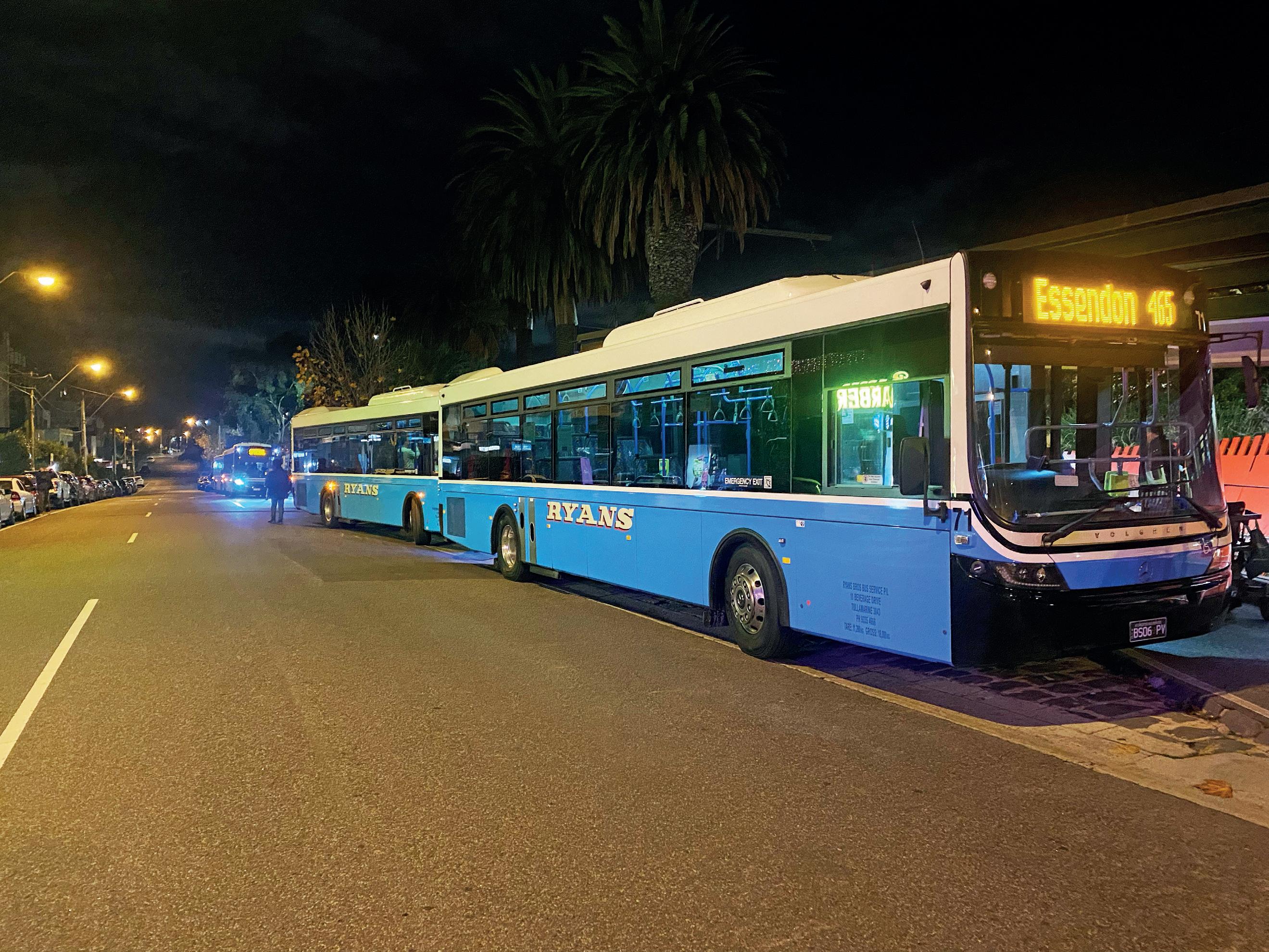
Final runs for local Victorian operators
Local
Victorian operators have had to say goodbye to longstanding runs as the MZF contracts began operating at the start of July
Essendon Station was alive with music on the night of Monday, June 30, as a Footscray brass band joined community members and families to mark the final runs of Ryan Bros Bus Service, with the operator wanting to go out “with a bang”.
More than 240 people boarded the final runs of routes 465, 467 and 468, greeted by a triumphant musical display as the buses pulled up.
Local coffee shop Benny & Me stayed open well past 10pm to offer attendees free hot food and drink, while Ryans’ employees and family members swapped stories of the operator’s history and impact.
While the musical choices attempted to liven the attendees’ spirits, there was a darker cloud looming over the ordeal, with Ryan Bros Bus Service general manager
Daniel Zampatti describing it as a “terrible day”.
The cessation of the Ryan Bros Bus Service routes came as the Metropolitan Zero Emission Bus Franchises (MZF) contracts started on July 1. Effectively redrawing the map of Melbourne’s bus industry, the new contracts have forced several long-standing local operators to cease operations and have accelerated a wave of industry consolidation.
Ryans’ routes have been absorbed by CDC Victoria, while operator Panorama Coaches has had its routes 343, 578, 579, 580 and 582 taken over by Dysons. Both operators will maintain private school runs and charters but are in the process of selling their route service fleets.
Sensing the trend towards industry consolidation, some smaller
Above: Ryans’ final run of routes 465, 467 and 468
operators moved early, selling routes and businesses to larger companies even before the new contracts were formally awarded. Moonee Valley Coaches’ routes 503 and 506 have transitioned to Dysons, while Moreland Bus Lines’ routes 510 and 512 have gone to Kinetic.
It’s also understood CDC Victoria has entered a joint venture arrangement with Kastoria Bus Lines/Broadmeadows Bus Service in Melbourne’s north, and some inner north and eastern routes previously operated by Dysons will transfer to Kinetic.
While the announcement of the MZF contracts had long been teased, Zampatti told ABC that Ryans’ was not made aware how its routes would be affected until a media release was made public.
The new routes will be operated by
CDC branded buses, with the Ryans’ public route buses now in the process of being sold.
“If you have a problem with your customers, we can go to them and fix it. They have a problem with us; we can fix it. But you can’t fix it with the government,” Zampatti says.
“Without people, this doesn’t happen. People have forgotten what it means to be part of something, and without that, Melbourne is just gone. It’s just all gone.”
Under the MZF contracts, the bulk of Melbourne’s bus services will now be operated by Kinetic, Dysons and CDC Victoria. Each is tasked with progressively shifting their fleets to zero-emission vehicles, helping Victoria meet its target of net zero emissions by 2045.
It’s not only the operators who are changing, but also how routes are organised.
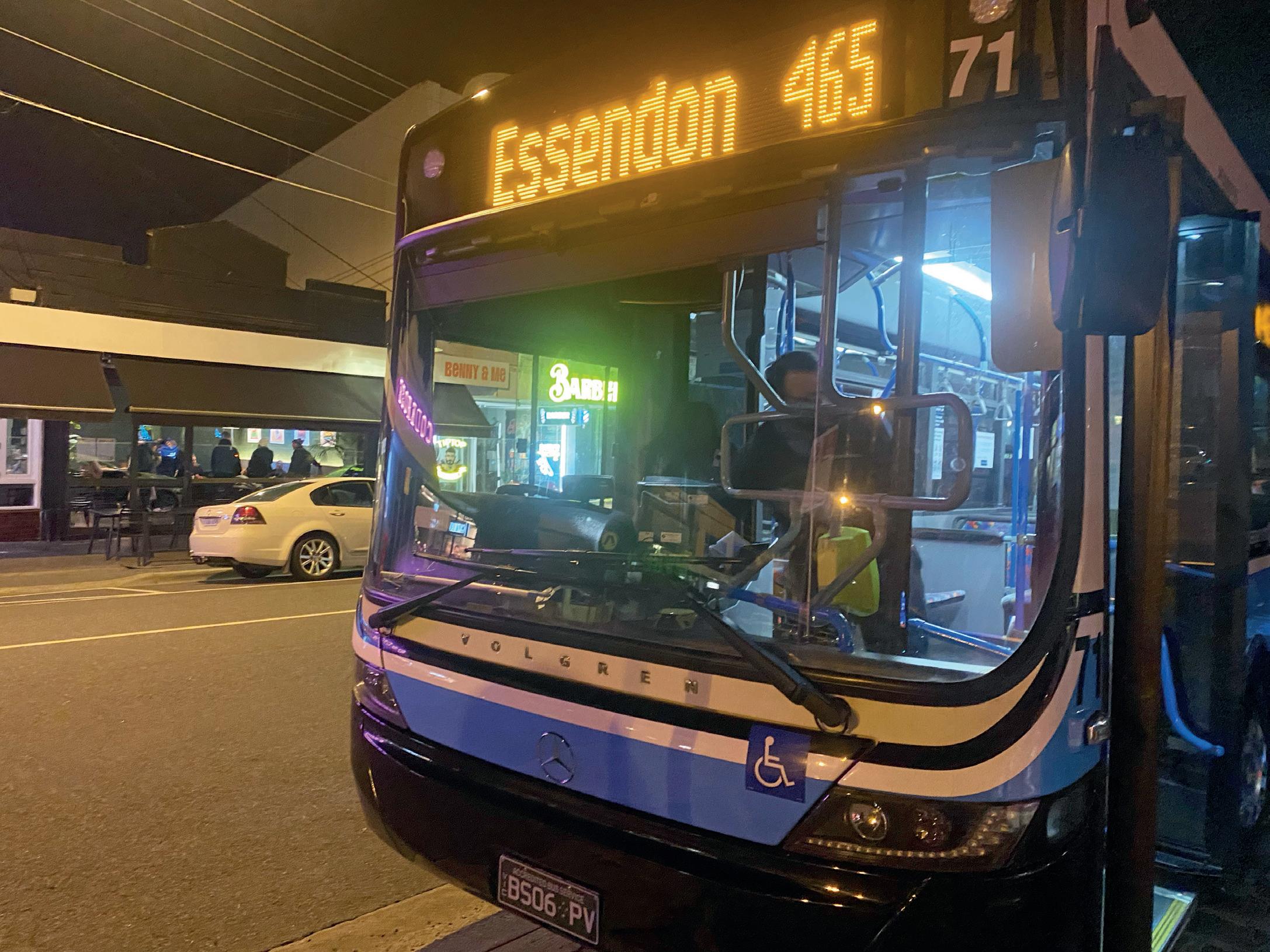
The trend of this change is resulting in the cluster of contract packages by geographic regions, rather than maintaining service areas based on historic family-run operations, as has largely been the tradition until now.
Following the announcement of the MZF tenders, a Department of Transport and Planning (DTP) spokesperson told ABC the Request for Proposal (RFP) was open to all registered bus operators, including Ryans.
They say Ryans elected back
MZF recontracting process and, by not participating, would have automatically been made directly aware at that time they would have no contract renewal from July 1, 2025 when their existing contracts expired. To manage the transition, CDC Victoria was awarded the contract for routes 465, 467 and 468, with the Department saying the operator has been in regular communication with Ryans to agree on terms for staff transition, asset sale and operations.
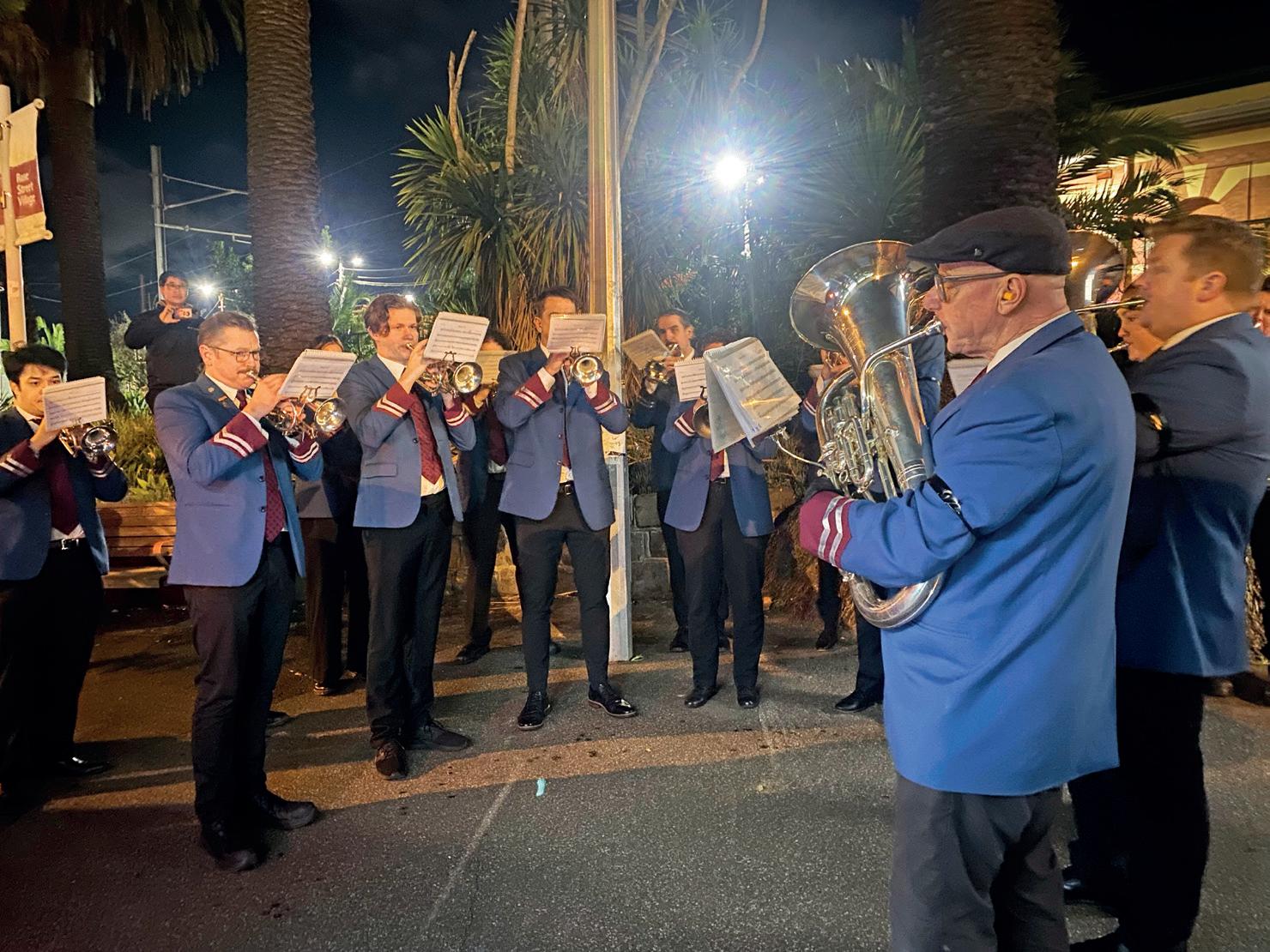
in supporting the delivery of public transport services on our bus network over the years,” the spokesperson says.
According to the DTP spokesperson, the review of all proposals followed the same requirements overseen by an independent probity advisor and probity plan, and all were assessed on their individual merits without any influence.
They say they will continue to engage with Ryans to successfully close-out the previous bus contract.
A Victorian government spokesperson told ABC it has engaged with impacted operators and unions to ensure all affected staff that wish to continue employment were transitioned to new operators in time for the new contracts commencing.
“The zero emission bus contracts are part of Victoria’s push towards a greener and more sustainable bus fleet and is our largest investment in electric buses to date,” the spokesperson says.
“The contracts covering 132 public routes and more than 237 school services across Melbourne will deliver Victorians quieter, smoother and cleaner rides.”
Below: A brass band
Above: The three routes will now be operated by CDC Victoria
NZ’s nationwide public transport card delayed again
This setback is the third missed launch target the project has faced in the past nine months, with no new deadline announced
The nationwide rollout of New Zealand’s unified public transport ticketing system and card, Motu Move, has hit yet another delay, with the first phase of implementation pushed back and no revised start date provided.
The project, led by the New Zealand Transport Agency (NZTA), is set to replace the patchwork of regional transport cards with a single, nationwide system.
Commuters will be able to tag on and off using a dedicated Motu Move card, contactless bank cards, or digital devices like smartphones and smartwatches.
Originally scheduled to launch in Timaru and Temuka by mid-2025, the initial rollout has now been
postponed, frustrating local officials and public transport advocates.
Christchurch City Councillor Dionne Swiggs expressed his disappointment
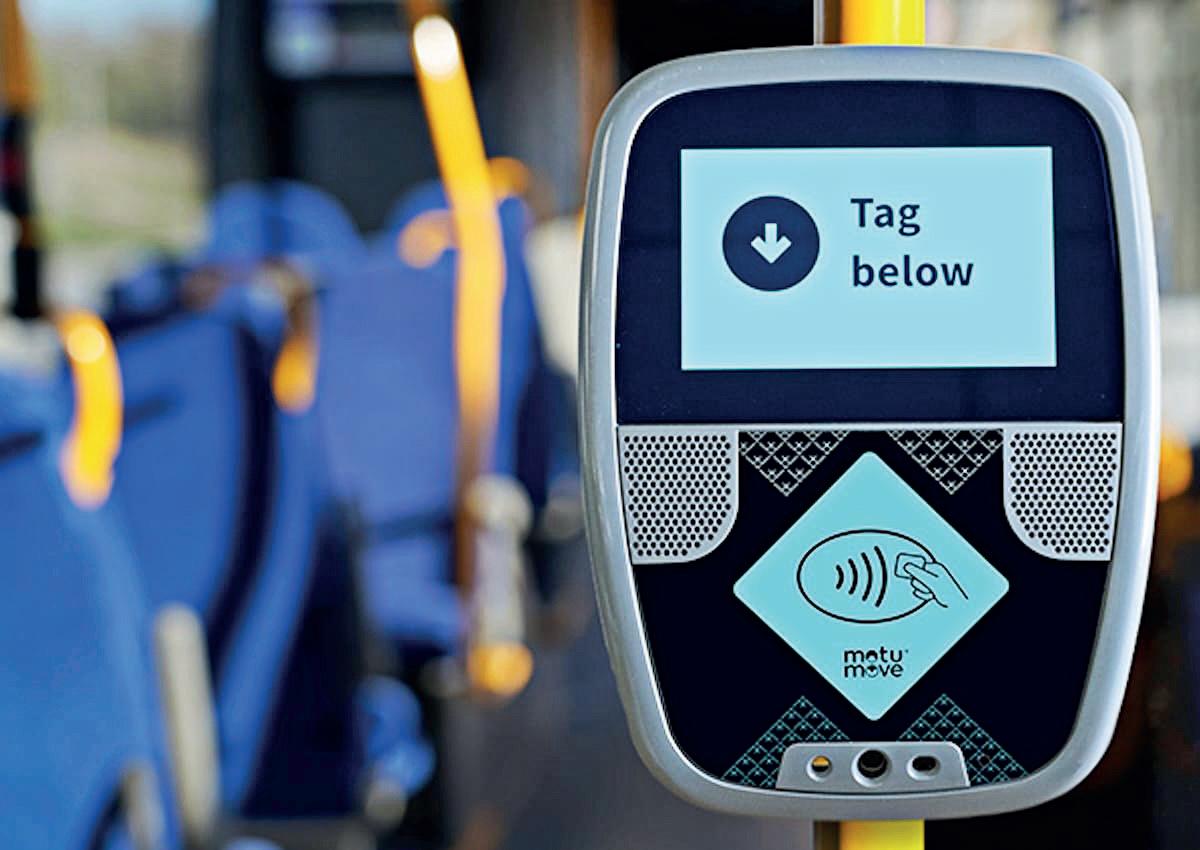
in the latest setback, calling the delay “definitely frustrating” for communities that have waited years for a modern, seamless ticketing system.
Swiggs says that the core functionality of the system appears to be sound, but challenges remain in implementing more complex features.
“They need to deliver a product that is robust enough for us to roll out,” he says.
“The base functionality is pretty robust. It is working.”
He also confirmed a trial is currently underway for Christchurch’s Airport bus, and hopes remain high that additional features will be launched in the region soon.
Kempower and Charge Hub to power new Perth electric bus depot
Kempower and Charge Hub will work with partners to create the new WA facility with charging capacity for 132 electric buses
A brand-new electric bus depot is under construction in Bayswater, Perth, with the new facility set to be one of the largest electric bus depots in the state.
The new Bayswater electric bus depot will see Kempower work with partners Charge Hub, Addelec and Swan Group to provide charging capacity for 132 electric buses.
The first stage of the project will see charging infrastructure be delivered to 132 buses, with Kempower’s high-performance DC charging technology to be installed. The goal is for the site to open in mid-2026.
Kempower’s flexible and
modular system will enable dynamic power distribution across the site, allowing overnight charging that supports smooth day-to-day public transport operations.
The project is being delivered by Kempower’s long-term Australian partner, Charge Hub, in close collaboration with local installation partner Addelec and site delivery specialists at Swan Group.
“The Bayswater project marks another important milestone in our mission to support Australia’s decarbonisation journey,” Kempower director of new markets Carlo Cecchi says.
Charge Hub is managing the
importing, technical compliance and commissioning of the charging infrastructure rollout, to support Addelec to ensure a reliable, future-ready solution that aligns with the Public Transport Authority’s (PTA) operational goals.
Addelec, drawing on its national experience in EV infrastructure installation expertise, is leading the installation process, while Swan Group is handling on-site delivery, construction and project execution.
Together, the partners are building a safe, efficient and scalable depot that meets the needs of both the PTA and the contracted bus service provider.
Below: The problem lies in implementing more complex features. Image: NZTA
New beginnings
The new financial year sees BusVic welcome a new executive director, with Peter Kavanagh laying out his goals for the state association
Across Australia, the bus and coach industry is experiencing a changing of the guard. For many major cities, new contracts are seeing less and less operators take on more routes, while emerging vehicle technologies are replacing existing diesel models. This evolving nature hasn’t bypassed Victoria, with the state’s leading bus association having welcomed a new leader in April.
Many in the local industry know Peter Kavanagh. Now, as the latest executive director of the Bus Association of Victoria (BusVic), he will play a defining role in the many issues and topics impacting one of the nation’s largest states.
“I want to continue the great tradition of BusVic being one of, if not the, premier bus associations in Australia,” Kavanagh told ABC
“I aim to work with the state and federal governments closely to achieve the key objectives the industry needs while also protecting the interests of our members as best as we can.
“It may be cliché, but I want to instil unity within BusVic given the trying times and changing landscapes that we’re experiencing.”
He replaces Chris Lowe, who served a crucial role in building the state association and advocating for its operator network. Prior to joining Lowe and the BusVic team, Kavanagh has experience as a lawyer and has worked at Australian Government Solicitor, DLA Piper (DLA Phillips Fox as it was then) and has been an industry director on the Public Transport Ombudsman board twice.
Since 2010, he’s been part of BusVic, starting as the legal manager before escalating to general counsel and now nestling in as the executive director.
“I became a bit of an expert on all
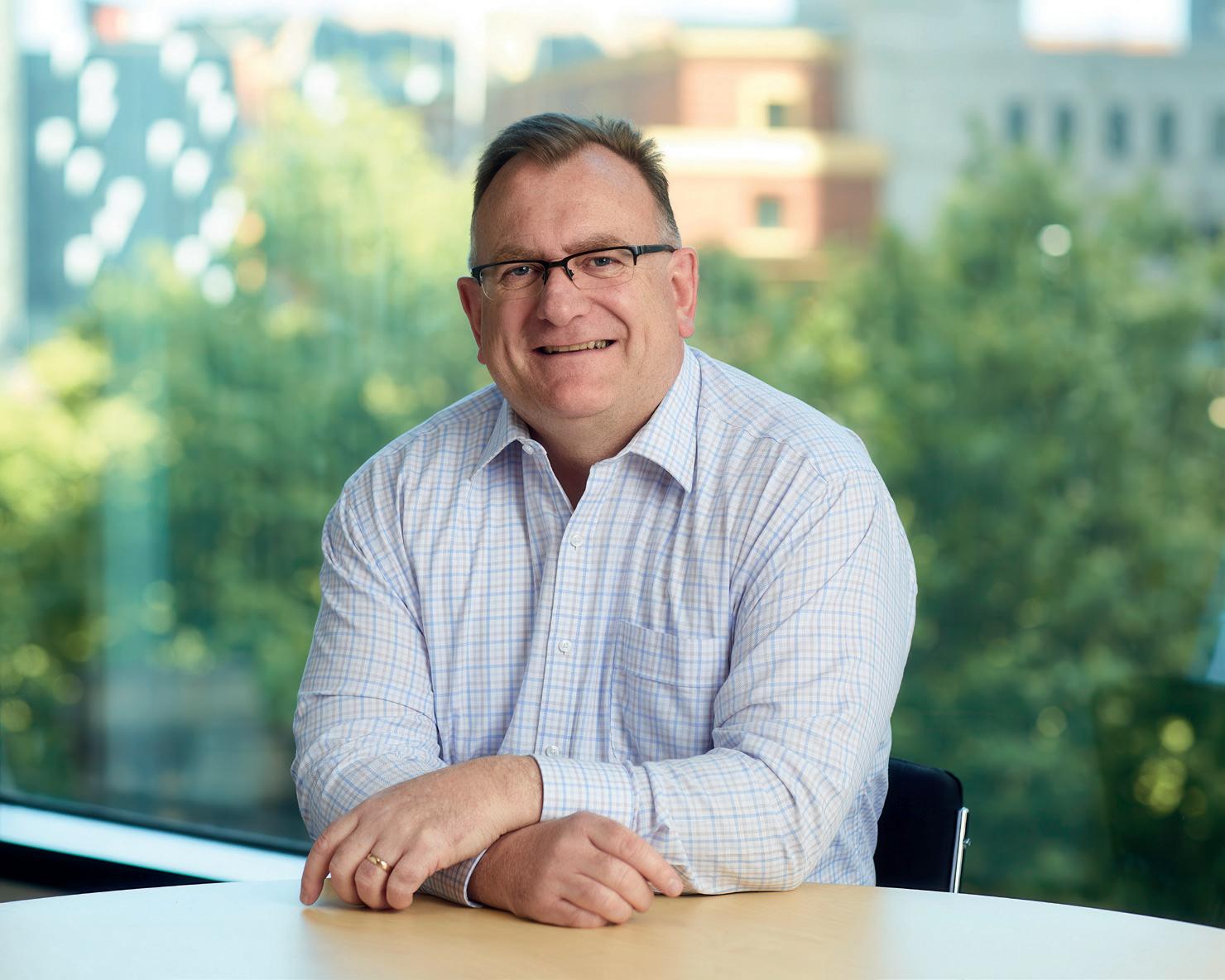
things bus, contracting with the state on behalf of members, vehicle and driver requirements – when you work in-house, you get to experience the gamut of work done,” he says.
“I remain the prime contact with all the government agencies, working to achieve policy goals while protecting member interests. I’m also a director of BusVic’s related entities, which sits at five operational companies.
“I’ve had good grounding and I’m excited to be in this role.”
After taking over from Lowe in April this year, Kavanagh says his focus is on “continuing to work with government” to achieve the best outcomes for bus users in Victoria.
“Members also have legitimate expectations and interests reflected in contracts, which should be protected,” he says.
“We’re all interested in what’s best for Victoria. As the government of the day, if they think the transition to zero-emissions technology is best, we’re keen to work with them to achieve that.”
Stepping into the role at this time begs the answer to one critical question – will BusVic, now under new leadership, look to rejoin the national bus association network?
“In terms of national advocacy, that’s certainly something we want to fully explore in the short term,” he says.
Outside of this, Kavanagh is focused on addressing bus service provision in Melbourne’s outer suburbs. He says his thoughts align with the state government’s – that the outer suburbs need more improved bus services.
“The message I have for the industry is to stay the course, let’s build on what we’ve got,” he says.
“Let’s work together in a unified way to get the best outcomes for Victoria while protecting the members’ legitimate interests as well.
“We want the focus on patrons to continue into the future, preferably with a place for small family businesses at the table continually. We’d like to see that, we don’t want to see them pushed out just for the sake of it.”
Above: New BusVic executive director Peter Kavanagh. Image: Peter Kavanagh
“Australian
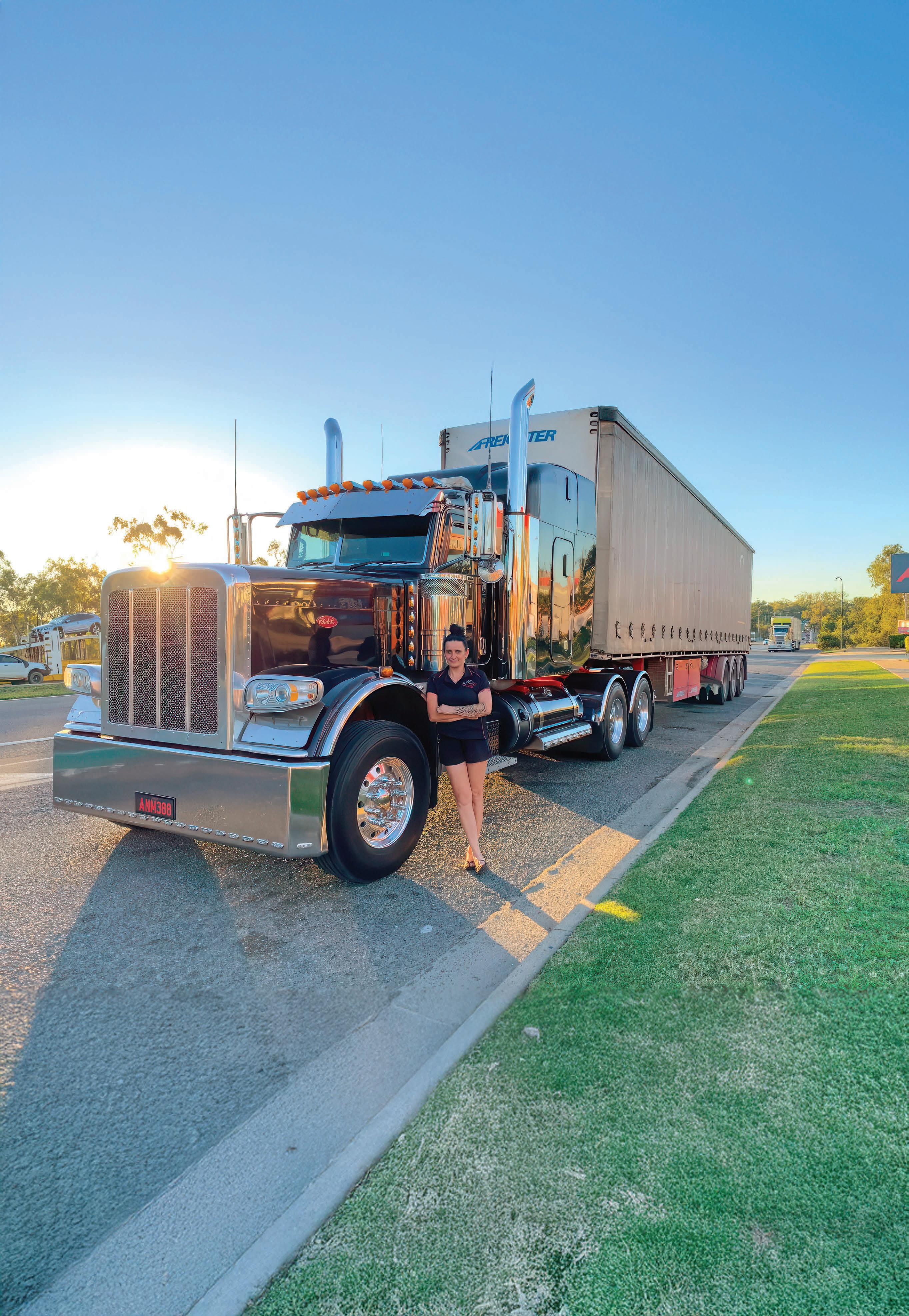





The best of the best
There are only a couple of months left to get nominations in for the 2025 Endeavour Awards, celebrating the best of Australian manufacturing
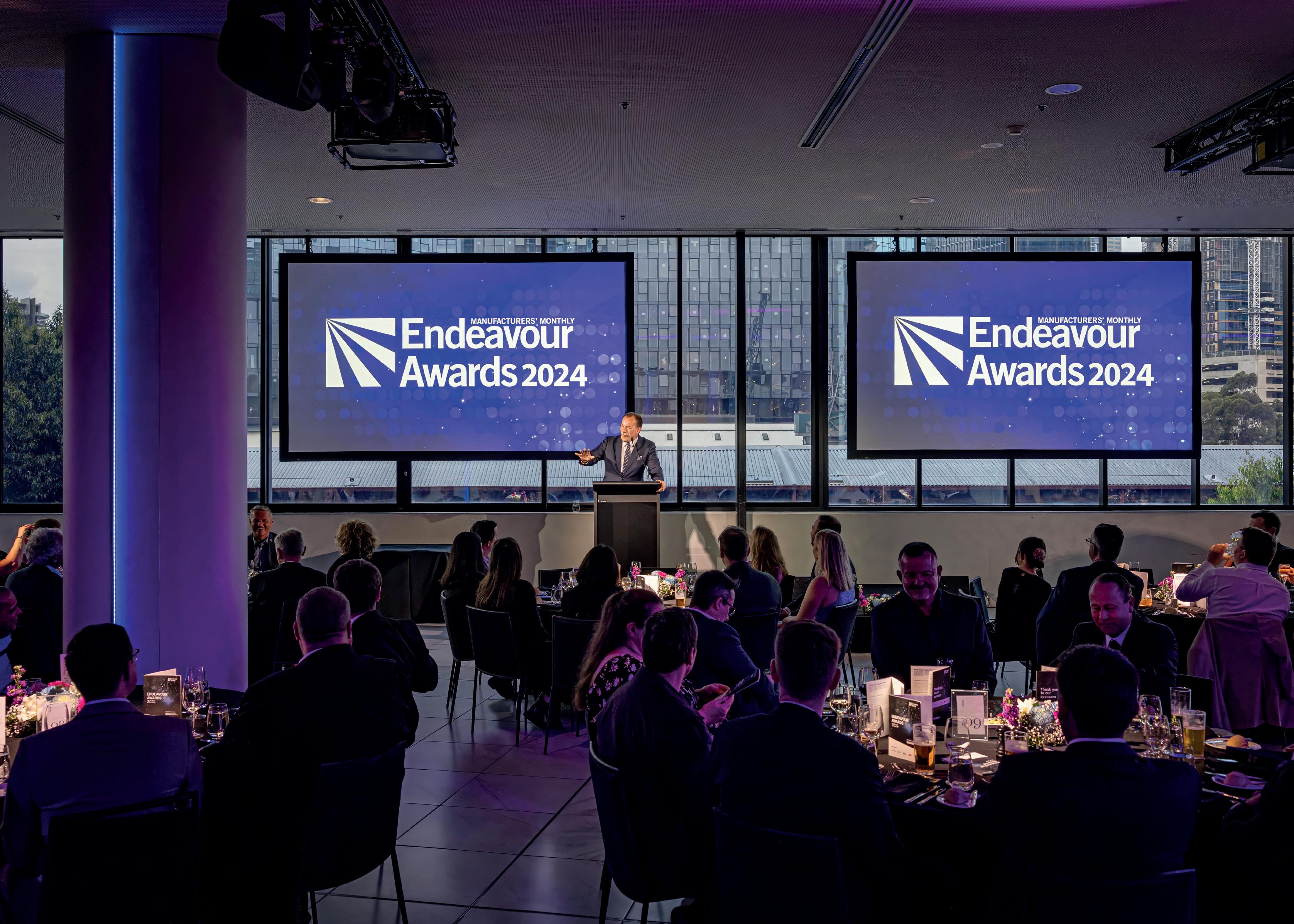
QBIC Regional Forum – Gold Coast
SEPTEMBER 15-17
BCA Conference
Christmas Function
OCTOBER 29-31
BIC National Conference – Perth
QBIC
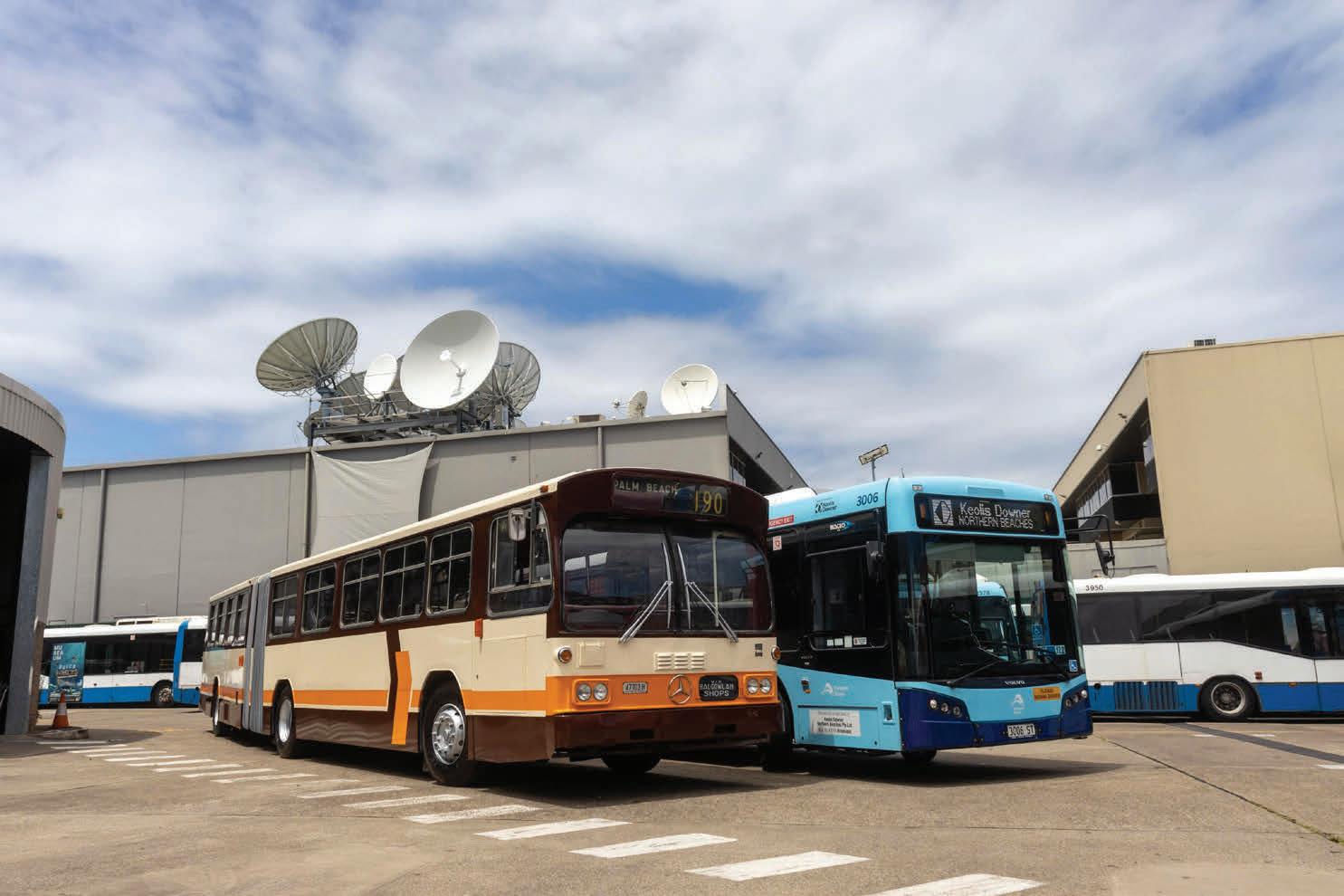
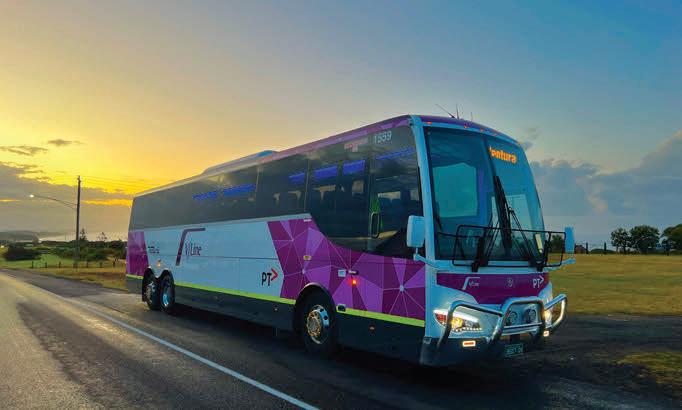
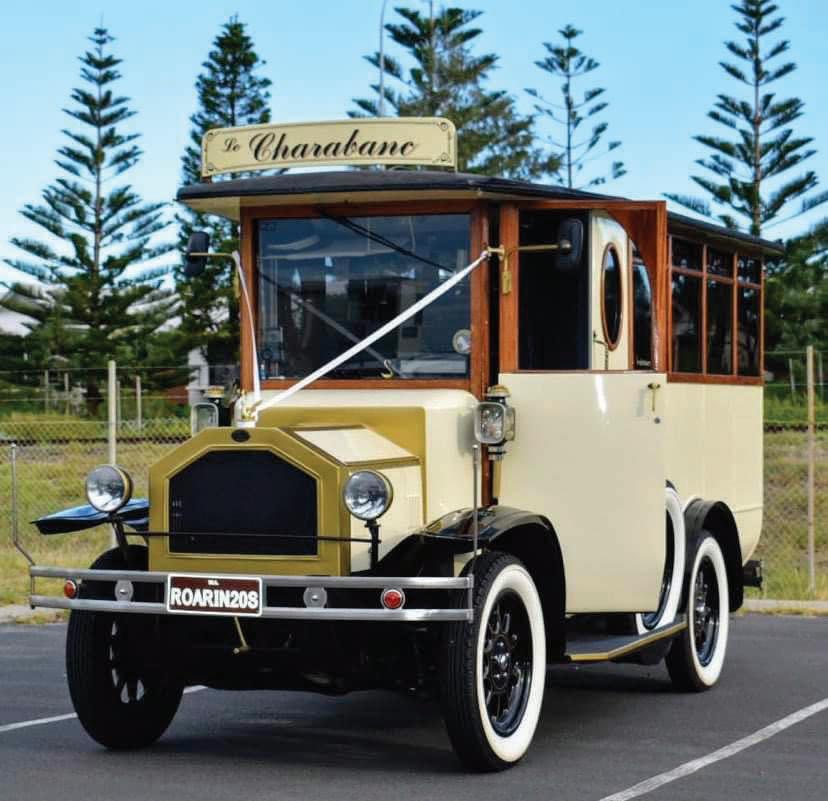
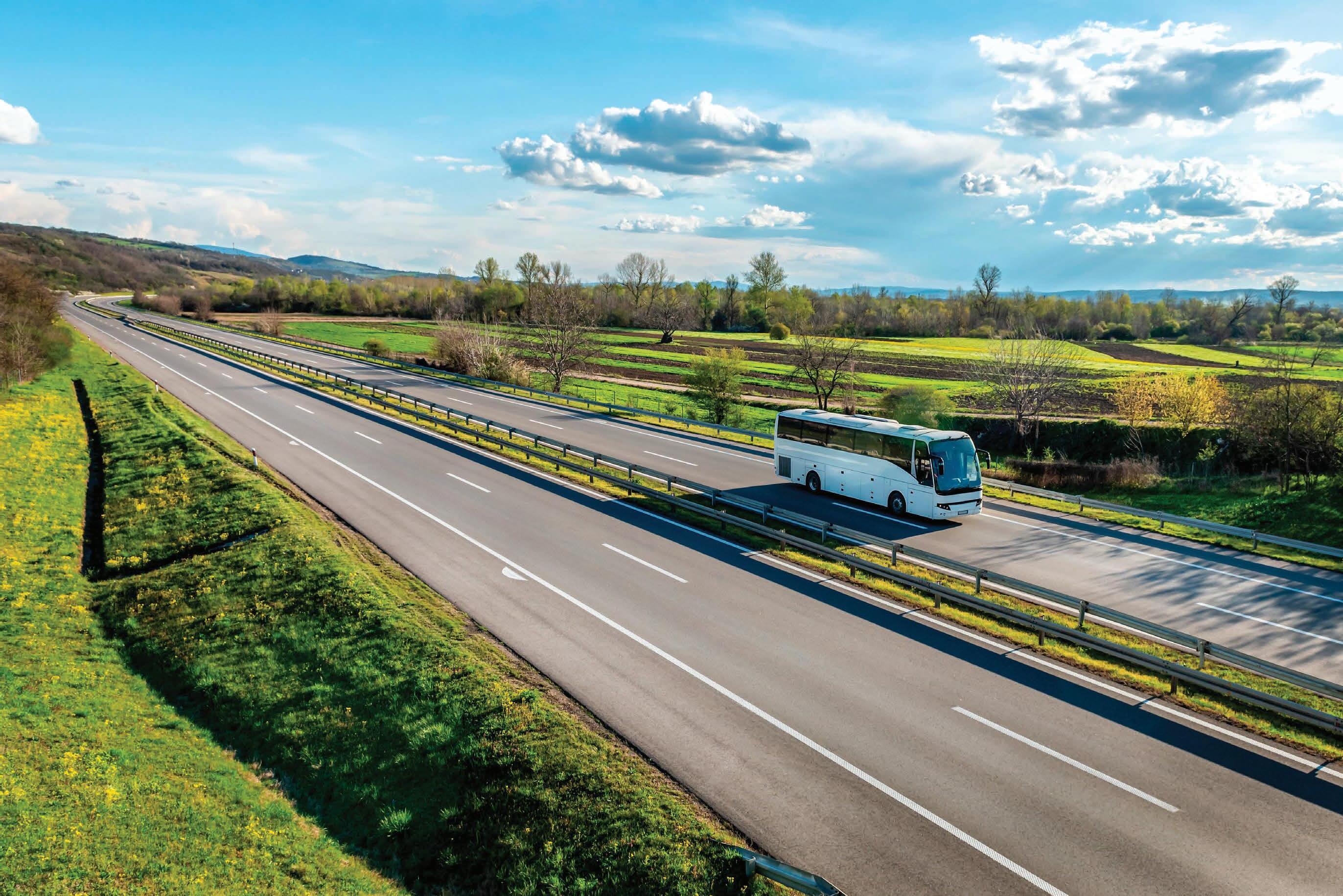
Send in your best bus or coach photos to feature in next month’s magazine.
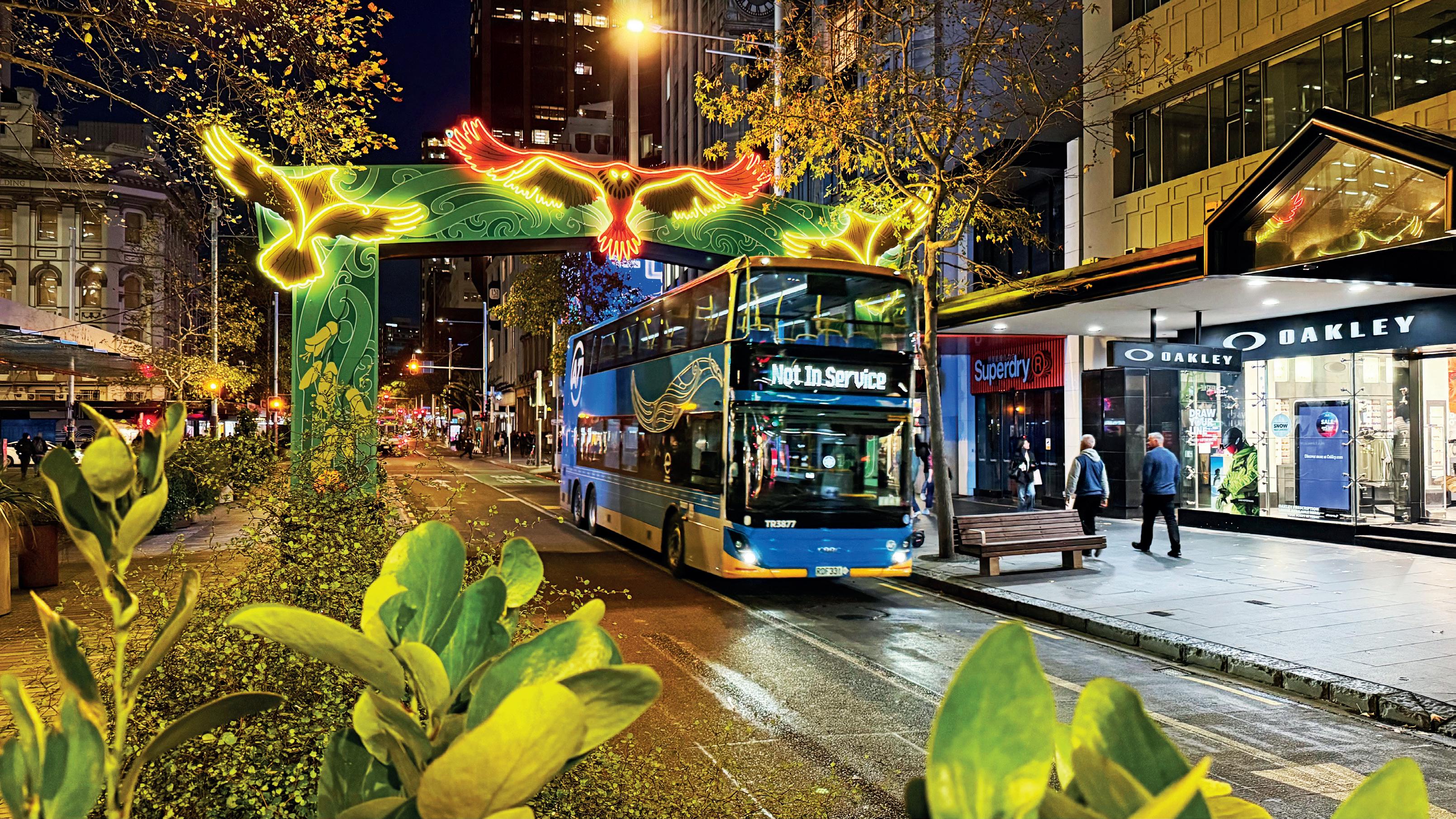


TWINNER
Matariki marvel
Grady Weatherley-Connell has come back with a vengeance, taking out the Best Bus title for a second time
here’s plenty of things that can make a bus photograph pop. From scenic landmarks, bright blue skies or perfect angles, the options are truly endless.
Here at the ABC Best Bus competition, we’ve seen our fair share of stunning Aussie nature and perfectly lined-up fleets, with the July winner showcasing a slightly different side to the industry.
We had it all this month, each entry taking us to a different part of the world and making the choice of Best Bus winner incredibly hard.
Ultimately, after a tough battle, Grady Weatherley-Connell came out on top, his dynamic shot transporting us to the streets of Auckland.
It was a close call, with Robert McGregor’s stunning shot of a Ventura coach at Chesterfield Farm showcasing how natural light and buses are an ideal duo.
Joshua Adams’ entry of a Bayside Coaches coach had all the relevant elements; blue skies, vintage brick and a charity shout-out to top it off. Nature and infrastructure came together for Shuo Tang’s snap of a Marcopolo coach in front of Marvel Stadium, nipping at WeatherleyConnell’s heels, while Matthew Healey sent through a bunch of incredible images of Red and White Coaches vehicles, each one better than the last.
At the end of the day however, Weatherley-Connell came through
Above: Grady WeatherleyConnell came out on top, his dynamic shot transporting us to the streets of Auckland
for his second Best Bus victory.
“This shot is of a TranzUrban 3877, a CRRC eD12 MAX, travelling along Auckland’s Queen Street,”
Weatherley-Connell told ABC
“It was on a winter evening passing under the Tūrama arch installed for Matariki.”
As the winner of Best Bus July, Weatherley-Connell has received a free 12-month subscription to ABC Magazine, while the winning photo is also being shown off as ABC ’s Facebook cover photo for the whole of the month.
Don’t forget to send through your Best Bus photos for August and throughout 2025 via email and keep an eye on our Facebook page for more details!
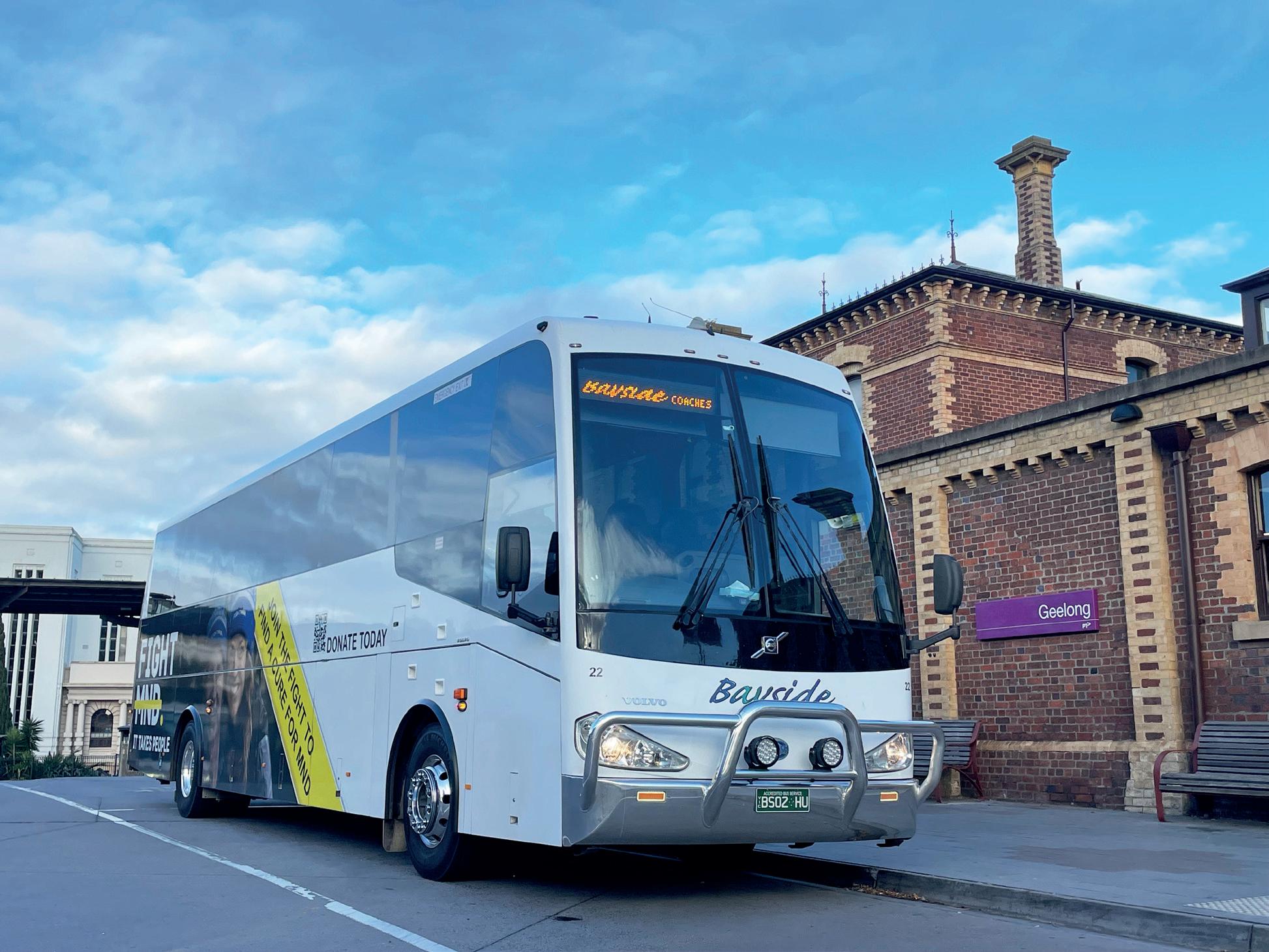
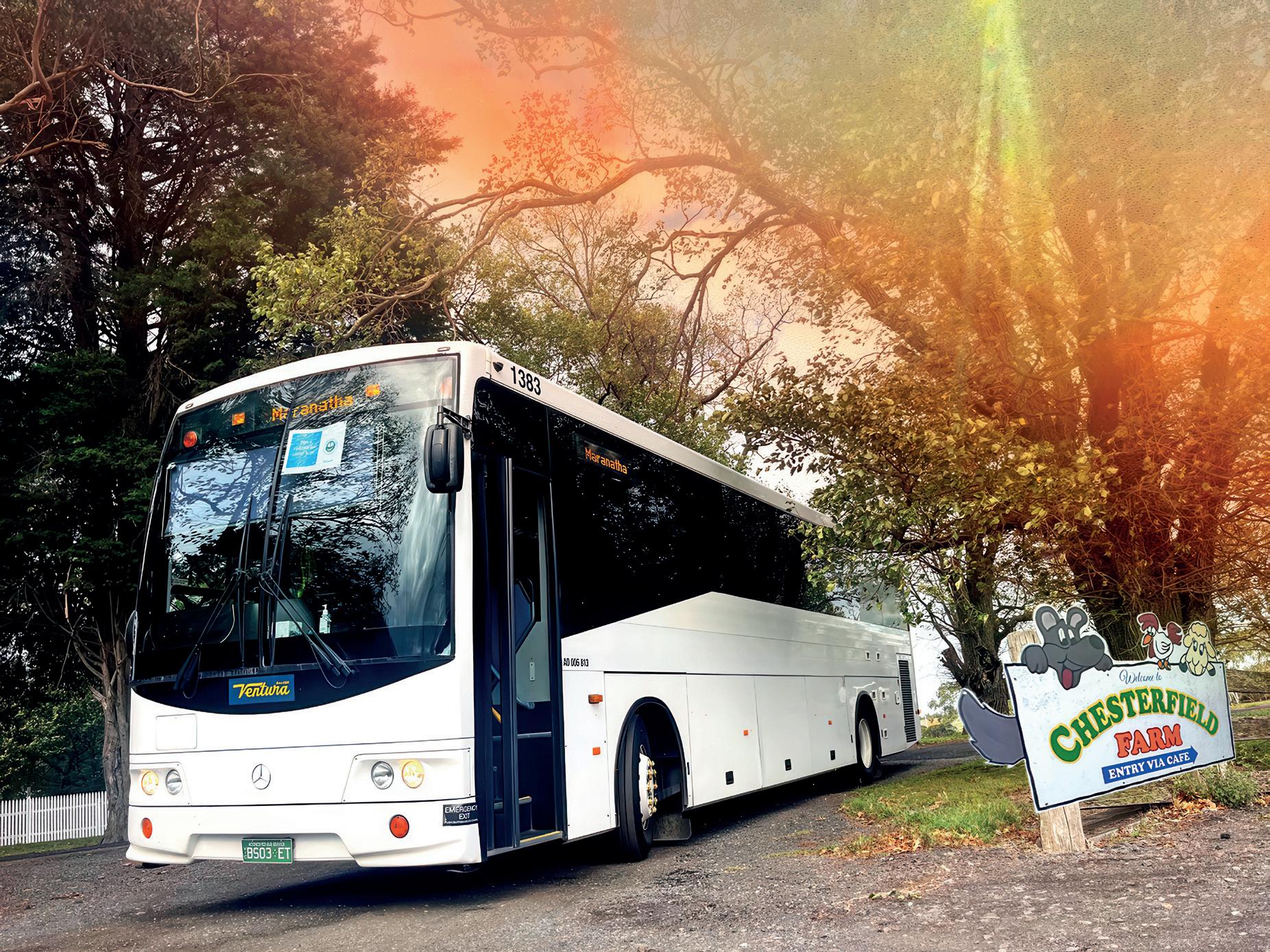
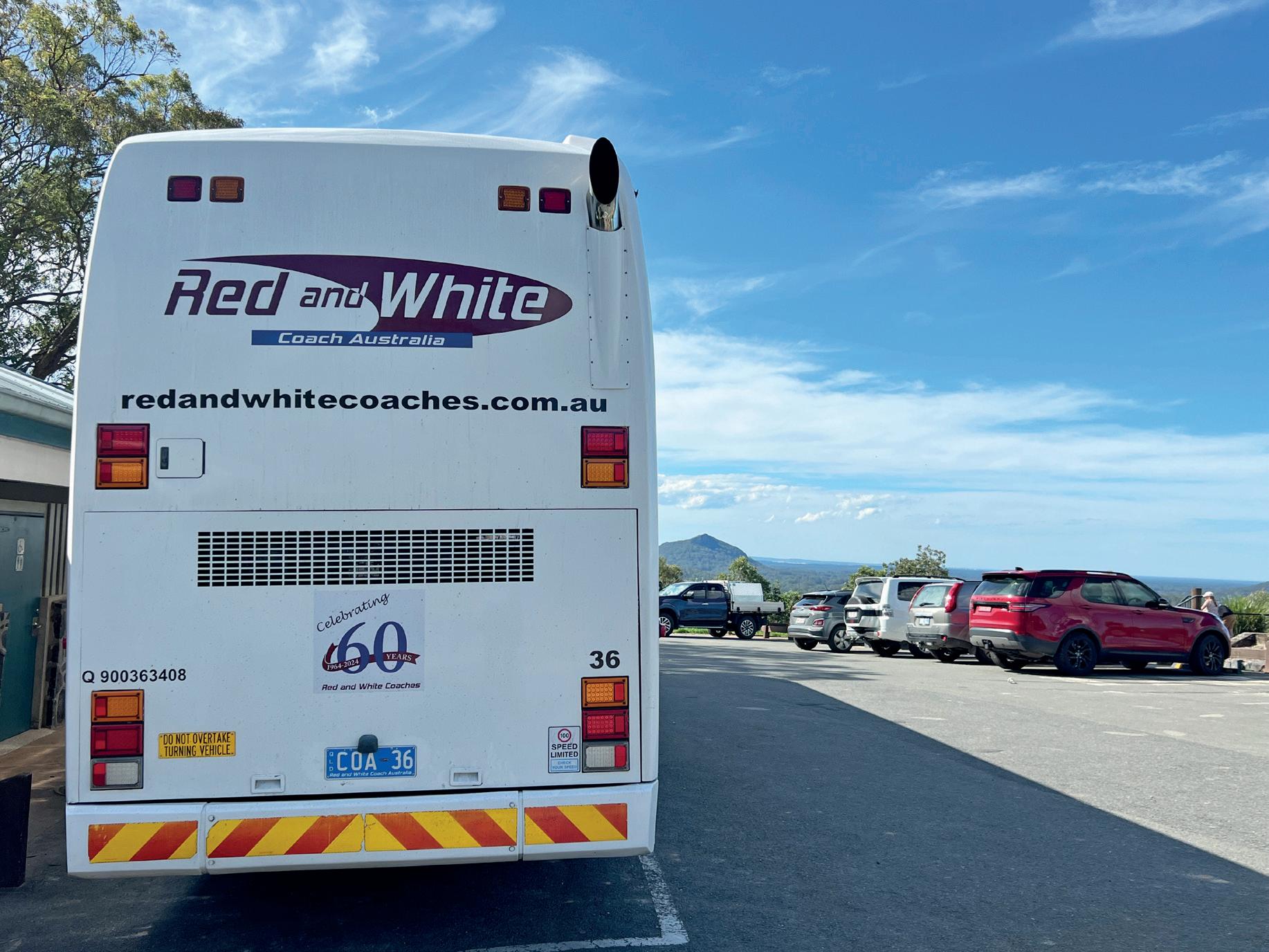
Left: Joshua Adams’ entry of a Bayside Coaches coach had all the relevant elements; blue skies, vintage brick and a charity shout-out to top it off
Right: Robert McGregor’s stunning shot of a Ventura coach at Chesterfield Farm showcases how natural light and buses are an ideal duo
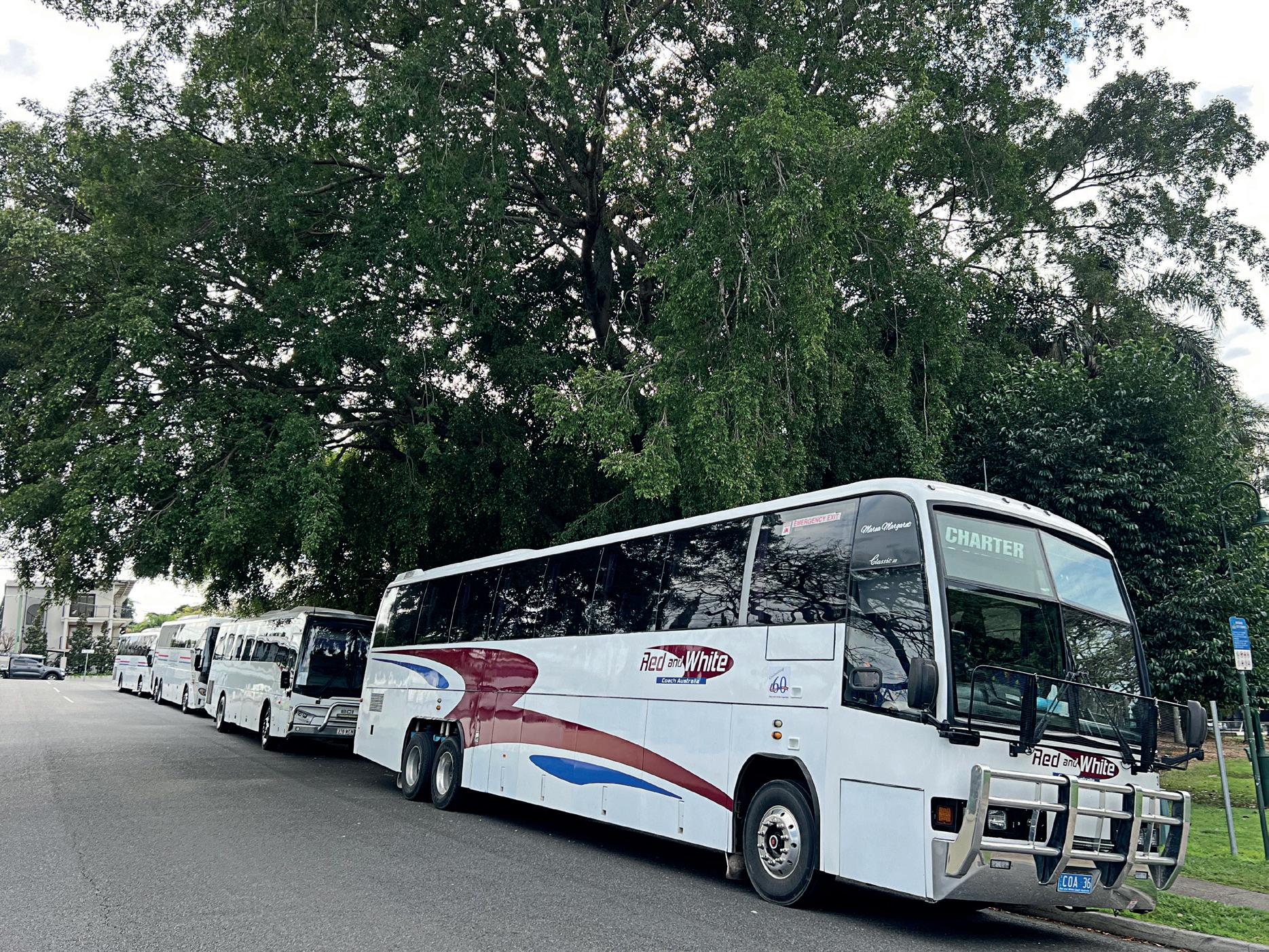

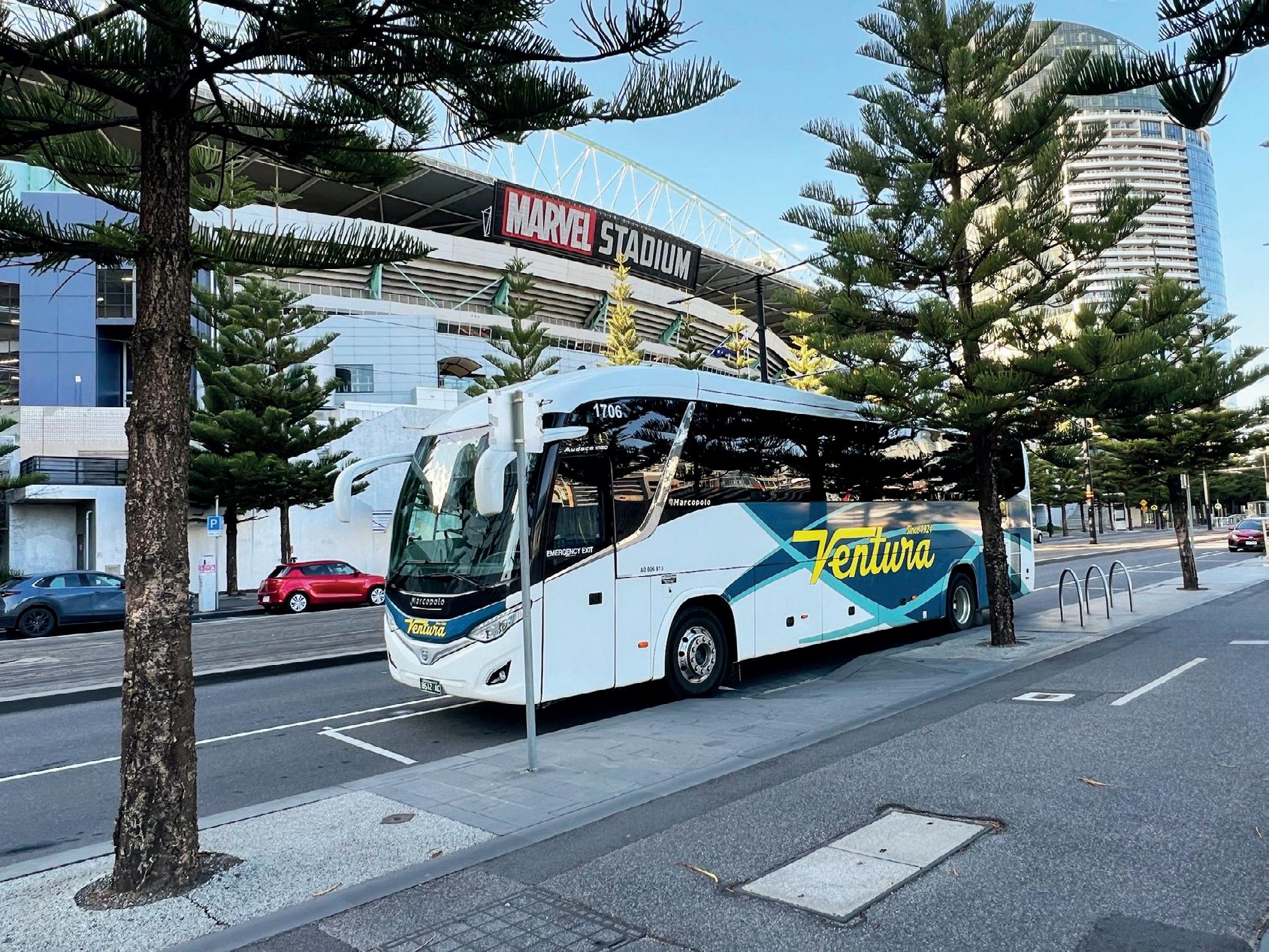
Right: Nature and infrastructure came together for Shuo Tang’s snap of a Marcopolo coach in front of Marvel Stadium
Left & Above: Matthew Healey sent through a bunch of incredible images of Red and White Coaches vehicles, each one better than the last
Fast finish
June’s bus and coach deliveries came home with a wet sail to ensure the end of the financial year was a productive one for the industry
The Australian bus and coach industry has continued its momentum into the end of the financial years. ABC ’s latest deliveries data, sponsored by Kempower, recorded 157 units in June, maintaining momentum and mirroring the 158 deliveries in June last year.
In the chassis sector, Volvo was yet again the major player, recording another 52 deliveries to take out the title. It finished comfortably ahead of Yutong, who combined the 22 heavy bus deliveries with the 12 light bus units, and Scania (25 deliveries). Outside of the top three, Custom Denning (11), I-Bus (11 light bus deliveries) and GTK (10) registered impressive months, while BLK (six), MAN (three), BCI (three) and Wrightbus all put units on the board.
As usual, the bodybuilder market belonged to Volgren, with the supplier narrowly beating out Yutong (34 deliveries, consisting of 22 heavy bus and 12 light bus) to take June honours courtesy of 37 deliveries. Irizar maintained third place with 17 deliveries ahead of BCI (14), Custom
Coaches (four) were all consistent, while the final five deliveries were shared between four brands.
The seating side was all about McConnell, with the Victorian-based powerhouse churning out 52 deliveries in June. However, its victory wasn’t as easy as it has achieved in other months, as Sege continued its surge to finish with 39 units in the month. In the race for third, StyleRide (28) narrowly beat out Yutong (25), while APM recorded the 11 units and both Marcopolo and BCI had the one apiece.
Coachair confirmed its place at the top of the air-conditioning market as it romped to 38 deliveries in June. Cling-Yutong snagged second place with another 34 deliveries, while Songz rose to claim third spot with 21 deliveries. In a tight middle spot of the market, Spheros had 18 deliveries, Hispacold the 17 and Thermo King cooled to nine. In the final run home, Konvekta (eight), Denso (seven), Valeo (three) and MCC (two) all maintained consistency.
Queensland fought off a fierce challenge from its State of Origin nemesis in the state-based battle,
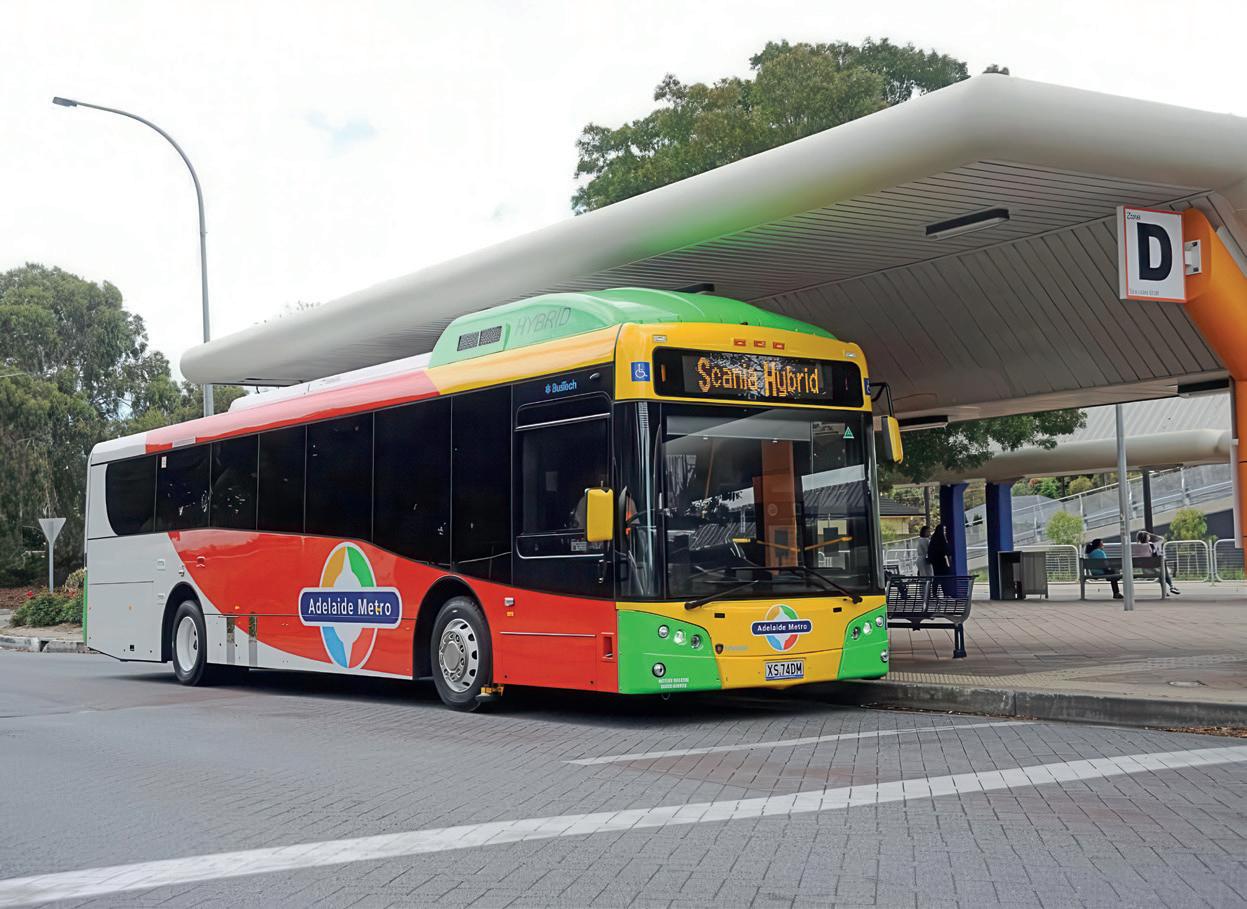
Western Australia finished with 25. Outside of the main four states, South Australia and the ACT both had the eight deliveries apiece.
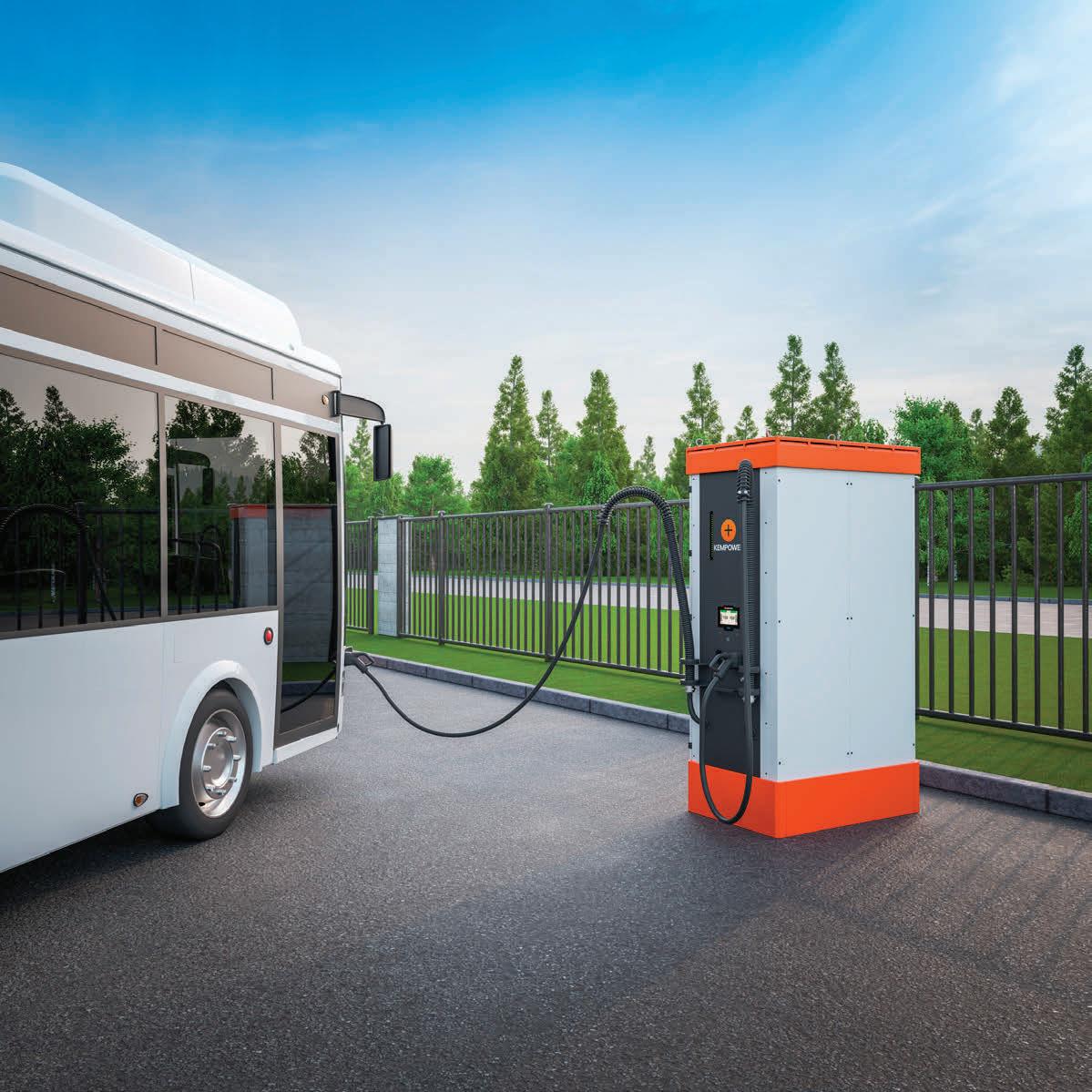
compared to NSW’s 40. Next best
Finishing with the diesel and zero-emissions vehicle comparison – 119 of the 157 deliveries belonged to the former power source. In that space, Volvo dominated with 45 deliveries, while Yutong (26) and Scania (23, plus two more diesel hybrid units) were also prominent. There were 38 zero-emissions deliveries, featuring 36 on the electric side (Custom Denning’s 11 units finished ahead of GTK’s 10, Yutong’s eight and Volvo’s seven) and two on the hydrogen side courtesy of Wrightbus.
Smart charging for smarter fleets.
Kempower’s modular DC fast chargers are powering electric bus depots across Australia and beyond.
Built for scale, engineered for uptime — and designed with real-life operators in mind.
Discover more at kempower.com
Scania recorded another two diesel hybrid deliveries in June. Image: Scania Australia
As usual, the bodybuilder market belonged to Volgren, with the supplier narrowly beating out Yutong (34 deliveries, consisting of 22 heavy bus and 12 light bus) to take June honours courtesy of 37 deliveries. Irizar maintained third place with 17 deliveries ahead of BCI (14), Custom Denning (11), I-Bus (11 light bus) and GTK (10).
The seating side was all about McConnell, with the Victorian-based powerhouse churning out 52 deliveries in June. However, its victory wasn’t as easy as it has achieved in other months, as Sege continued its surge to finish with 39 units in the month.
Finishing with the diesel and zero-emissions vehicle comparison – 119 of the 157 deliveries belonged to the former power source. In that space, Volvo dominated with 45 deliveries, while Yutong (26) and Scania (23, plus two more diesel hybrid units) were also prominent.
In the chassis sector, Volvo was yet again the major player, recording another 52 deliveries to take out the title. It finished comfortably ahead of Yutong, who combined the 22 heavy bus deliveries with the 12 light bus units, and Scania (25 deliveries). Outside of the top three, Custom Denning (11), I-Bus (11 light bus deliveries) and GTK (10) registered impressive months, while BLK (six), MAN (three), BCI (three) and Wrightbus all put units on the board.
Former glory
Driven by passion, Hamish Withington is on a mission to rescue and restore vintage buses to keep Australia’s transport history alive
When it comes to passion projects, some people collect stamps, others tinker with model trains or scour markets for rare coins. But for one former bus driver, his idea of a good time involves tracking down long-forgotten buses from decades past and restoring them to their former glory.
Hamish Withington is no stranger to the industry, spending years running pub shuttles on Friday and Saturday nights before starting up his own business Toowoomba Transit Coaches in 2006.
After selling the business in 2010 and working in the rail industry for the past two decades, Withington says there was a nudge to get back in touch with the bus side of him.
“It’s always been on my manifesto to restore a couple of buses of interest to me,” Withington told ABC
that held a personal connection or weren’t currently represented in preservation.”
That manifesto became reality when a friend sent him a Marketplace link one morning in 2022.
“It was an old Albion Viking that I grew up with. It was the first bus I remember travelling on as a kid with my mum to go to town and was also the first crash gearbox bus I learned to drive in,” he says.
Although it was a rolling shell that had been turned into a motorhome and had a missing engine and gearbox, for $2,000, Withington just had to have it.
“I thought, you know what? I’ve always wanted this thing, so I bought it,” he says.
The restoration has been a test of patience and persistence, especially sourcing elusive parts.
“I’m struggling to find a six-speed
Below: Hamish Withington
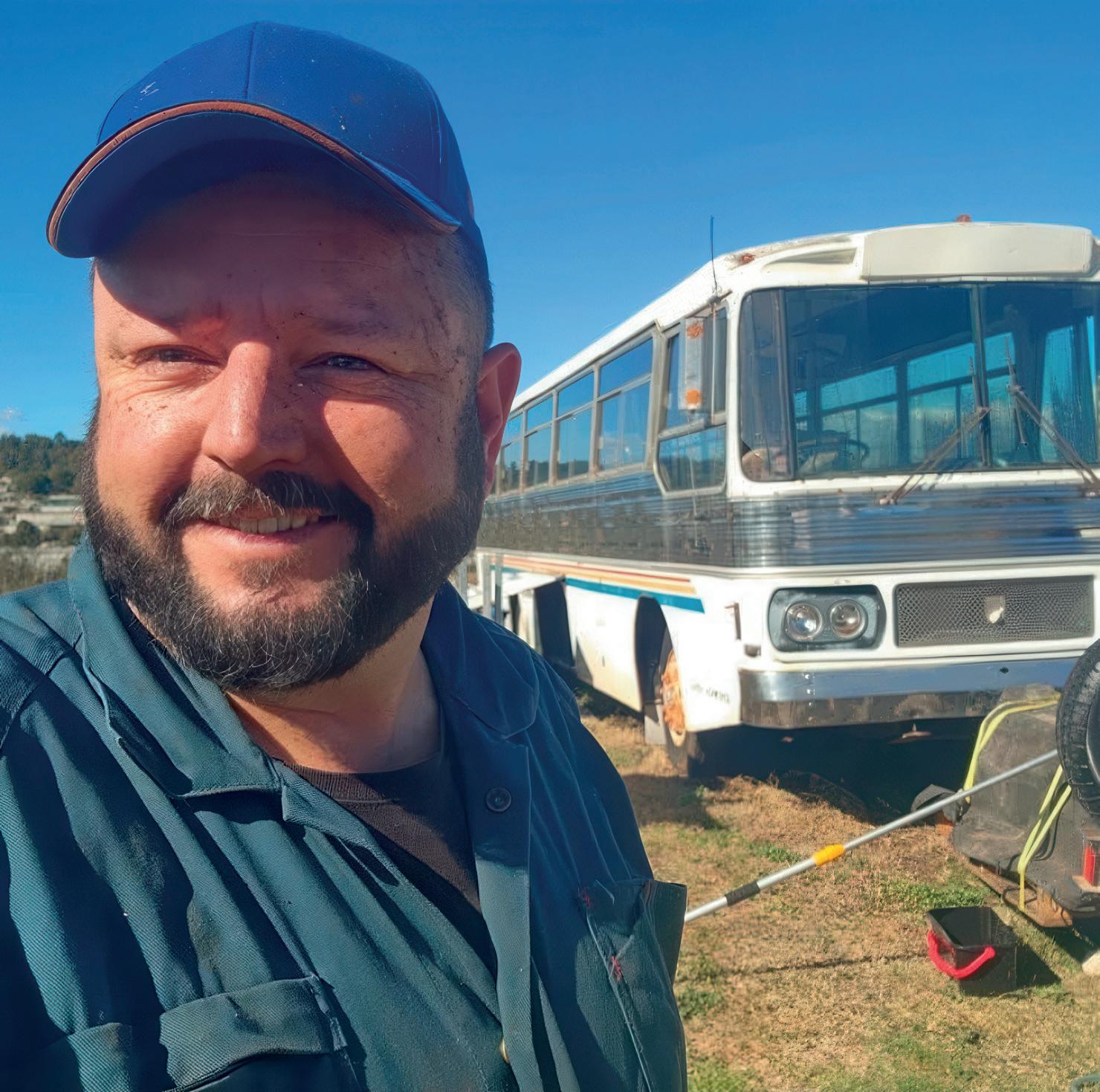
the form of a Bedford with a prized Hedges body, found in Victoria.
“It was still a running vehicle, and had escaped the motorhome conversion thing only by the skin of its teeth,” Withington laughs.
“It was built new for Glenorie Coaches in Sydney, but it only survived there for about two years because of the very hilly terrain.
“Then it was sold to Tomaino’s in Victoria, where it spent the next 20 years of its service life before moving on to Alpine Coaches and then Frank Ivone.”
Since acquiring both vintage finds, Withington has started up a Facebook page to share his restoration journey, posting pictures, updates and asking for information about the history of the buses.
Connecting with the community has been one of the project’s highlights.
“The reaction has been overwhelmingly brilliant. People have reached out with stories of them smoking up the back of the bus, or realising their Dad drove it back in the day,” Withington says.
For him, these aren’t simply just restoration projects, they’re about preserving a disappearing part of Australia’s transport story.
“To the best of my knowledge, there’s still not one single Albion Viking in preservation anywhere,” he says.
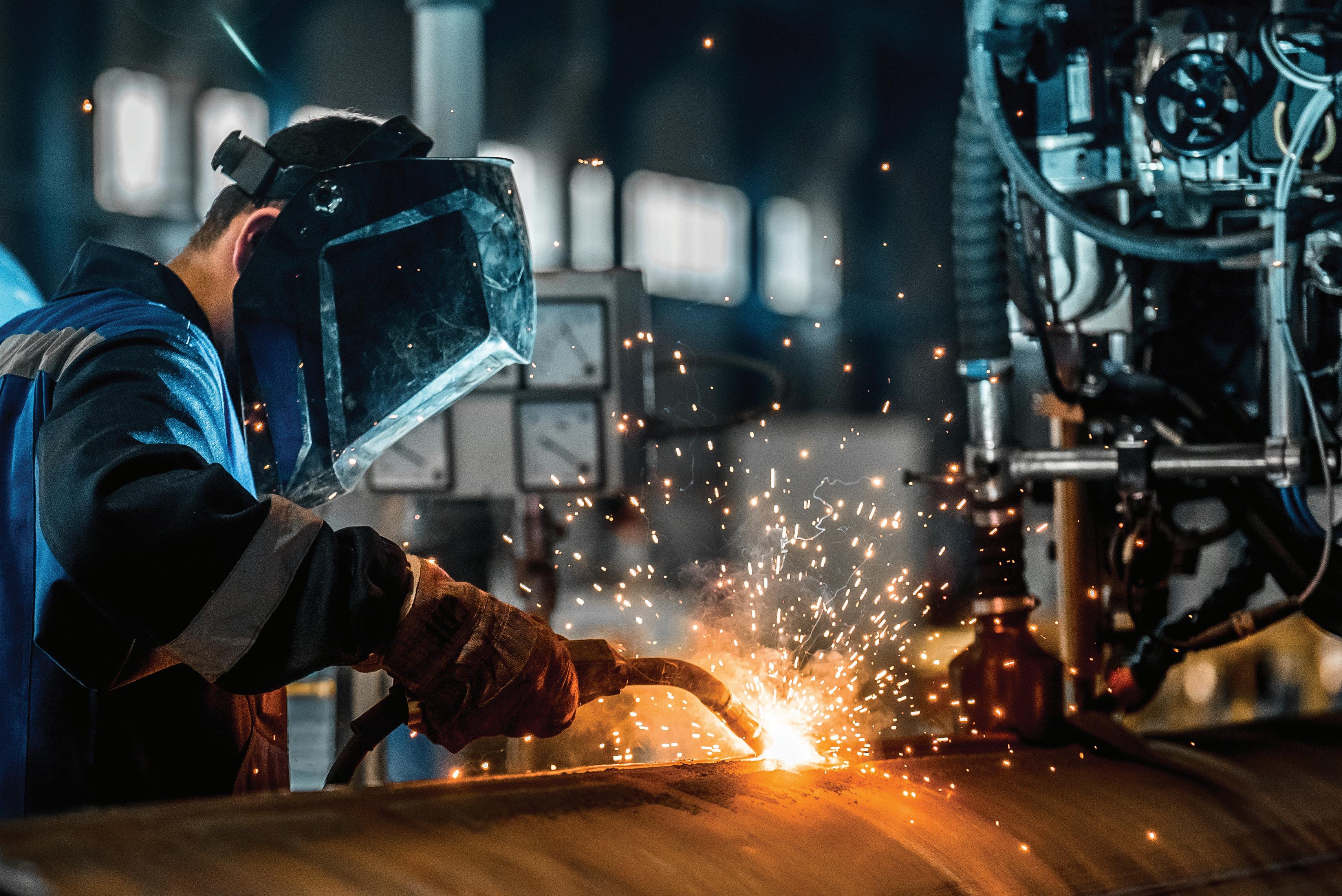
“My ultimate goal is to have them both fully restored as buses in as close to their original state as I can get them, and when my time expires – hopefully a very long time from now – they will go to the Brisbane Transport Museum.”
There, they’ll serve as a tangible reminder of an era before seatbelts, air conditioning, or even floors were standard.
“It’s about the legacy,” he says. “To show the evolution of bus travel and keep those stories alive.”

